The Taste of Puglia
In Puglia, food isn’t just something you eat – it’s how you understand the region itself. Every dish tells a story of the seasons, the land, the sea, and the people who live here. This is Italy’s largest olive oil producer, its breadbasket, the country’s second-biggest wine region – and the birthplace of burrata.
At the heart of it all is cucina povera – a cuisine born of necessity, making the most of what was available – and now one of Italy’s most celebrated food traditions. Recipes born from frugality have become symbols of pride. In an age of ultra-processed food, Puglia’s dishes stand out as simple and seasonal. Hearty, healthy, and sustainable. Rooted in tradition, yet perfectly suited to today.
From pasta scorched in its pan in Bari, to stuffed meat rolls sizzling on a braceria grill, to raw seafood eaten straight from the shell on a harbour wall, these are the dishes every visitor should try. They’re the foods locals still cook, order, and argue over.
These are the 20 must-eat dishes that define Puglia.
The Puglia Podcast
The Puglia Podcast is also available from Apple Podcasts, Spotify and wherever else you get your podcasts from.
How to use this Guide
If a dish tempts you, seek it out when you visit. Most of the restaurants we mention are listed in our city guides. Prefer something more structured? Use our itinerary planning guide to create your own foodie journey through Puglia. If you’d rather follow our lead, there’s a suggested Eat Puglia Itinerary at the end of this feature.
Remember that many of these dishes are seasonal. What you’ll find in spring won’t be the same as in summer or autumn. That’s part of the joy of eating in Puglia — the menu shifts with the harvest, the sea, and the festivals.
Must Eat Puglia | 20 of Puglia’s Best Dishes
Pasta Classics
In Puglia, pasta has its own identity. It is made without egg — once a luxury to be sold, not eaten — and relies instead on durum wheat semolina from the Tavoliere plain and the Murge plateau. That sturdy dough is perfect for hand-shaping orecchiette, the little “ears” that have become an icon of the region. Salento’s ciceri e tria, with its mix of boiled and fried pasta, shows the North African influences that crossed the Mediterranean. And Bari’s spaghetti all’assassina — invented in the 1960s and still rare outside Puglia — proves that tradition here can also be daring. These are pasta dishes born of this land, its trade routes, and its resourcefulness.

Orecchiette con cime di rapa | Puglia’s signature pasta
Where to eat it: This is the region’s defining dish, cooked during winter and early spring in every Puglia kitchen, when cime di rapa are in season.
What it is: Orecchiette, “little ears,” are made from just semolina and water, their cupped form perfect for sauce. Menus often translate cime di rapa literally as “turnip tops,” but the vegetable is actually broccoli rabe, a bitter leafy brassica. The pasta is cooked with the greens, garlic-fragranced olive oil, anchovies, and chilli. Its sharp bitterness can be an acquired taste, though some recipes add cherry tomatoes for balance.
Why try it: This dish is cucina povera distilled — simple, seasonal, resourceful. It captures Puglia on a plate: the chew of durum wheat pasta, the assertive greens, the savoury anchovies. It is also tied to local identity. The nonne of Bari Vecchia still make orecchiette by hand outside their homes, a tradition that has become a living symbol of the region.
Puglia Guys tip: Parmesan doesn’t belong here. The local cheese is cacioricotta, while poorer households once used pangrattato — toasted breadcrumbs — in its place, turning thrift into flavour.
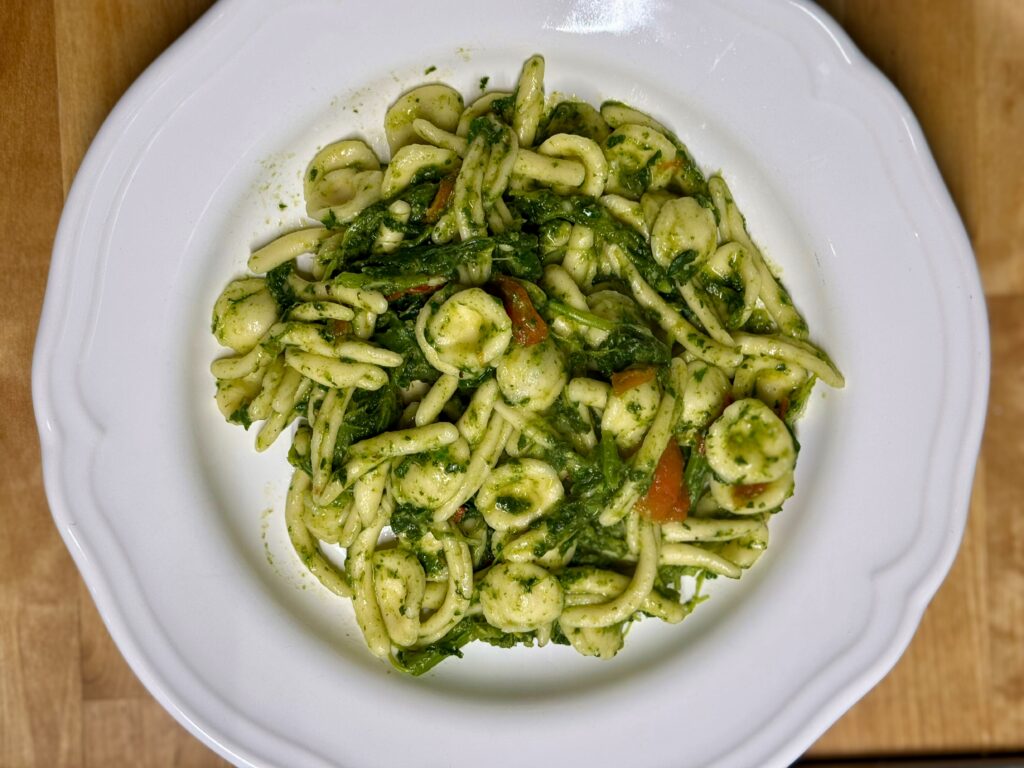
Other orecchiette dishes are available…
While orecchiette con cime di rapa is the most famous version, the shape is versatile. Across Puglia you’ll find it served with a simple tomato sauce (often for as little as €6), paired with seafood in coastal towns, or in summer as orecchiette alla crudaiola — tossed with fresh cherry tomatoes, basil, cacioricotta, and olive oil. Its adaptability is part of what makes orecchiette the enduring emblem of Puglian pasta.
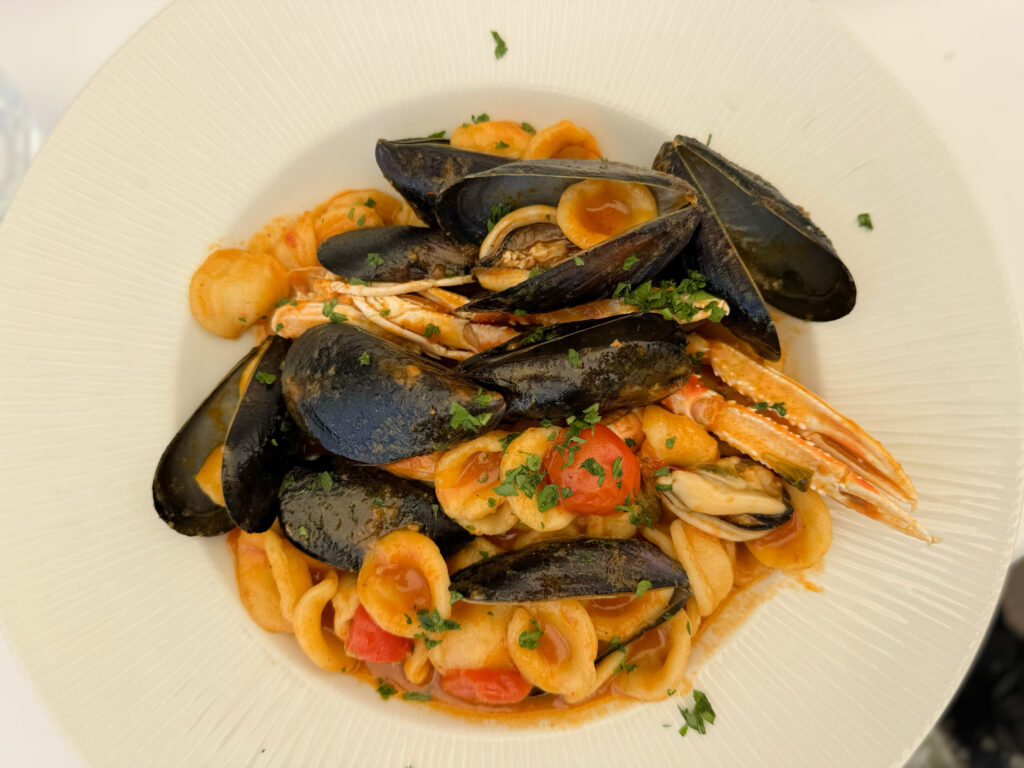
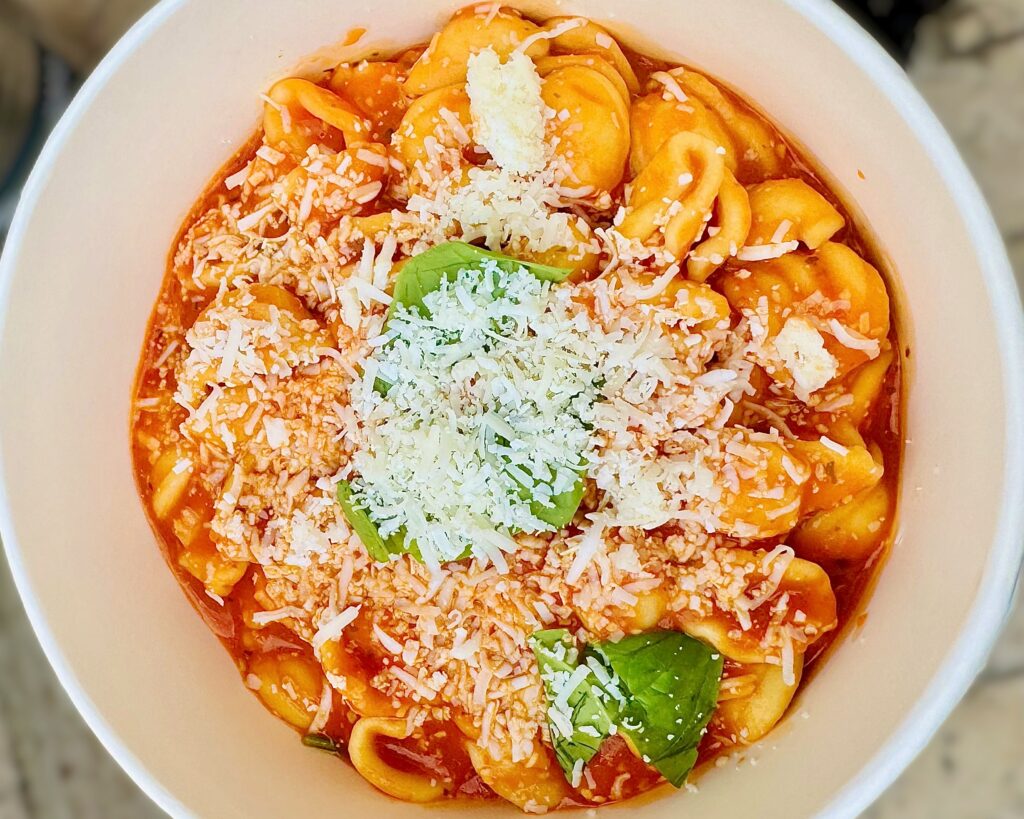
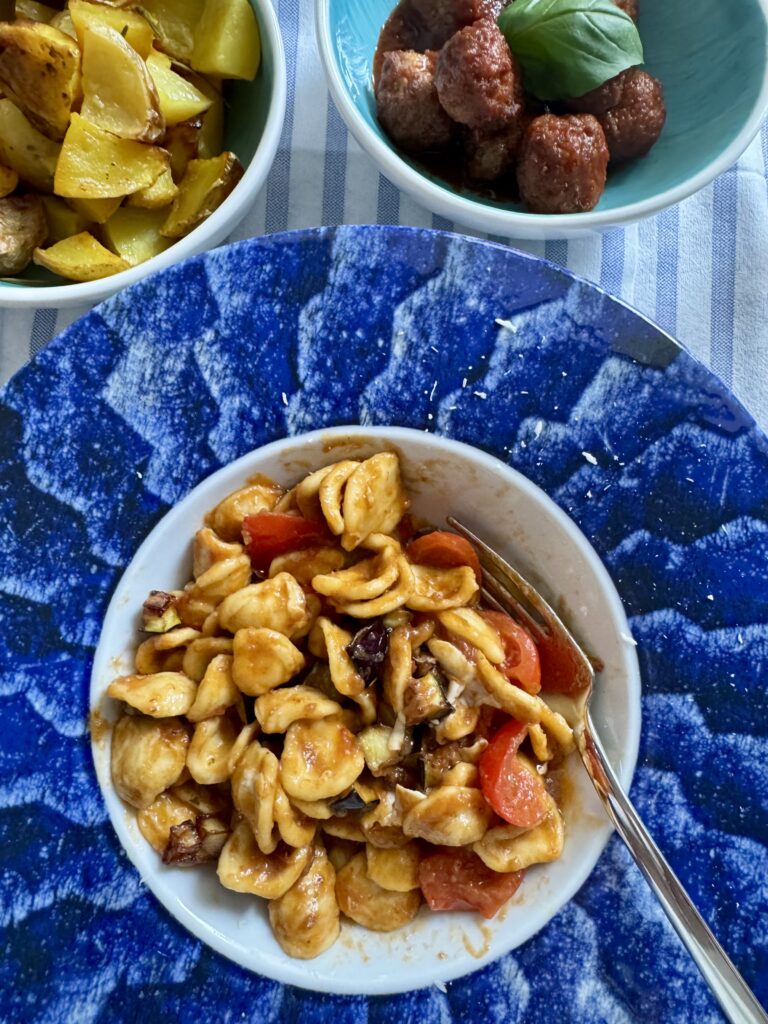
Spaghetti all’assassina | Bari’s “killer” pasta
Where to eat it: Bari is the home of assassina. Al Sorso Preferito helped establish it as a classic, while Urban Assassineria Urbana became famous after Stanley Tucci’s visit. Today it draws long queues and serves multiple variations, but in our view nothing beats the original. The more sauces and flavours you add, the further you stray from the taste and texture of classic assassina.
What it is: Spaghetti is cooked raw in an iron pan, first toasted until blistered around the edges in oil with garlic and chilli, then gradually simmered in tomato broth like a risotto. As the liquid reduces, the pasta burns against the pan, leaving it charred, smoky, and spicy.
Why try it: This is Bari’s rebellious pasta, breaking every Italian rule. Where the rest of Italy treasures al dente noodles cooked in abundant salted water, here the spaghetti is scorched and chewy, almost confrontational in flavour. To eat it is to taste Bari at its boldest.
Puglia Guys tip: Assassina should never arrive swimming in sauce. Look for uneven, blackened edges and a fierce chilli kick — that’s when you know it’s right.
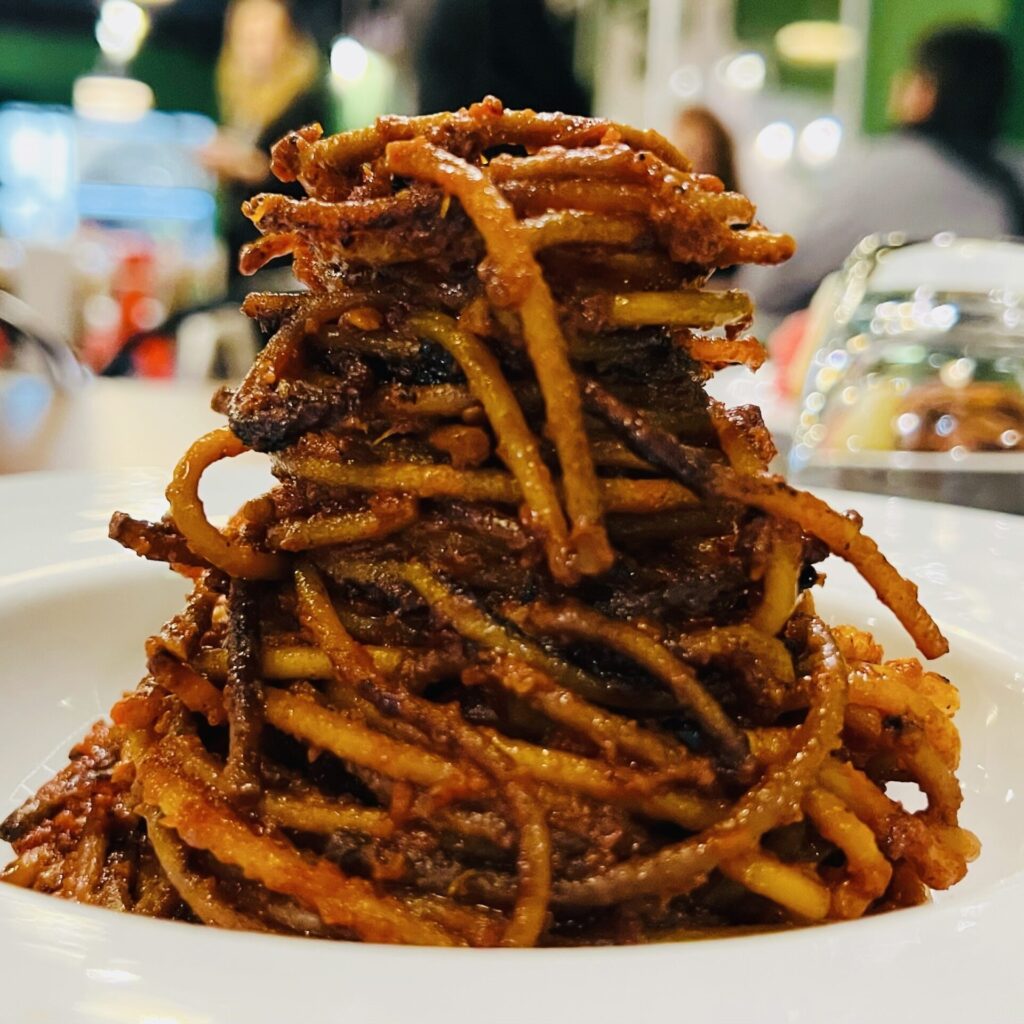


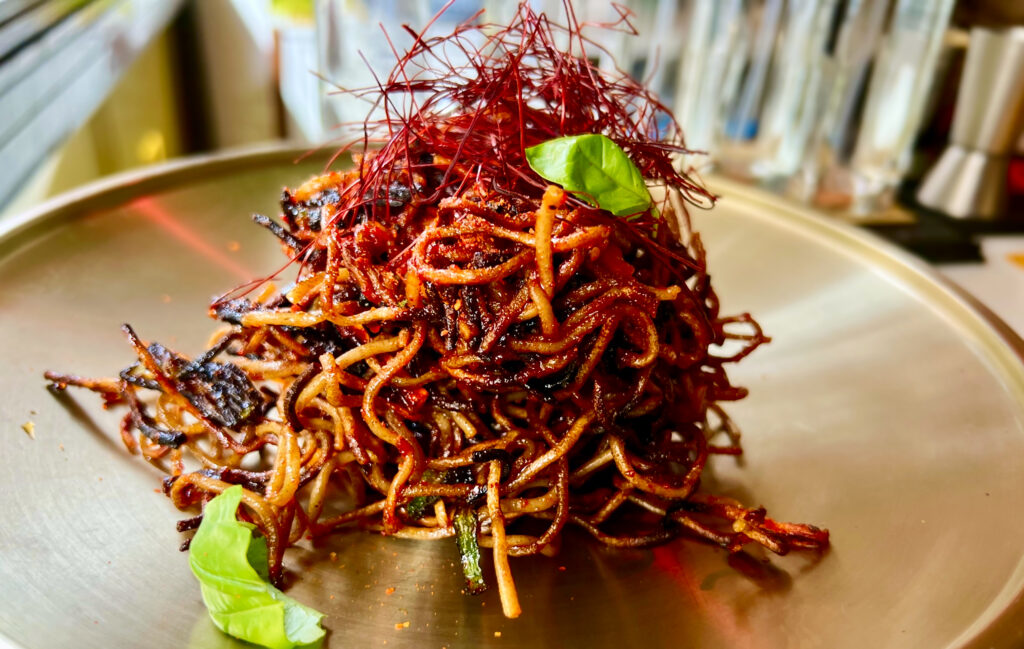
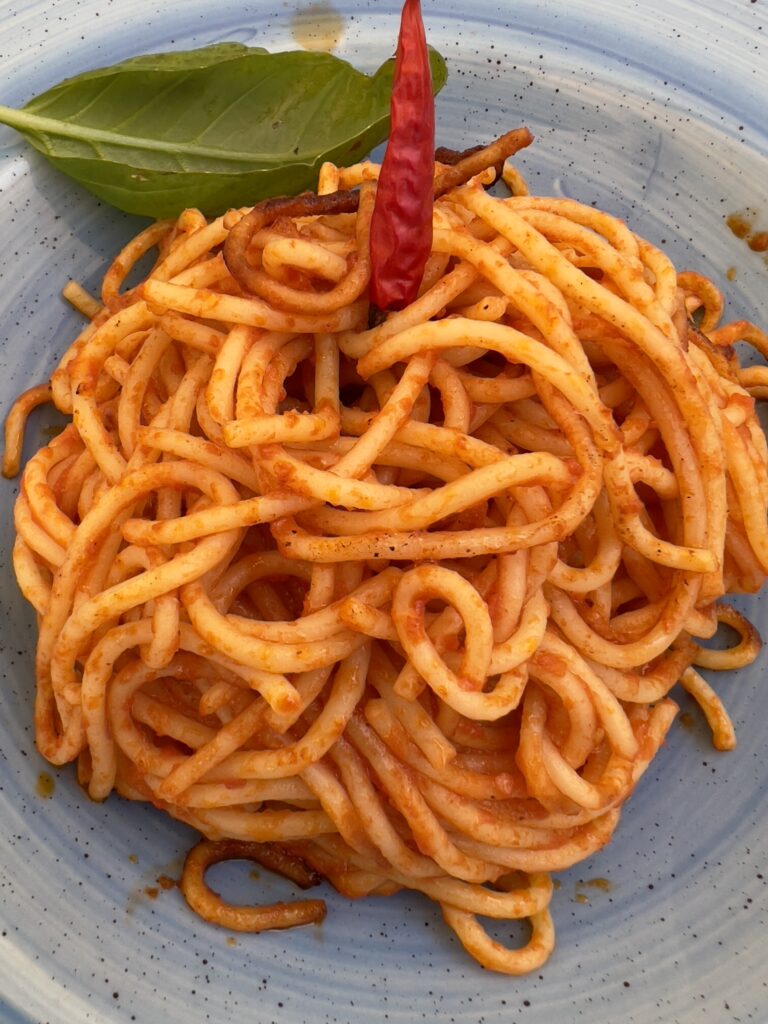
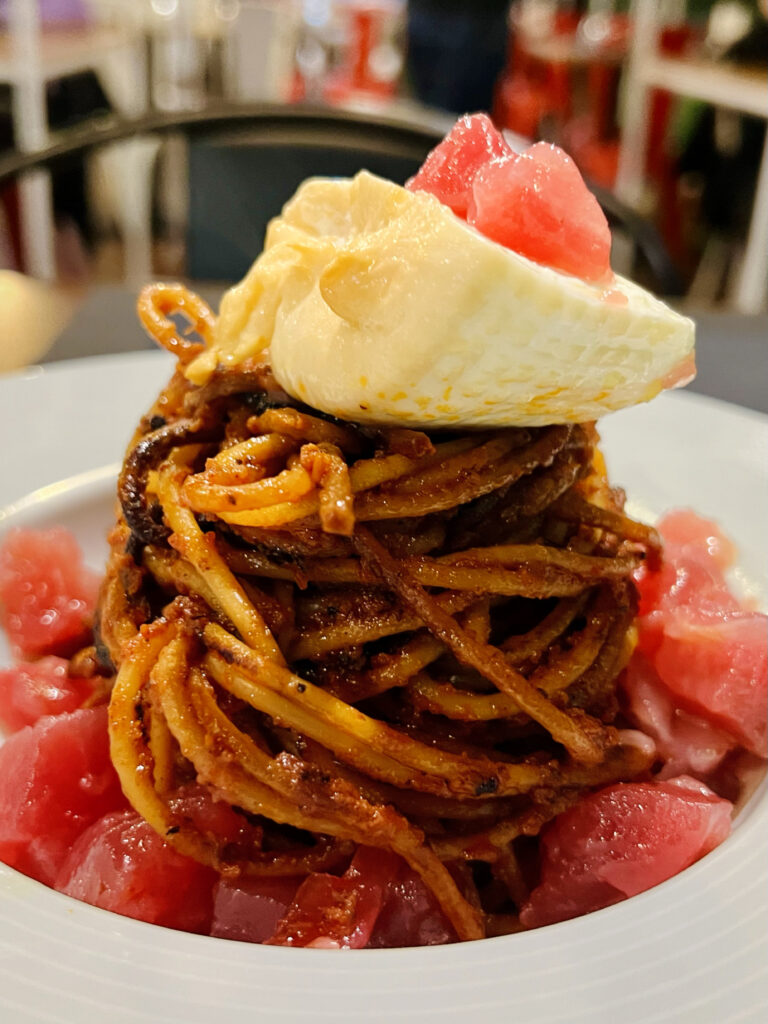
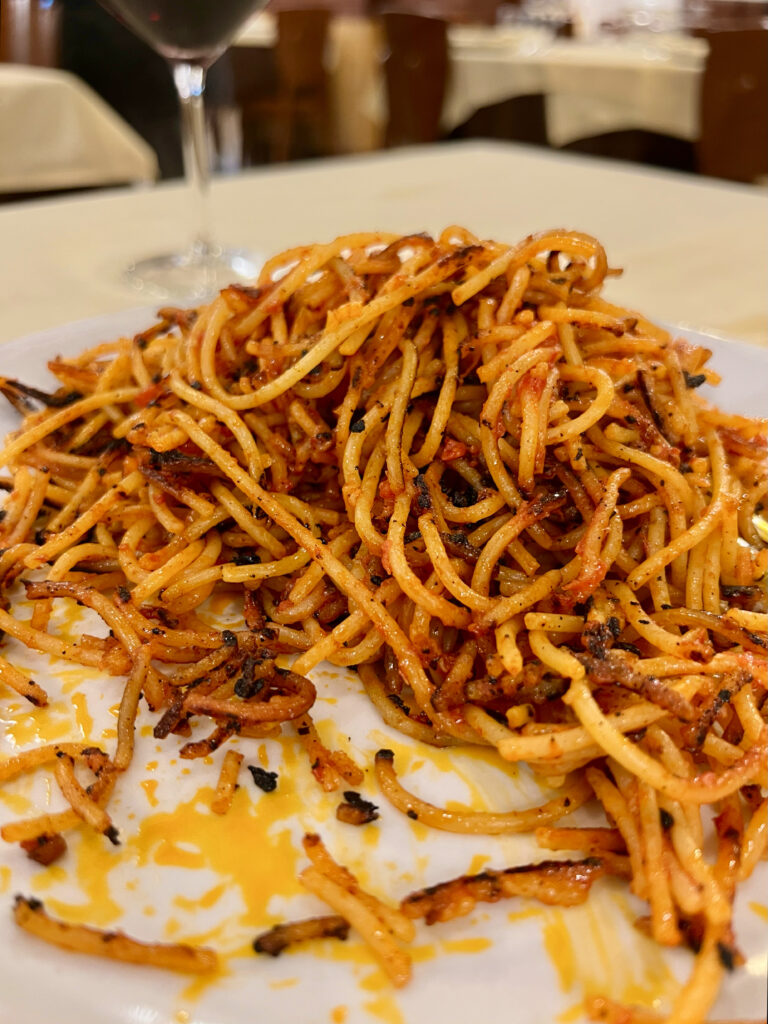
Other pasta dishes are available…
Food in Puglia is regional and hyper-local. Don’t come here expecting Rome’s carbonara or cacio e pepe — while you may spot them on some menus, they aren’t dishes of this region. The one “Italian” pasta we’ve never once found here (nor ever looked for) is chicken Alfredo — an Italian-American comfort food, as foreign here as a hamburger on a trattoria menu.
Instead, seek out the pastas that could only have been born in Puglia: Salento’s ciceri e tria, with its mix of boiled and fried pasta and chickpeas; sagne ‘ncannulate, long ribbons twisted to catch tomato sauce and ricotta forte. These are the dishes that tell Puglia’s story.

Street Food & Snacks
Street food in Puglia is more than a quick bite; it’s part of everyday life. In Bari Vecchia, you can still find sgagliozze — fried polenta squares sold straight from doorways by women who have kept the tradition alive for generations. Panzerotti, golden dough parcels oozing with mozzarella and tomato, are the ultimate comfort food, eaten in the street with an ice-cold Peroni or late at night after a concert. Focaccia barese, topped with cherry tomatoes and black olives, is sold in every bakery, its oil-rich crumb perfect for tearing apart on the go. And then there are taralli, crunchy olive oil biscuits baked in wood-fired ovens, as essential with a glass of wine as bread is at the table. These are foods of the piazza and the bakery, woven into daily rhythms and rituals.
Panzerotti | fried dough pockets with mozzarella and tomato
Where to eat it: Panzerotti are the street food of choice in Bari and central Puglia, found in bakeries, rosticcerie, and bars. The most legendary stop is El Chiringuito, a kiosk at Bari’s old port, where panzerotti and ice-cold Peroni (the pairing is non-negotiable) cost under €4. Queues form late into the night, especially at weekends. In Lecce and Salento they’re called calzone.
What it is: Small half-moons of dough, filled with tomato and mozzarella, folded, sealed, and deep-fried until blistered and bubbling. Bite into one and the filling spills out in a molten rush. Variations include ham, spinach, or minced meat, but the classic remains unbeatable.
Why try it: Panzerotti turn humble ingredients into one of Puglia’s most addictive foods. They’re cheap, filling, and bound up with Bari’s social life — everyone has a favourite panzerotteria and strong views on whose are best.
Puglia Guys tip: Start with the classic tomato and mozzarella. Fresh from the fryer, they’re dangerously hot — locals joke about the “lava effect.” Nothing beats eating one by the port with a cold Peroni in hand.
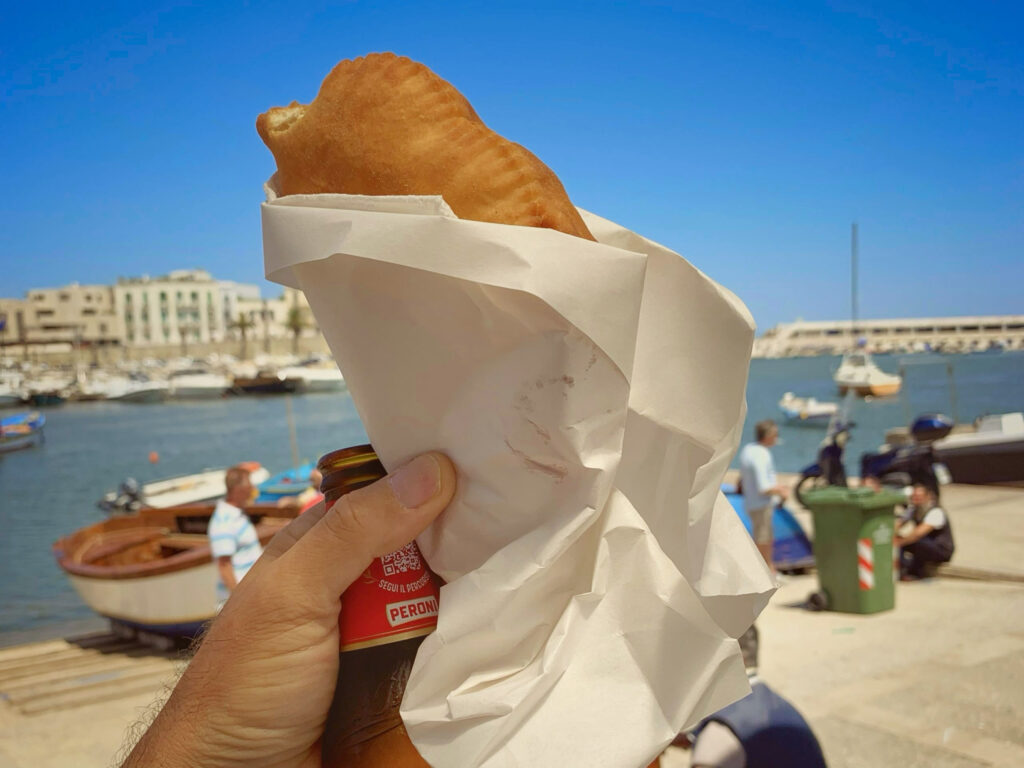
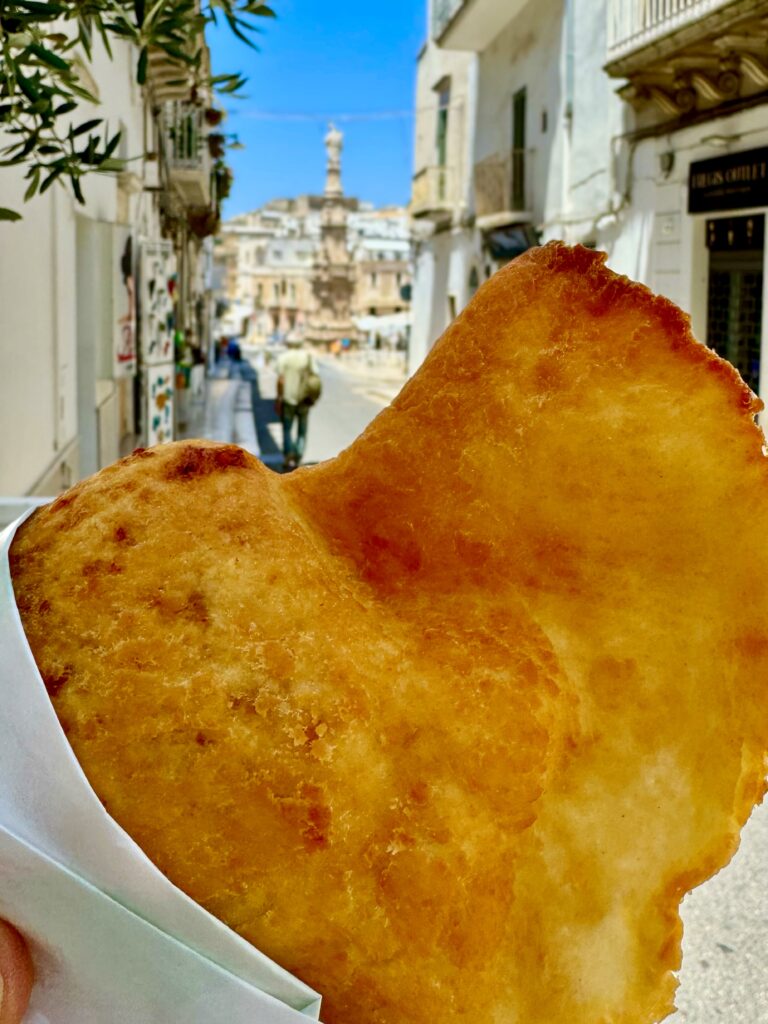
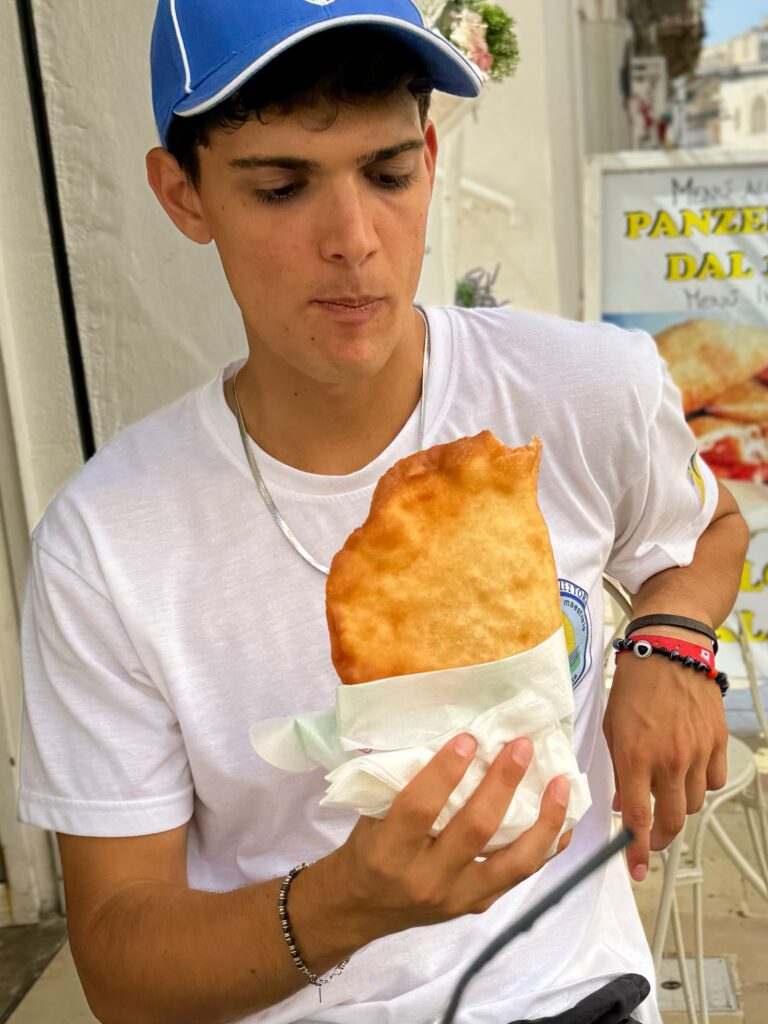
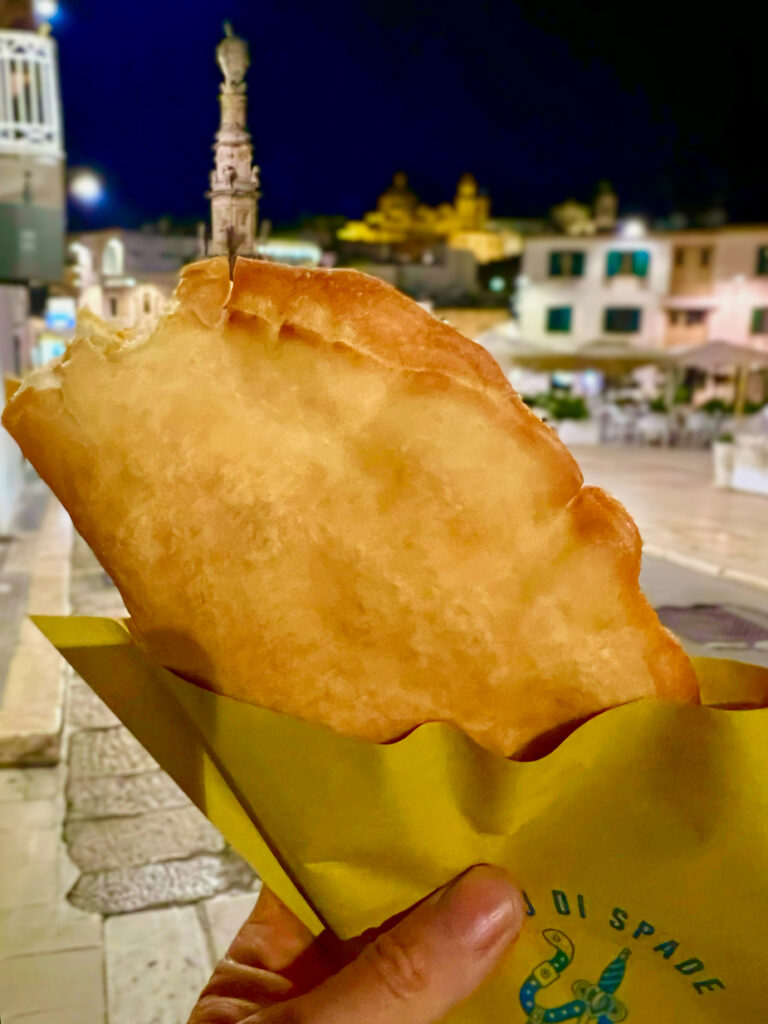
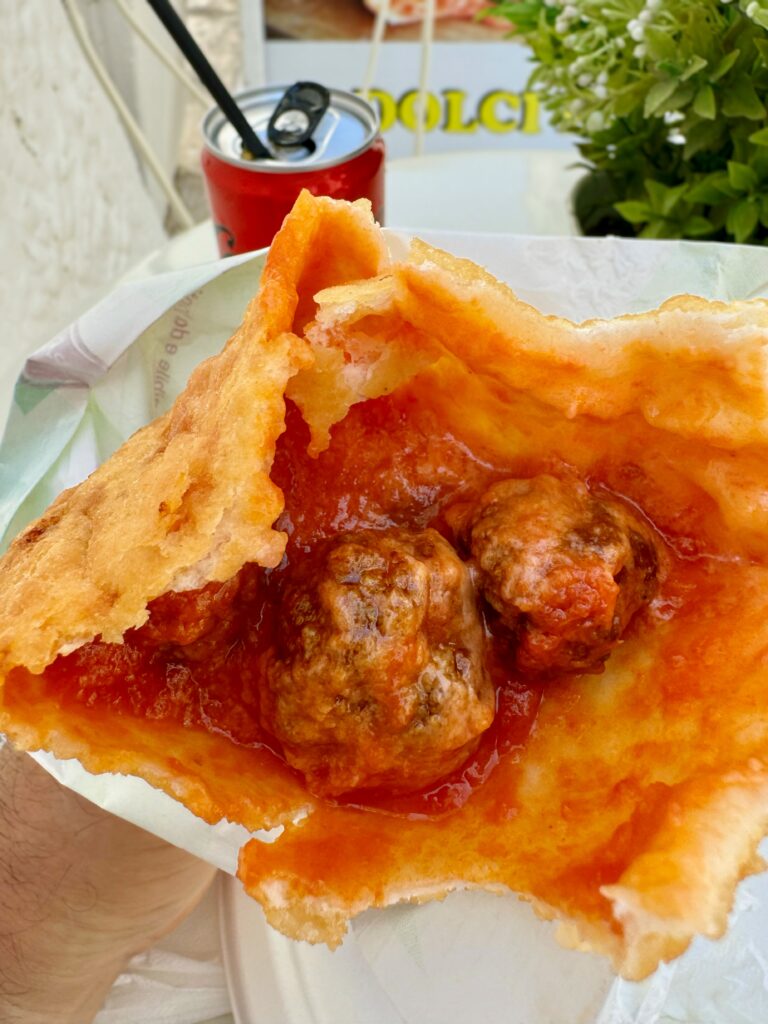
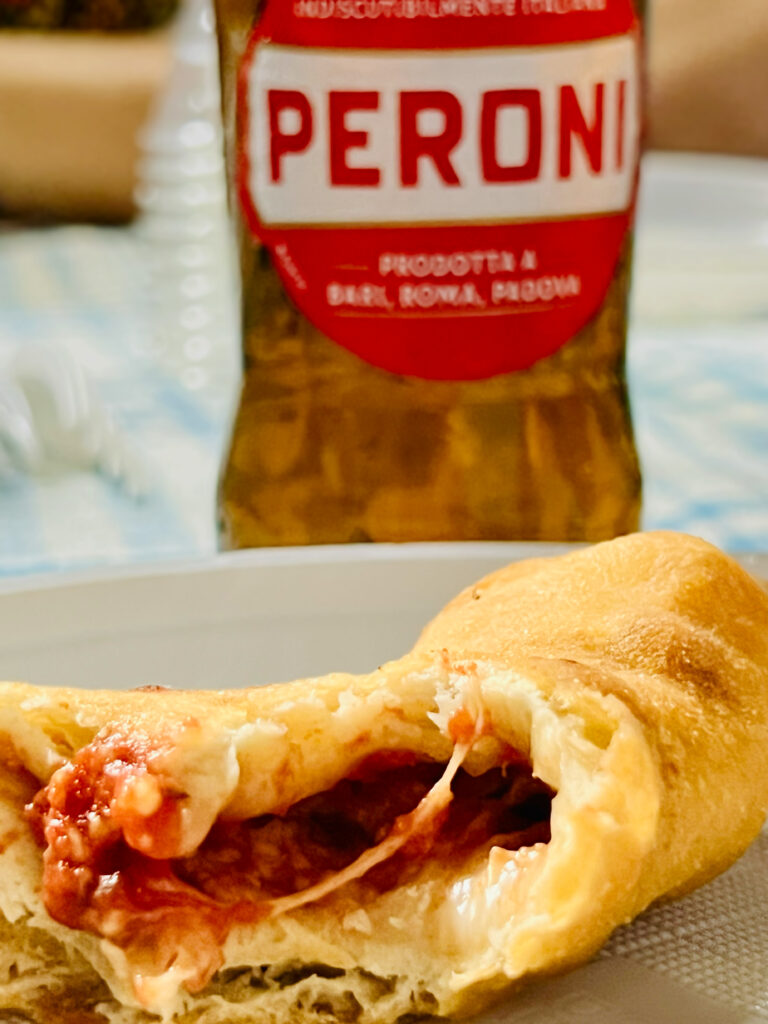
Focaccia barese | tomato and olive topped bread
Where to eat it: Every Bari bakery has its own version, and locals are fiercely loyal. Two favourites are Panificio Fiore in Bari Vecchia, one of the city’s oldest, and Panificio Santa Rita, tucked in the old town’s alleyways. Inland, head to Altamura — la città del pane — and step inside Antico Forno Santa Chiara, one of Italy’s oldest wood-fired bakeries, to taste focaccia alongside the famous Pane di Altamura, the only Italian bread with DOP status.
What it is: A soft, springy bread made from semolina, flour, olive oil, and mashed potato (or not — another point of great debate). The top is pressed with cherry tomatoes and black olives, then seasoned with oregano and more oil. Baked in wide metal pans, it emerges golden, oily and fluffy, with a crisp bottom.
Why try it: The addition of potato makes this focaccia moist and tender, while generous olive oil keeps it rich. It’s eaten at almost any time of day — except breakfast. That hasn’t stopped tourists pairing it with cappuccino, a habit that once made local headlines to much amusement. Sweet breakfasts are the norm in Italy, but we say go for it. Focaccia barese is Bari’s spirit in bread form: simple, robust, irresistible.
Puglia Guys tip: The best way to eat it is folded in paper, still warm, as you wander Bari Vecchia. And if you can, make the detour to Altamura — watching loaves emerge from the old wood-fired ovens at Antico Forno Santa Chiara is a reminder of how deep bread runs in Puglia’s food culture.
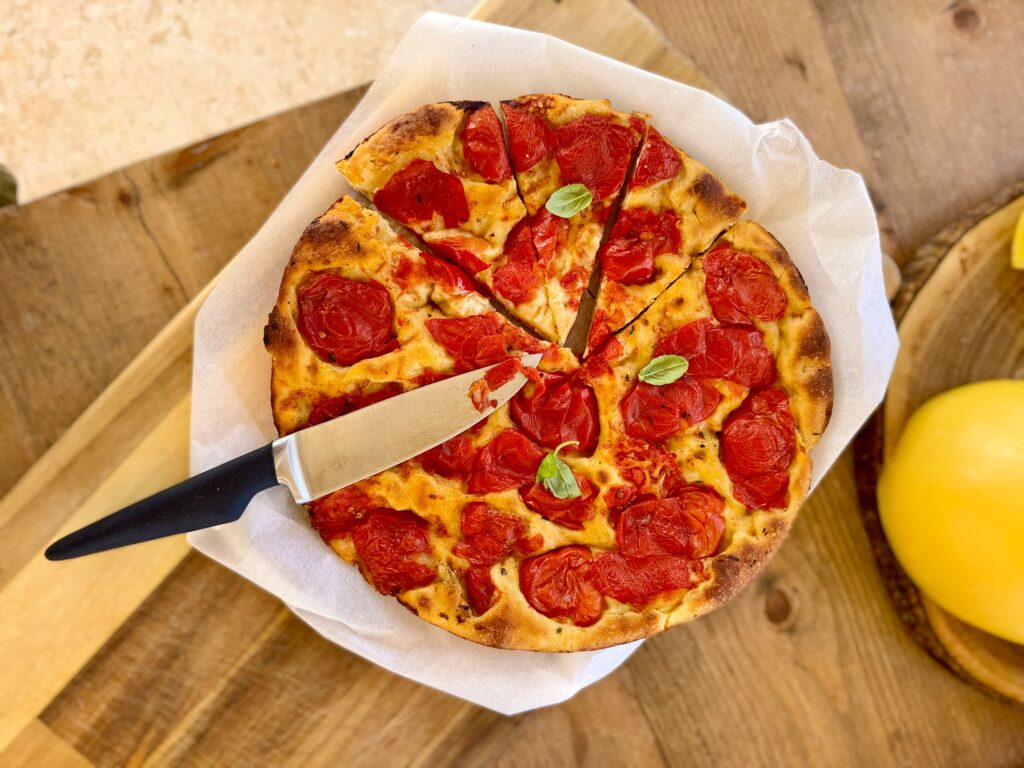
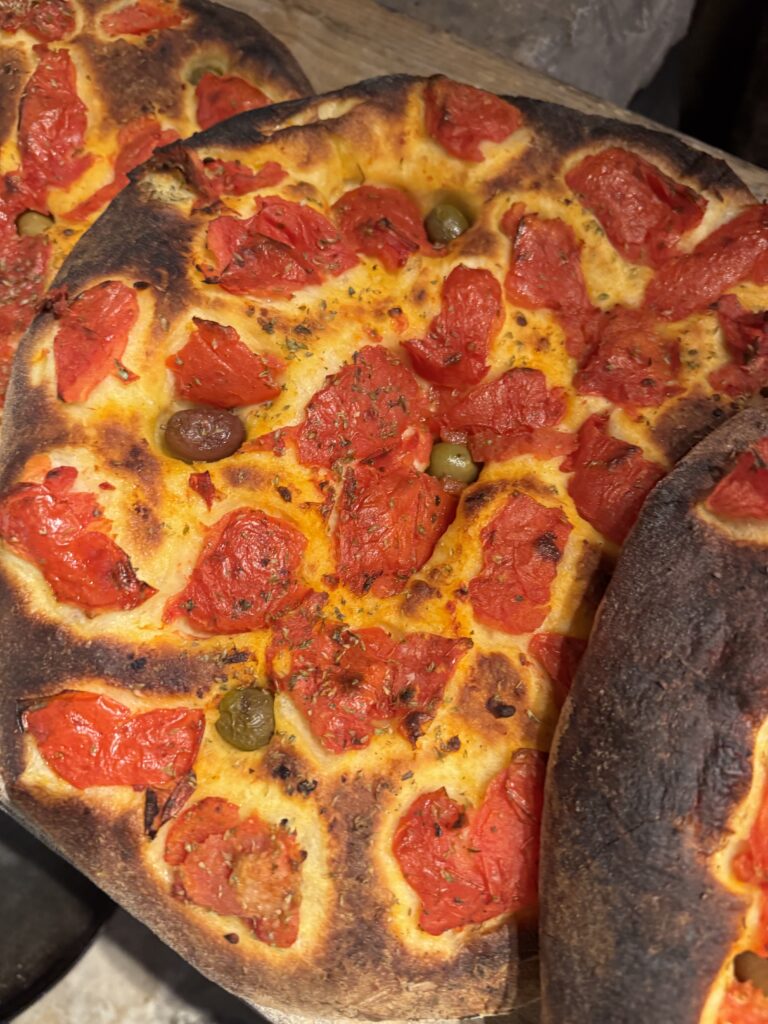
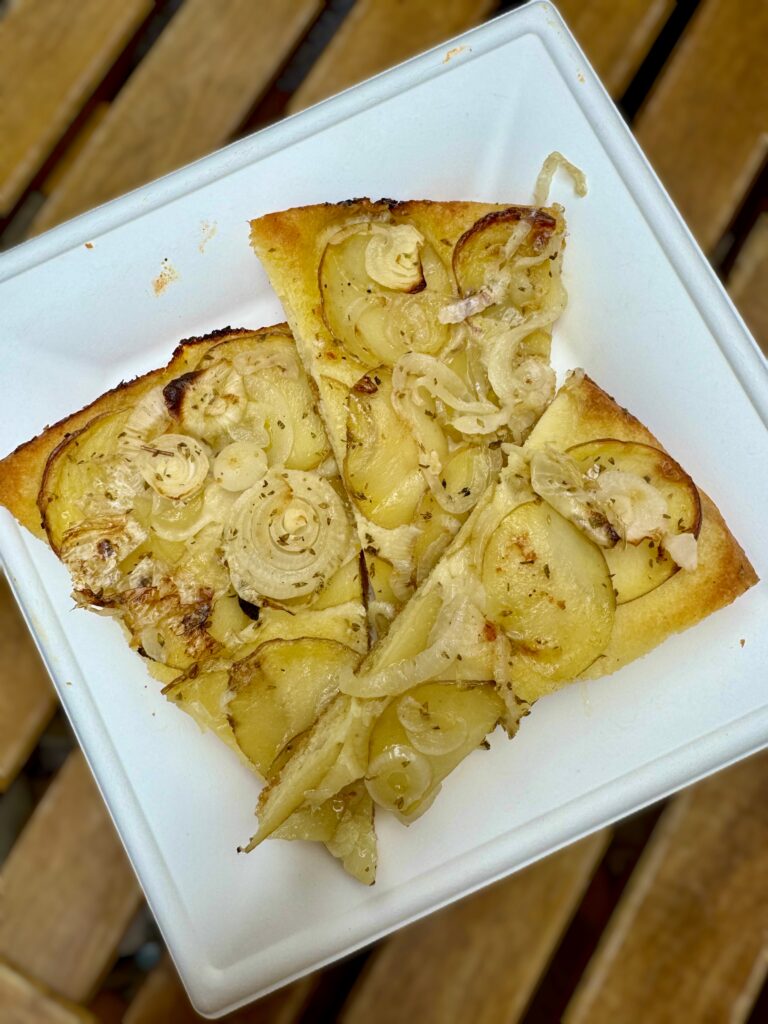
Sgagliozze | fried polenta bites
Where to eat it: A Bari speciality, especially in Bari Vecchia. In the evenings, sgagliozzare — women selling from their doorways — hand out paper cones of the hot squares to passers-by.
What it is: Thick slices of polenta, cooled, cut, and fried until crisp outside and soft in the middle. Lightly salted, served plain.
Why try it: Sgagliozze are part of Bari’s identity, as familiar as the women making orecchiette on wooden boards nearby. For locals they’re a childhood snack, eaten on the way home or while playing in the piazza; for visitors, they’re a taste of a tradition that survives intact.
Puglia Guys tip: Best eaten hot, sprinkled with salt, no sauces or toppings. Follow the queues in Bari Vecchia after sunset — that’s where you’ll find the real thing. They may be our least favourite street food: but for cultural significance alone, they’re worth trying once.
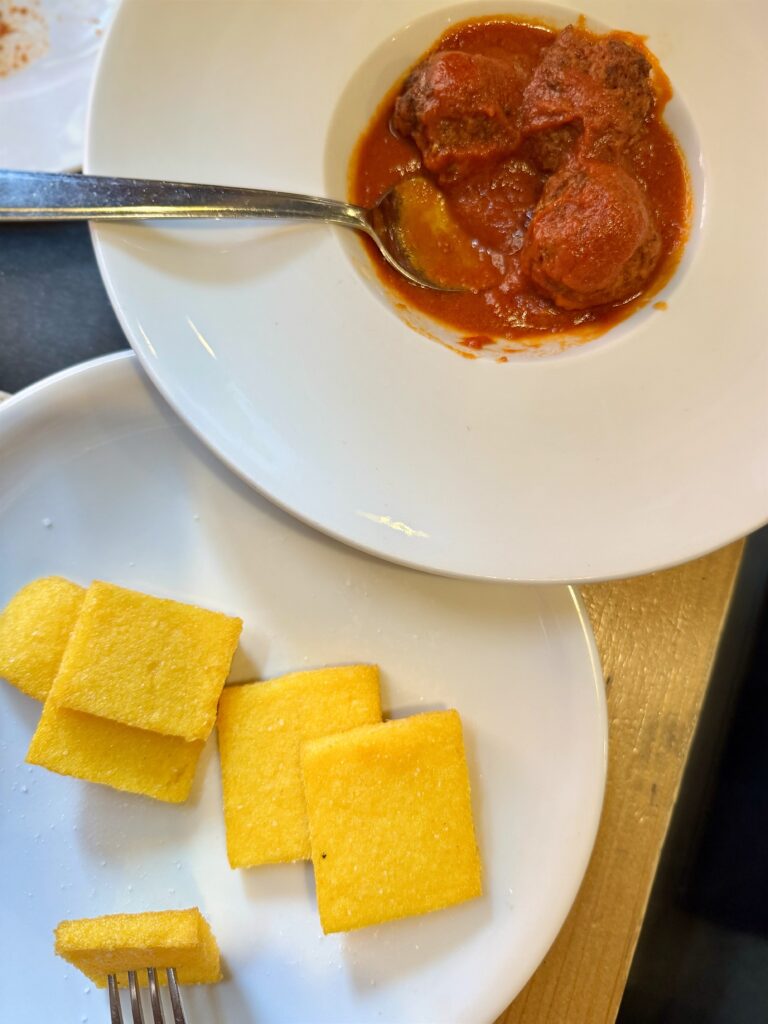
Taralli | crunchy olive-oil biscuits, perfect with wine
Where to eat it: Taralli turn up everywhere — with aperitivo in bars, in the bread basket at restaurants, and always in local homes. Every bakery sells them by the bag, and every family has a stash.
What it is: Small rings of dough made from flour, olive oil, white wine, and salt. Boiled briefly, then baked until crisp. The classic version is plain and salted, but flavours range from fennel seed to black pepper, chilli, or onion. Their snap is addictive — somewhere between a breadstick and a biscuit.
Why try it: Taralli are more than a snack: they’re a symbol of Puglia’s hospitality. Once practical food for farmers, today they’re part of the rhythm of aperitivo, as natural on the table as bread and wine.
Puglia Guys tip: Eat them as locals do, with a glass of wine or spritz before dinner. Some even dunk them. We’re especially fond of fennel seed or chilli. And if a restaurant bread basket comes with taralli tucked in, don’t be surprised — here, they belong at every table.

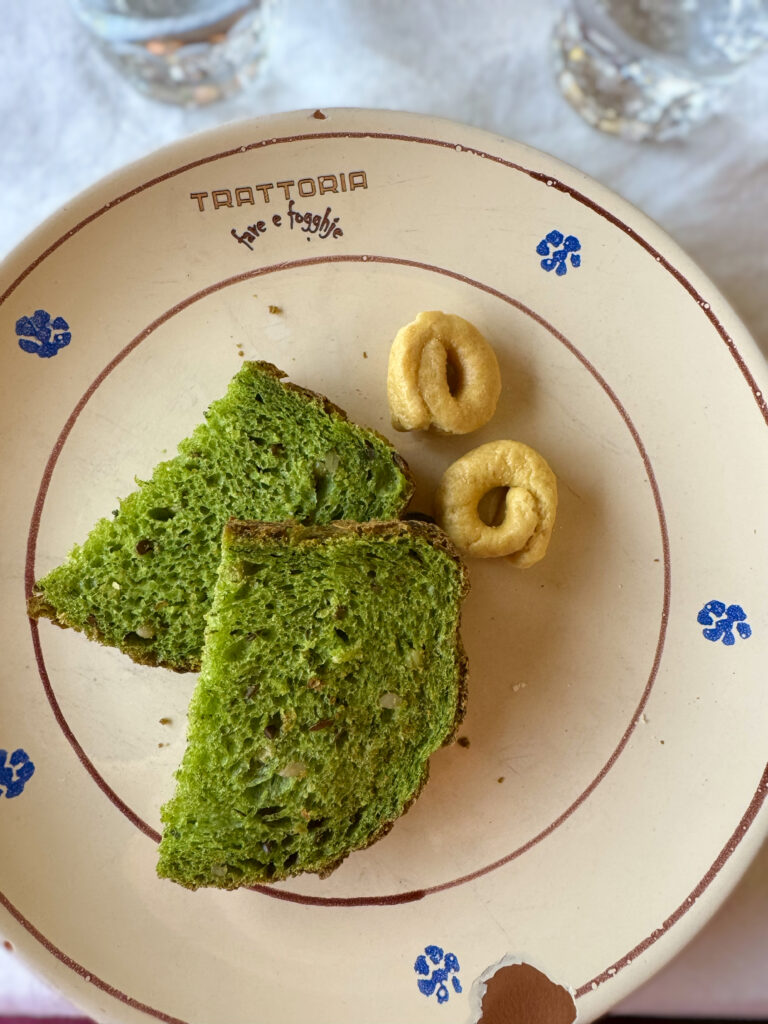
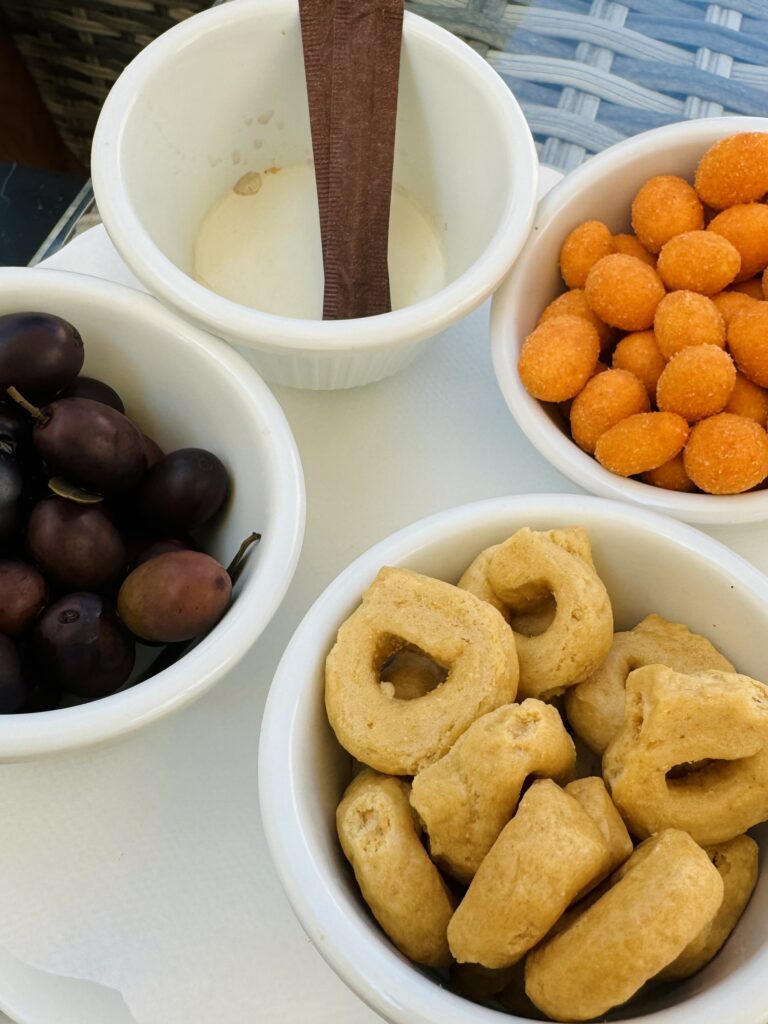
Antipasti
In Puglia, a meal rarely begins with a single plate. Instead, tables fill with cheeses, pulses, vegetables, and breads, all reflecting what’s in season. Burrata, born in Andria, is the queen: a mozzarella pouch filled with cream and stracciatella, eaten at its freshest. Friselle — twice-baked rusks softened with salted water and topped with tomatoes — are a legacy of farmers and fishermen who needed durable food for long days in the fields or at sea. Fave e cicorie, a purée of fava beans with wild chicory, speaks of cucina povera at its most elemental. And carciofi alla pugliese, stuffed artichokes simmered until tender, showcase the season’s bounty. In Puglia, antipasti aren’t just appetisers: they are a statement of hospitality.
Burrata | Puglia’s gift to the world
Where to eat it: Burrata was born in the countryside around Andria in northern Bari province, and it remains the best place to taste it at its freshest. It appears on antipasti menus across the region, often paired with tomatoes, cured meats, or vegetables, but nothing compares to eating it straight from a caseificio (dairy) where it was made that morning.
What it is: A quivering pouch of mozzarella filled with cream and stracciatella (shreds of stretched curd). Rich yet delicate, creamy yet tangy, it needs little more than olive oil, salt, and pepper.
Why try it: Created in the 1920s as a way to use up scraps of mozzarella, burrata has become a global delicacy. Yet what you taste abroad rarely matches burrata eaten here, still cool from the dairy and wrapped in asphodel leaves. Though most often served as antipasti, you’ll also see it placed on hot pizza or pasta, where the shell melts and the creamy centre enriches the dish.
Puglia Guys tip: Keep it simple — with ripe tomatoes in summer or with crusty bread to scoop it up. Burrata should be eaten the day it’s made; in a good caseificio you can often buy one in a small bag of whey, perfect for a picnic.

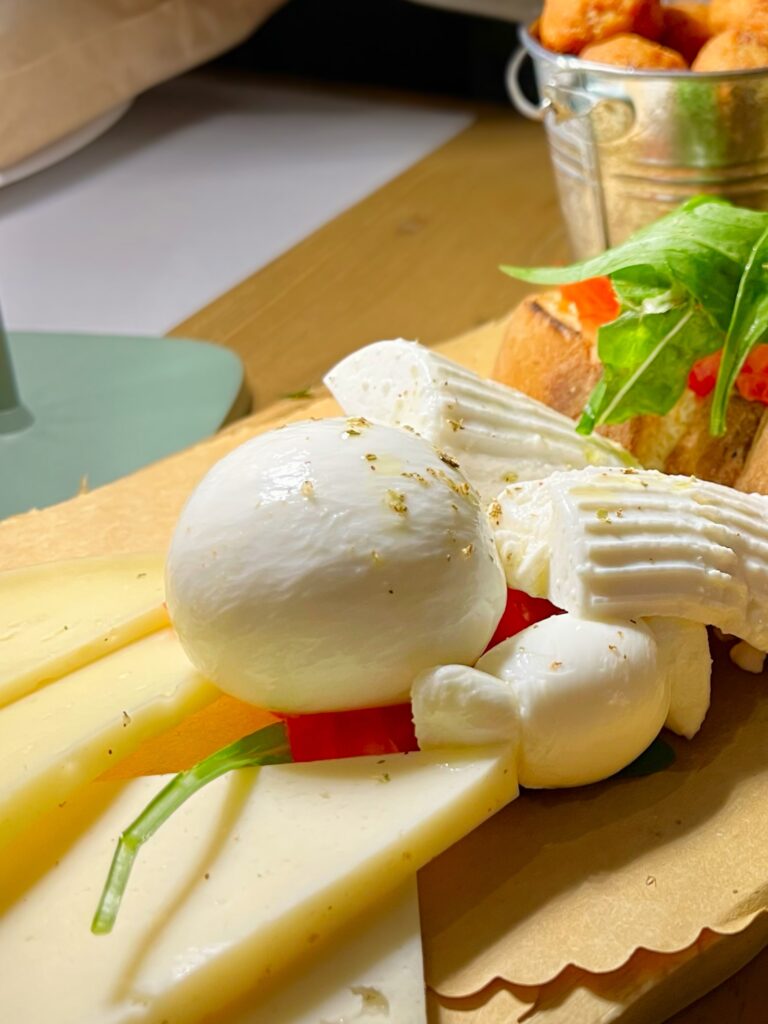
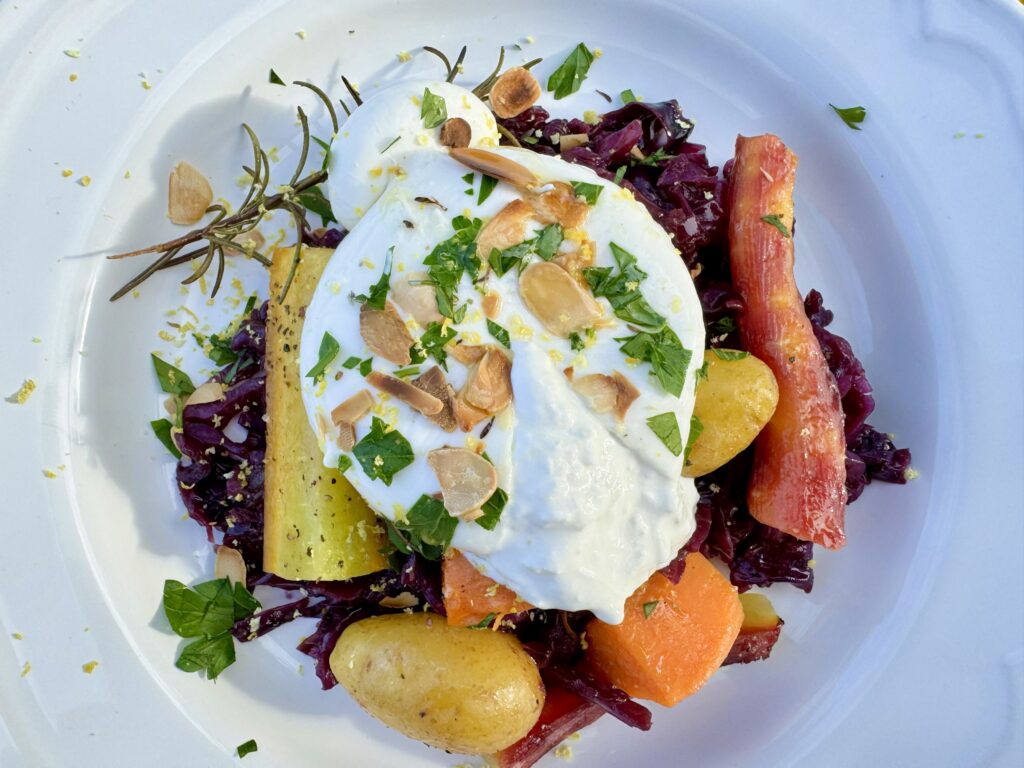

Friselle | twice-baked rusks softened with water and topped with tomatoes
Where to eat it: Found all over Puglia, especially along the coast, where they were once a staple for fishermen. Today they’re piled in bakeries, stacked on market stalls, or served in trattorie as part of an antipasti spread.
What it is: Hard, twice-baked rings of barley or wheat bread. To eat, they’re briefly dunked in salted water, then the coarse surface is rubbed with a clove of raw garlic, and topped with tomatoes, olive oil, oregano, and sometimes capers or anchovies.
Why try it: Designed to last weeks without spoiling, friselle once sustained farmers and fishermen who softened them with seawater or wine. Today, they’re one of the simplest and most satisfying ways to enjoy Puglia’s ingredients — ripe tomatoes, peppery oil, and coarse sea salt. They embody the region’s link between land and sea: a food created for work, still eaten for pleasure.
Puglia Guys tip: Don’t soak them too long — just a quick dip (count “one friselle, two friselle, three friselle, four”, and you’re done). In summer, friselle alla crudaiola with fresh cherry tomatoes, basil, and raw garlic make the perfect no-cook lunch. Barley versions, darker and nuttier, are still favoured in traditional households.
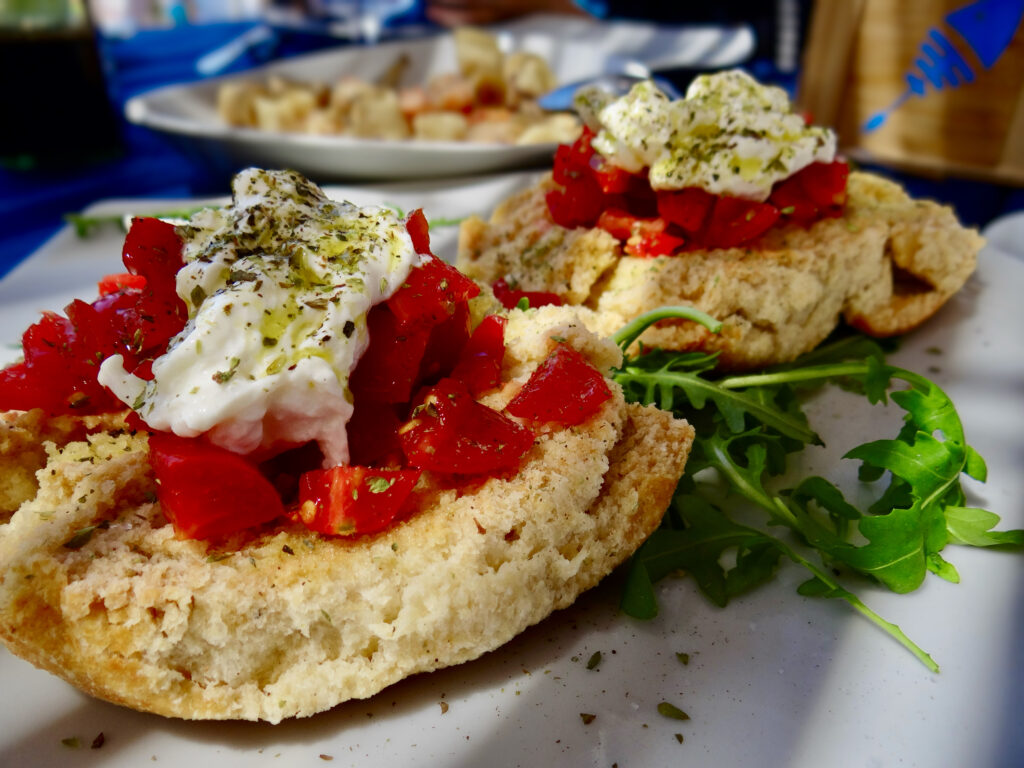
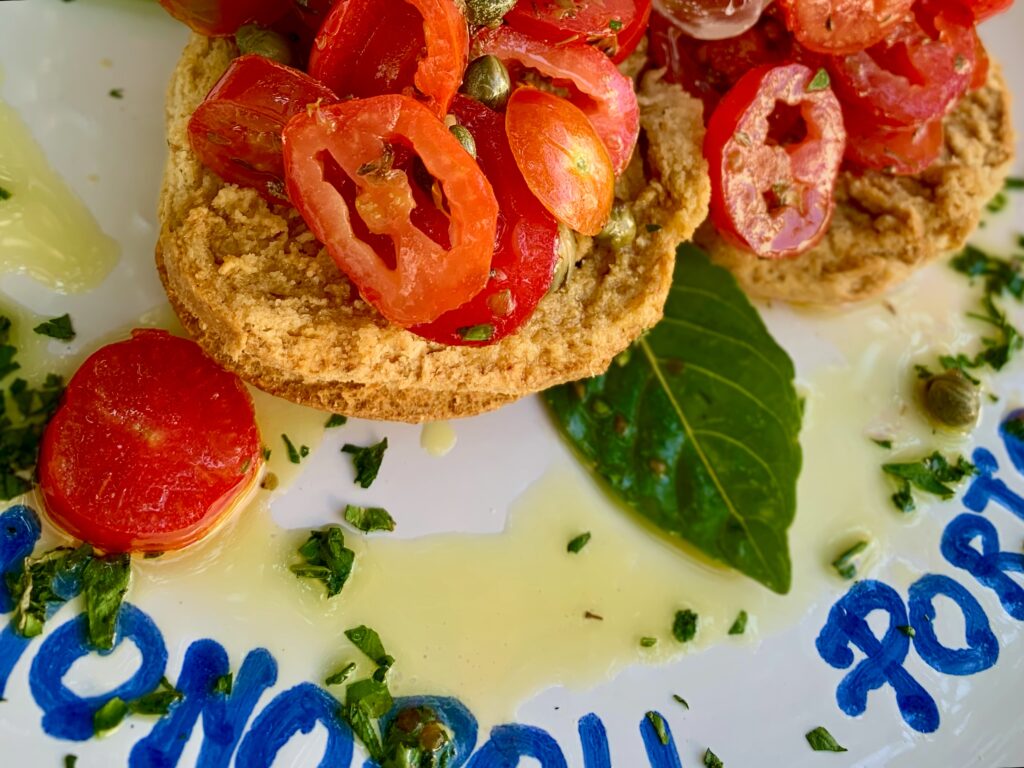
Fave e cicorie | fava bean purée with wild chicory
Where to eat it: Served across Puglia, but especially good in countryside trattorie of the Valle d’Itria and Salento, where wild chicory is foraged in spring. Many agriturismi also feature it as part of their antipasti spreads.
What it is: A thick purée of dried fava beans, slowly simmered until smooth, served with bitter wild chicory. The creamy beans balance the sharpness of the greens, brought together with a drizzle of olive oil. A common alternative is friggitelli (small green frying peppers), which are less bitter and our personal preference when in season.
Why try it: Perhaps the purest expression of cucina povera in Puglia: just beans and greens, once the daily food of farmers, now a dish of pride. Beyond its history, it’s one of the most comforting things you can eat here — creamy, warm, and nourishing, the kind of food that feels like a hug on a plate.
Puglia Guys tip: Rustic and generous, not refined. Best in spring when cicorie are fresh, but cultivated chicory makes it available year-round. Pair with toasted bread or a frisella to scoop up the purée, and a glass of local wine to balance the bitterness.
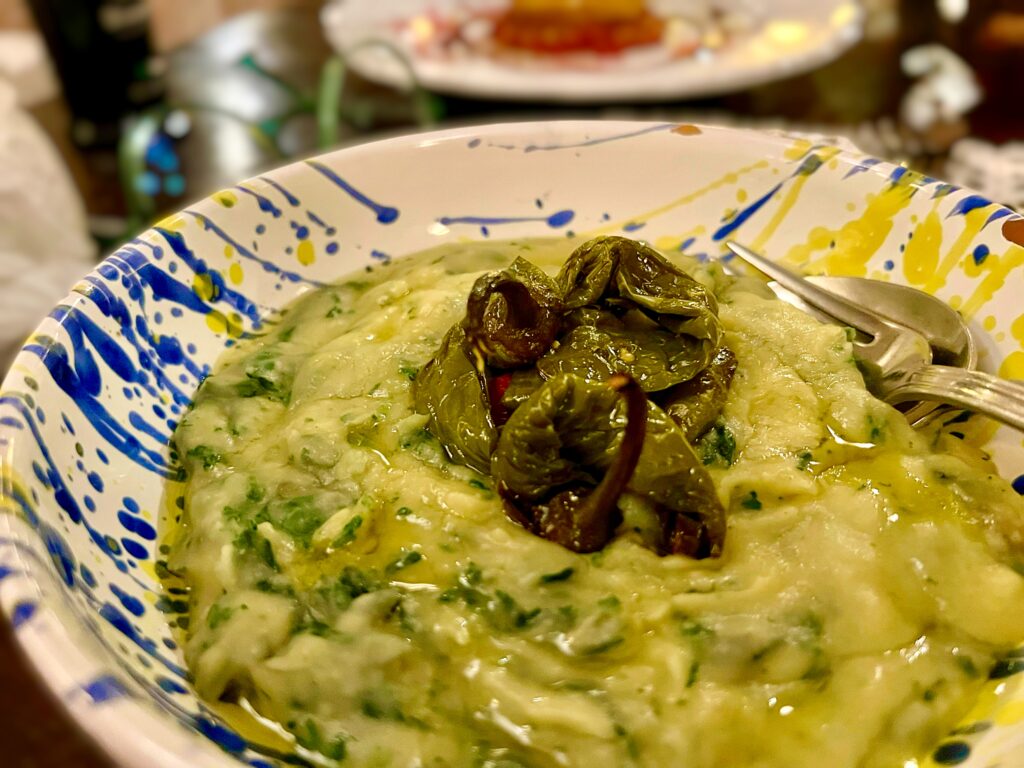

Carciofi alla pugliese | stuffed artichokes
Where to eat it: Common across Puglia in spring, when artichokes are in season and markets are full. Found on antipasti menus in trattorie and agriturismi, often served warm.
What it is: Whole artichokes trimmed and filled with breadcrumbs, garlic, parsley, pecorino or cacioricotta, and plenty of olive oil, then slowly braised — sometimes with wine, sometimes with tomato — until tender.
Why try it: This is springtime Puglia on a plate. The bitterness of the artichokes softens with slow cooking, enriched by the filling. Using breadcrumbs rather than meat reflects cucina povera ingenuity, making something special from everyday staples. Eating them leaf by leaf, scraping the soft flesh with your teeth, is part of the comfort and ritual.
Puglia Guys tip: Always order them in season, when the artichokes are young and tender. In the Valle d’Itria and Salento, you’ll often see long-stemmed varieties braised whole in bundles. If cooking at home, don’t skimp on the olive oil — it’s what makes the filling rich and the artichokes silky.
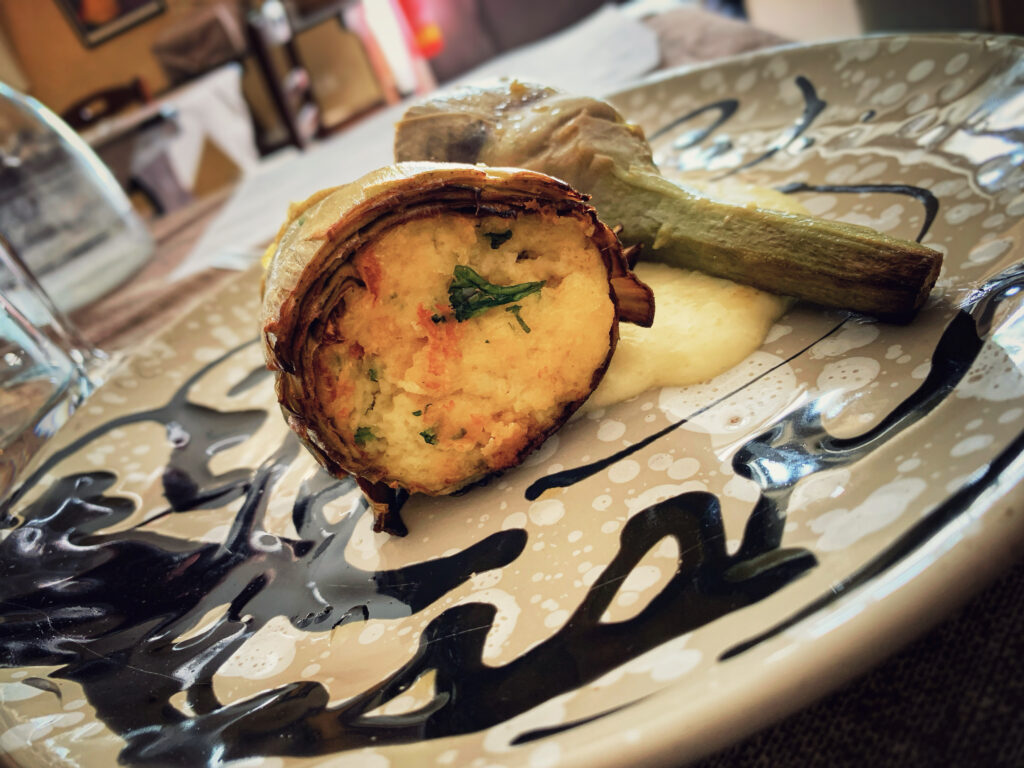
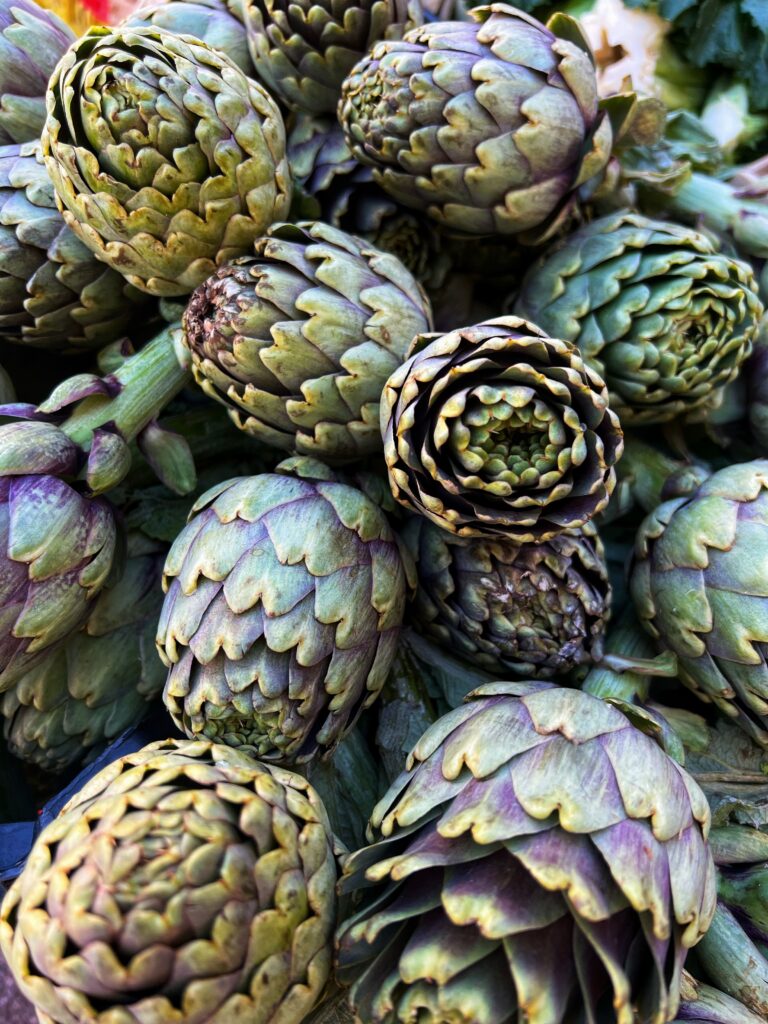

Other antipasti dishes are available…
Across Puglia, antipasti spreads can be as simple as a few plates of cheese and olives or as lavish as a dozen different dishes covering the table. Alongside burrata, friselle, fave e cicorie, and stuffed artichokes, you might be served parmigiana di melanzane (layered aubergine bake), pettole or pittule (little savoury dough balls, especially in winter), marinated vegetables, stuffed courgette flowers, lampascioni (wild onions), and platters of local cheeses and cured meats. No two antipasti are ever quite the same, but that variety and abundance are the essence of Puglian hospitality — a generous welcome and a celebration of whatever the season brings.
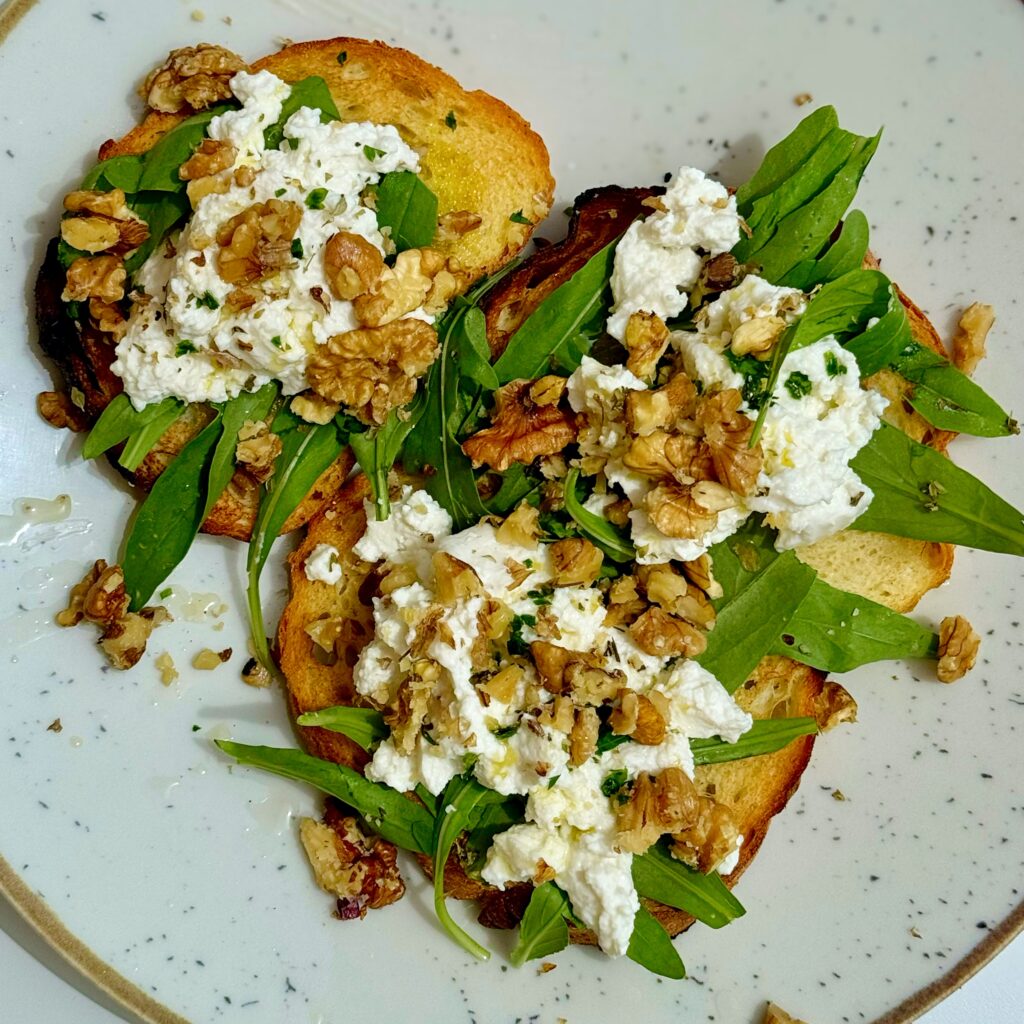

Meat & Festival Food
If Puglia’s coast is about seafood, its inland towns are defined by meat. Walk through the streets of Cisternino or Martina Franca in the evening and you’ll smell the bracerie — butcher’s shops that double as informal grills, where bombette sizzle over hot coals. Capocollo di Martina Franca, smoked with oak and myrtle, is a Slow Food-protected cured meat unique to the Valle d’Itria. Sunday lunches revolve around braciole, beef rolls braised in tomato sauce, while polpette, often bread-based, fried or simmered, are as much about economy as flavour. These dishes remind you that Puglia’s food culture isn’t just coastal: it’s also pastoral, festive, and deeply rooted in the butchers and grills of its small towns.
Bombette | grilled rolls of meat stuffed with cheese and herbs
Where to eat it: Bombette are most famously associated with the Valle d’Itria, especially Cisternino, Locorotondo, and Martina Franca. In these towns, the streets are lined with fornelli pronti — butchers who double as informal grills (or a braceria). You choose your bombette at the counter, they’re cooked over hot coals, and you eat them at simple tables with little more than bread and wine.
What it is: Bite-sized parcels of thin meat, traditionally pork but also veal or beef, wrapped around a filling of cheese, cured meat, and herbs. The most classic versions use caciocavallo or provolone, though you’ll often see pancetta, parsley, or chilli added. Skewered or laid directly on the grill, they cook quickly, emerging charred on the outside and juicy inside. Their name — “little bombs” — comes from the burst of flavour in such a small package.
Why try it: Bombette are the heartbeat of Puglia’s meat culture. They began as a butcher’s treat, rolled from scraps and cooked for themselves, before becoming a local institution. Today they define summer nights in the Valle d’Itria, eaten outdoors with friends under a haze of smoke. No other dish captures the spirit of these hilltowns quite like a plate of bombette shared at a communal table.
Puglia Guys tip: Order a mix to sample different fillings, but don’t overlook the simplest cheese-stuffed version — it’s still the best. Eat them hot off the grill, shoulder to shoulder with locals. In Cisternino, evenings at the fornelli pronti are as much a social ritual as a meal. Bracerie and fornelli pronti have plenty of substantial vegetable sides and it is possible to visit without having meat.
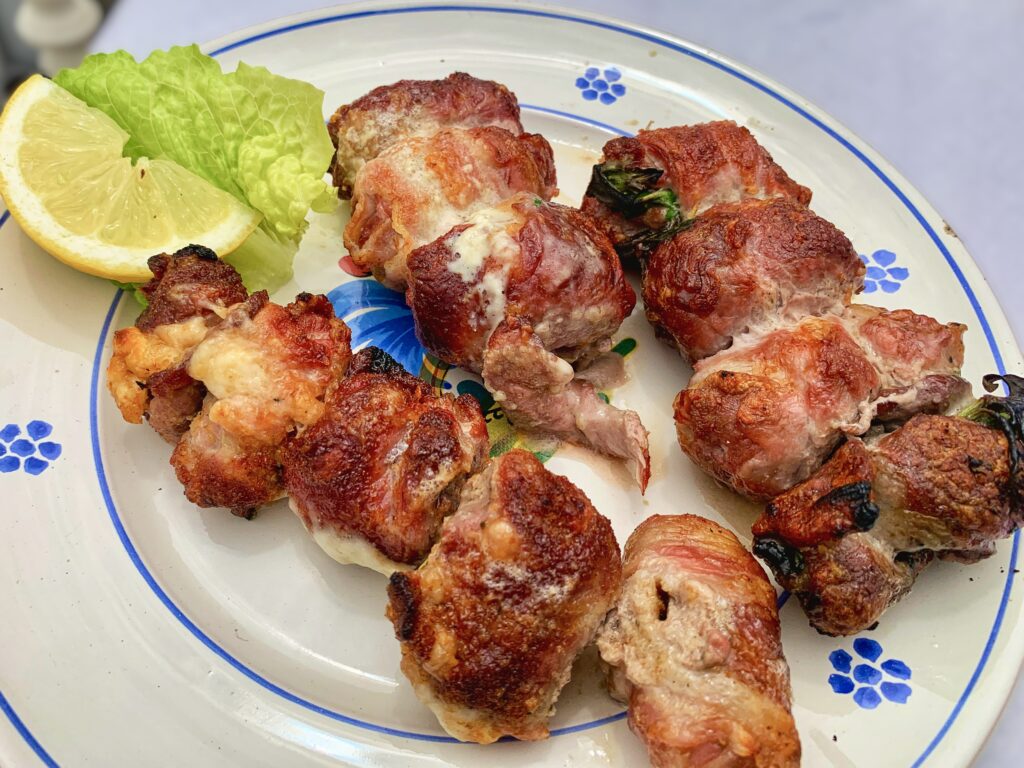
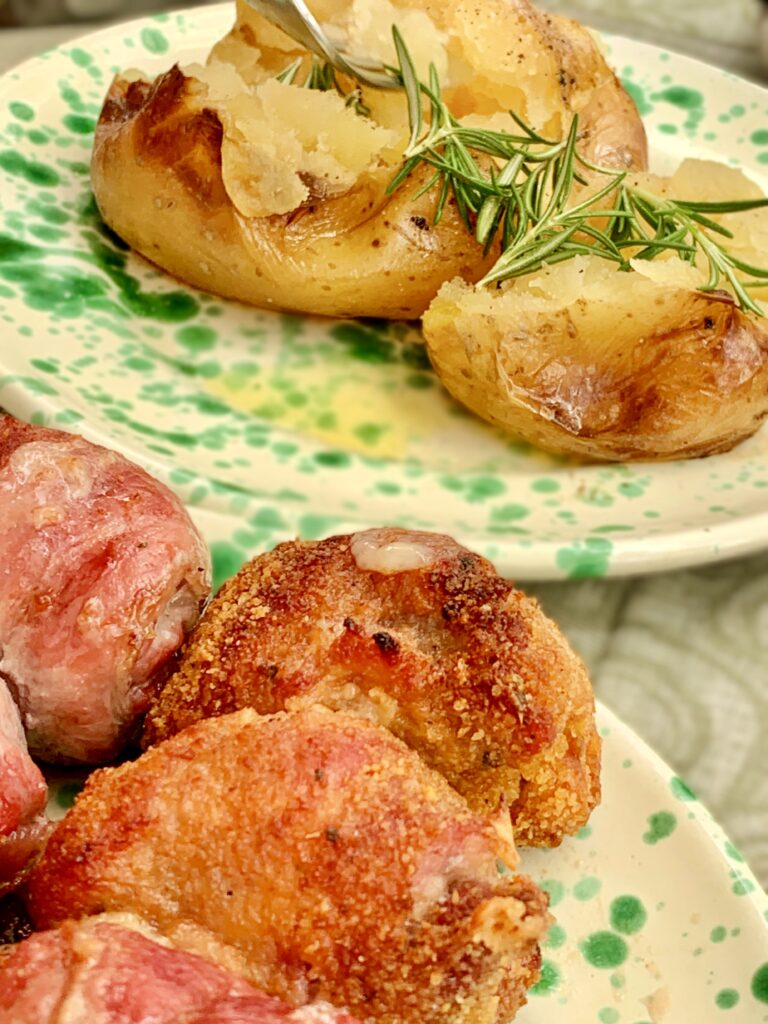
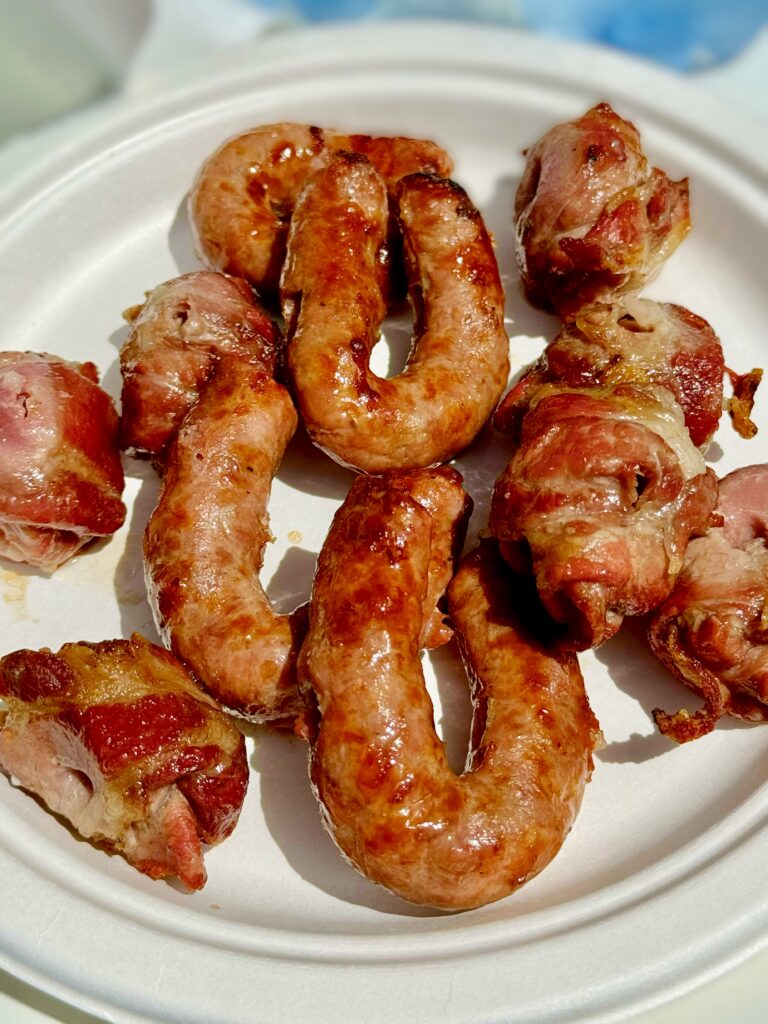
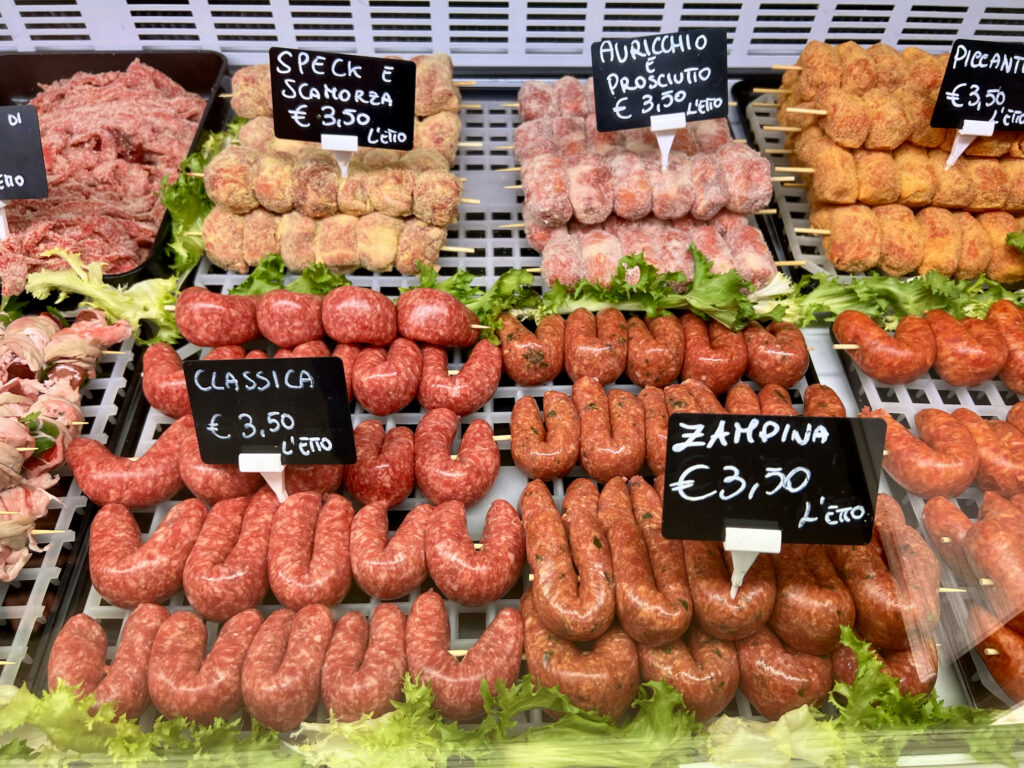
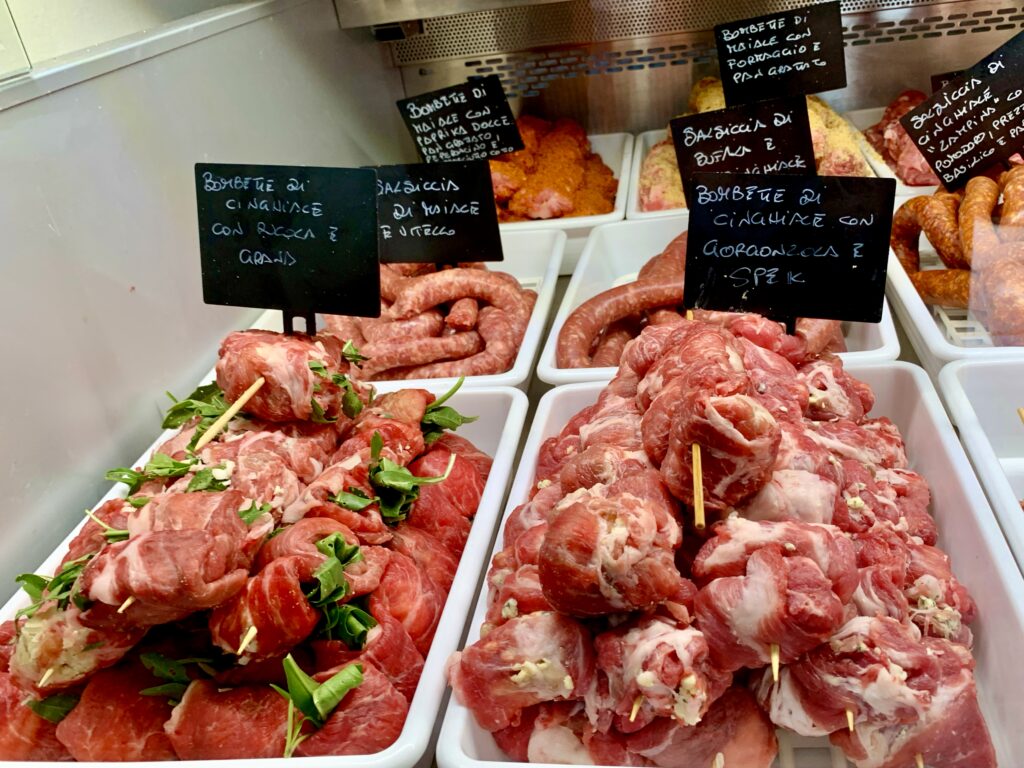
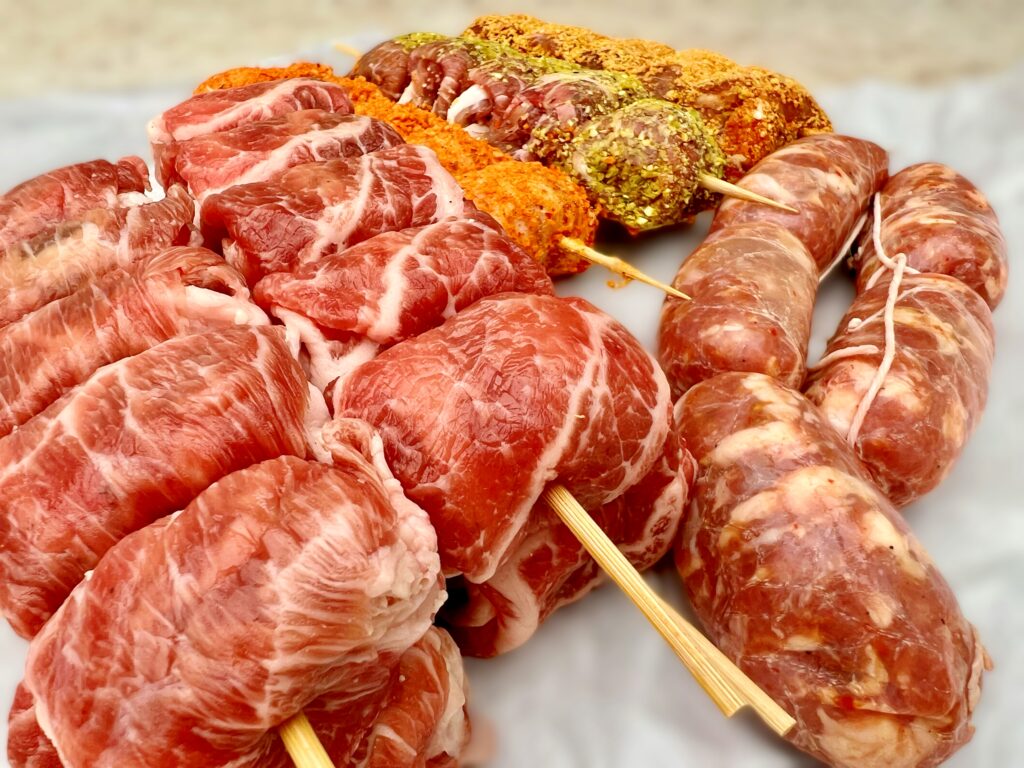
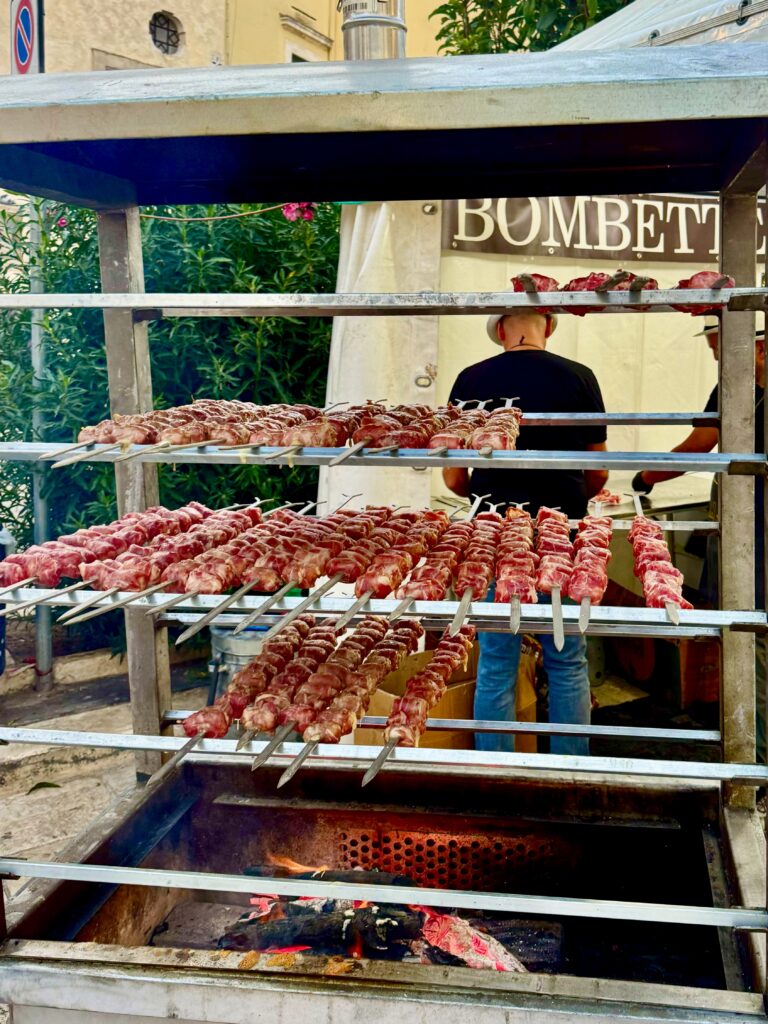
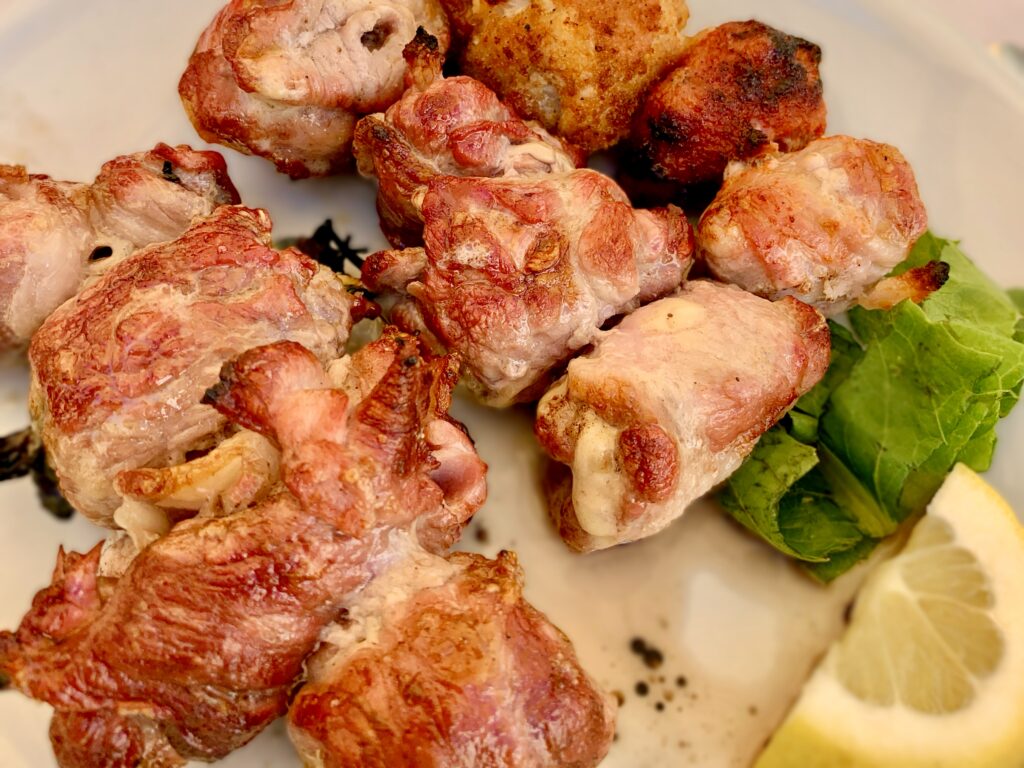
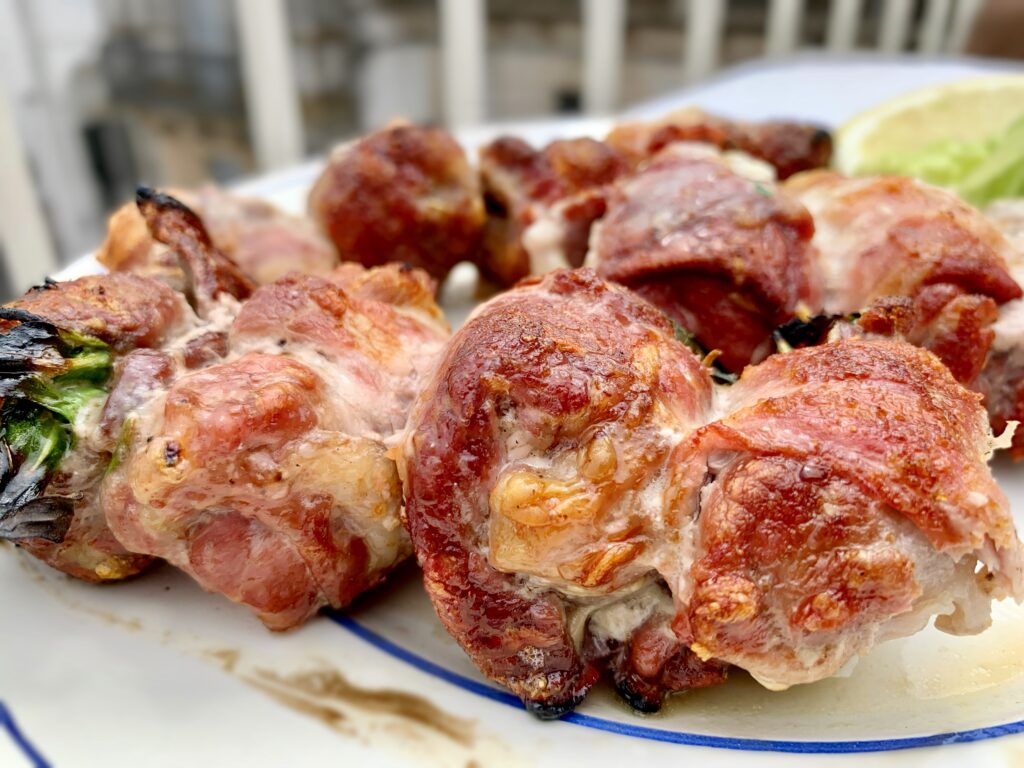
Braciole | beef (traditionally horse meat) rolls slow-cooked in tomato sauce
Where to eat it: A Barese classic, most often found in family kitchens on Sundays, though also on trattoria menus.
What it is: Thin slices of meat rolled with pecorino, garlic, and herbs (sometimes with a sliver of cured ham), then held in place with toothpicks. Traditionally horse meat (cavallo) was used — and in some old-school trattorie and around Bari Vecchia and Lecce it still is — although beef is now more common. Parsley is typical, though some families use celery leaves for pepperiness, or both. The rolls are seared and braised for hours in tomato sauce until tender.
Why try it: Braciole aren’t just food — they’re ritual. The rich sugo, flavoured by the meat, is always served first with orecchiette as the pasta course, before the rolls themselves appear as the main. This two-part meal is the essence of a domenica barese — a long, slow Sunday lunch designed for sharing and remembering.
Puglia Guys tip: If you’re invited to a Sunday lunch in Bari and braciole are on the table, you’re in luck. Don’t rush: the pasta with sugo is only the beginning. If you spot them midweek in a trattoria, order for a taste of a tradition otherwise tied to home kitchens. We recommend removing all toothpicks (used to hold them together when slow-cooking) before starting to eat!
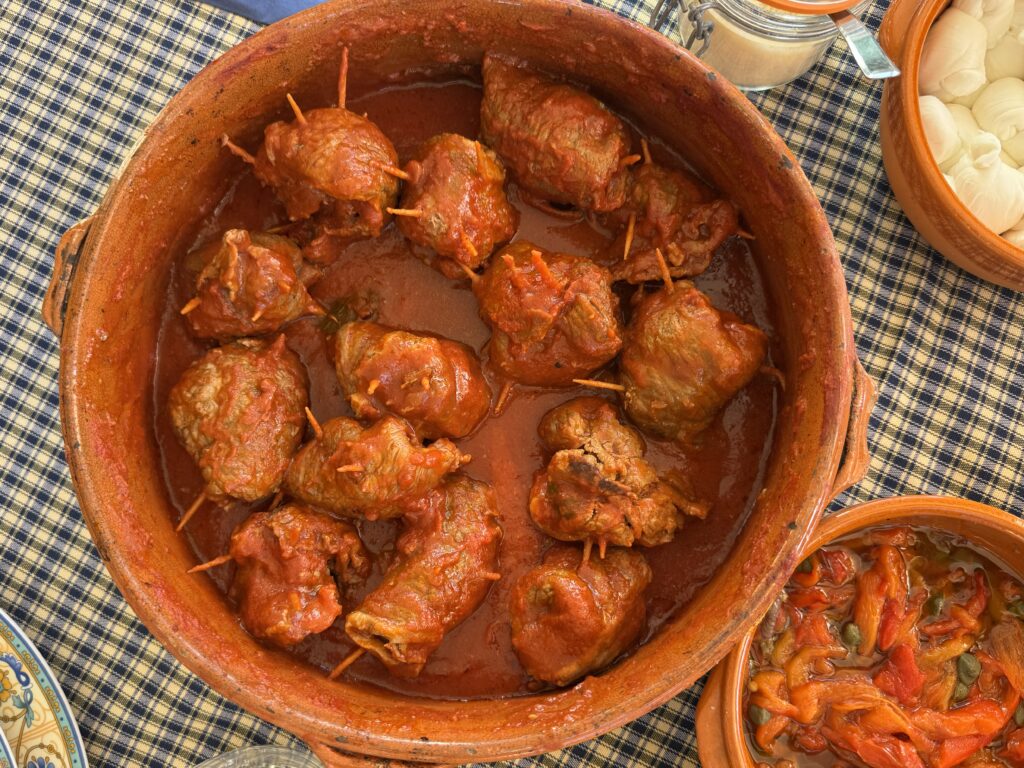
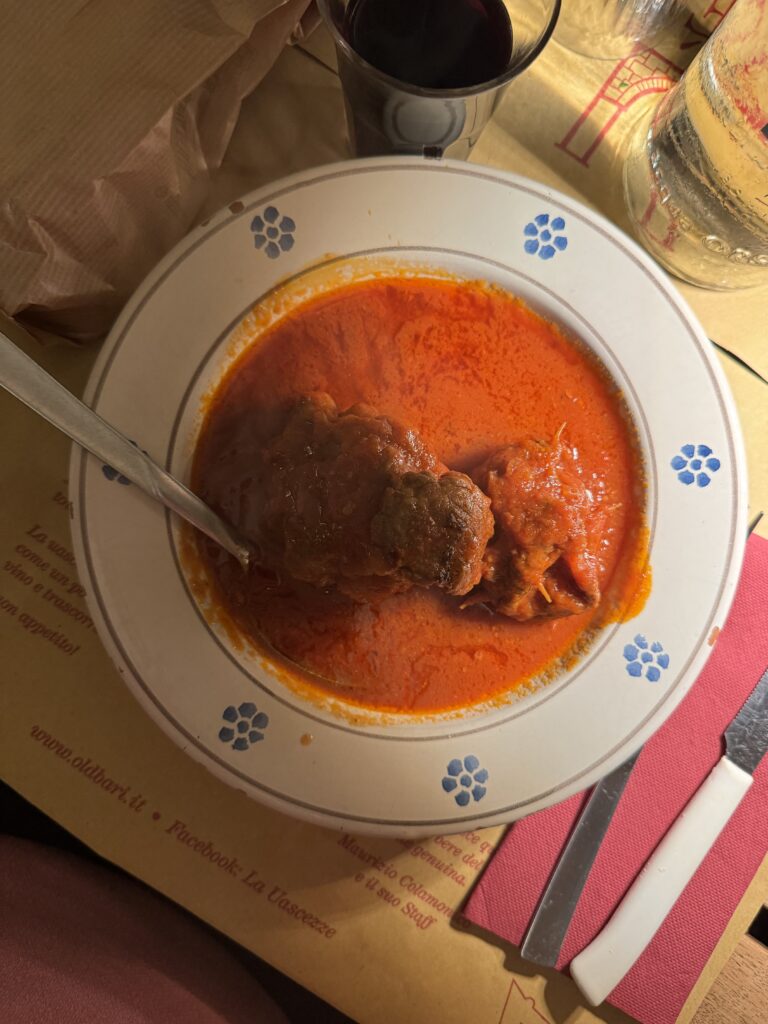
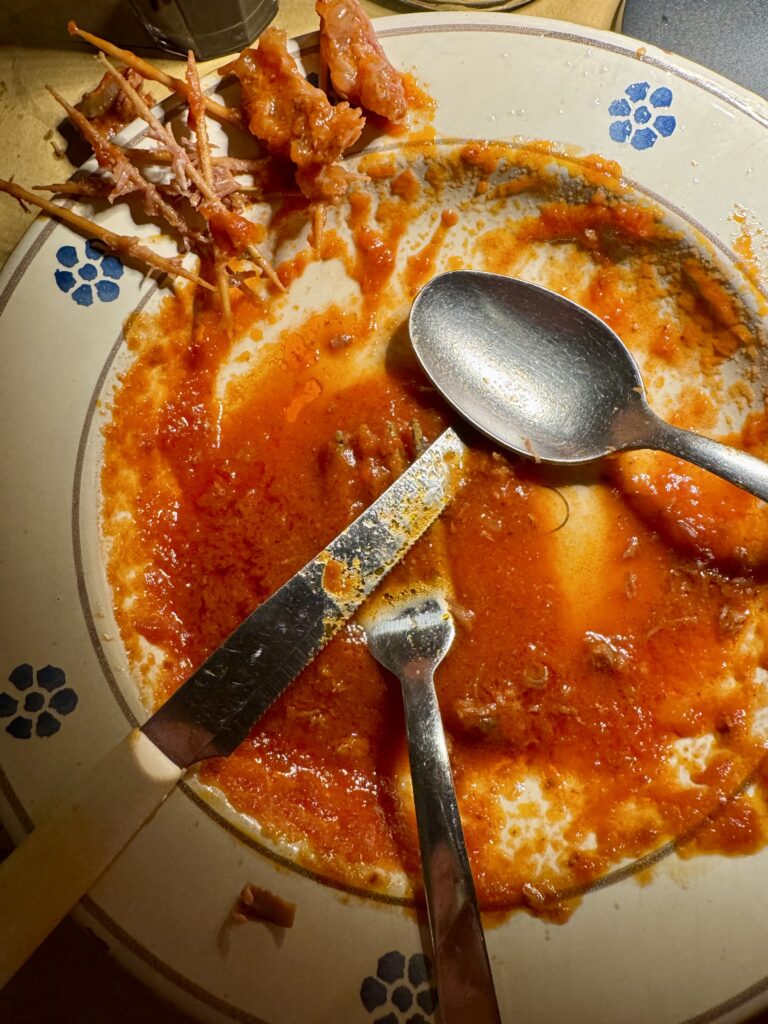
Polpette | more than (just) meatballs
Where to eat it: A staple across Puglia, served in antipasti spreads, trattorie. Polpette will find their way onto your table at homes and restaurants all around Puglia, served straight up, deep fried and crunchy, or in a rich tomato sugo, with or without pasta.
What it is: Not only meatballs. In Puglia, polpette come as di pane (cheesy bread dumplings with herbs and pecorino), di melanzane (aubergine fritters), or di carne (usually beef). They’re fried until golden or simmered in tomato sugo.
Why try it: Pure comfort food, stretching humble ingredients into something delicious. Fried, they’re a snack; simmered, they’re a meal with or without pasta. They embody the adaptability of cucina povera and remain one of the most familiar tastes of home.
Puglia Guys tip: Try them in more than one form: a cone of fried polpette di pane in Bari Vecchia for street food, and meatballs in tomato sugo over orecchiette for Sunday comfort. Remember: in Puglia, polpette don’t always mean meat — some of the best are meatless.
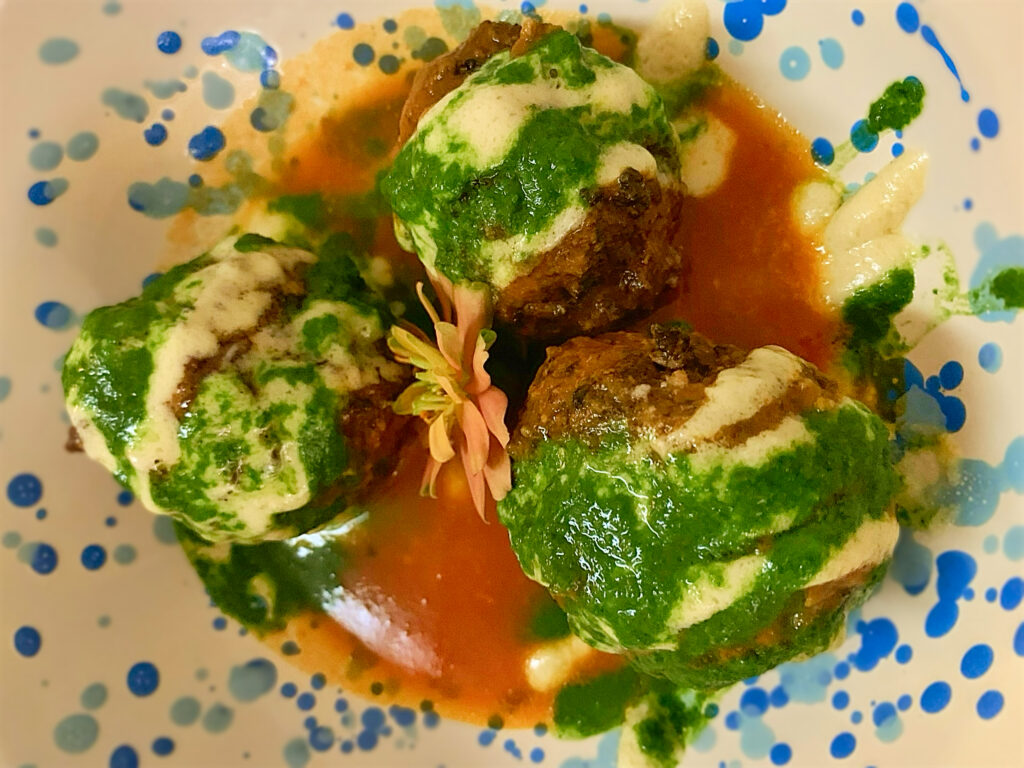
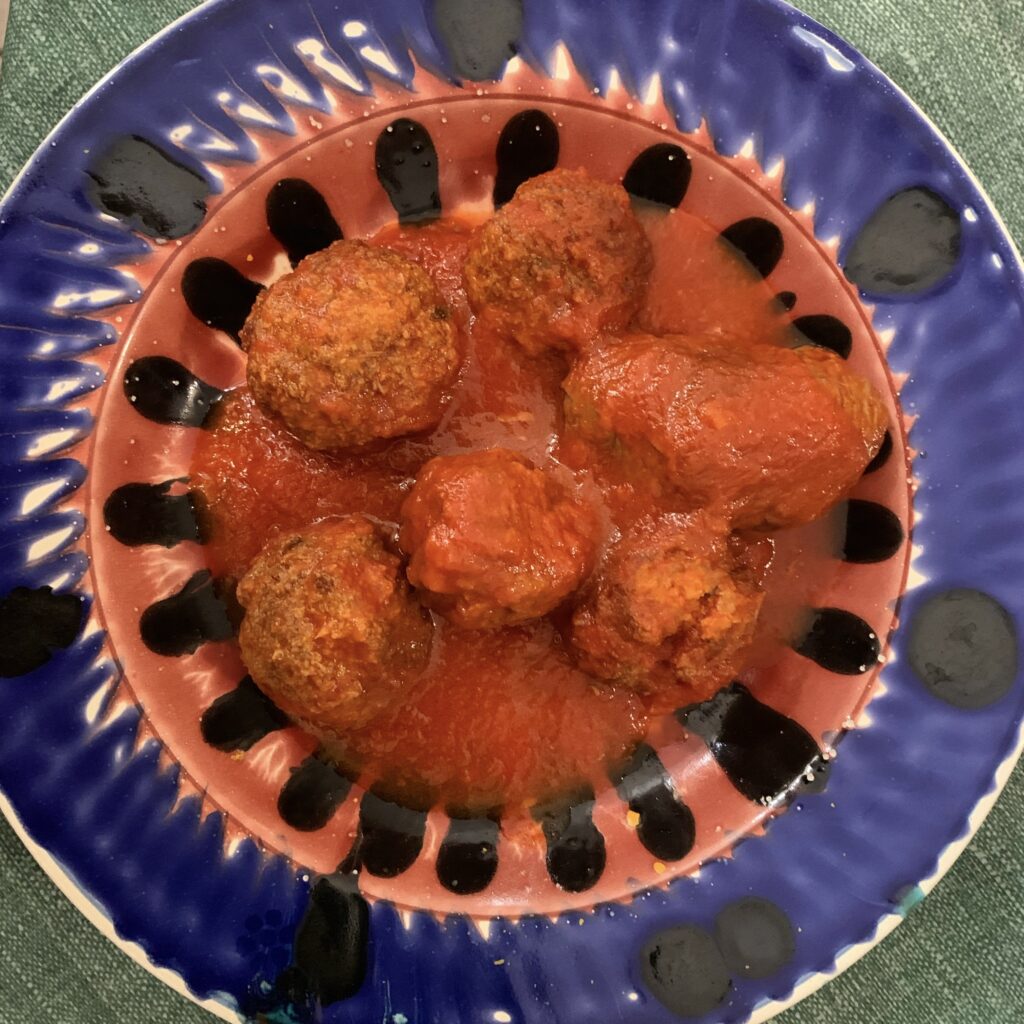

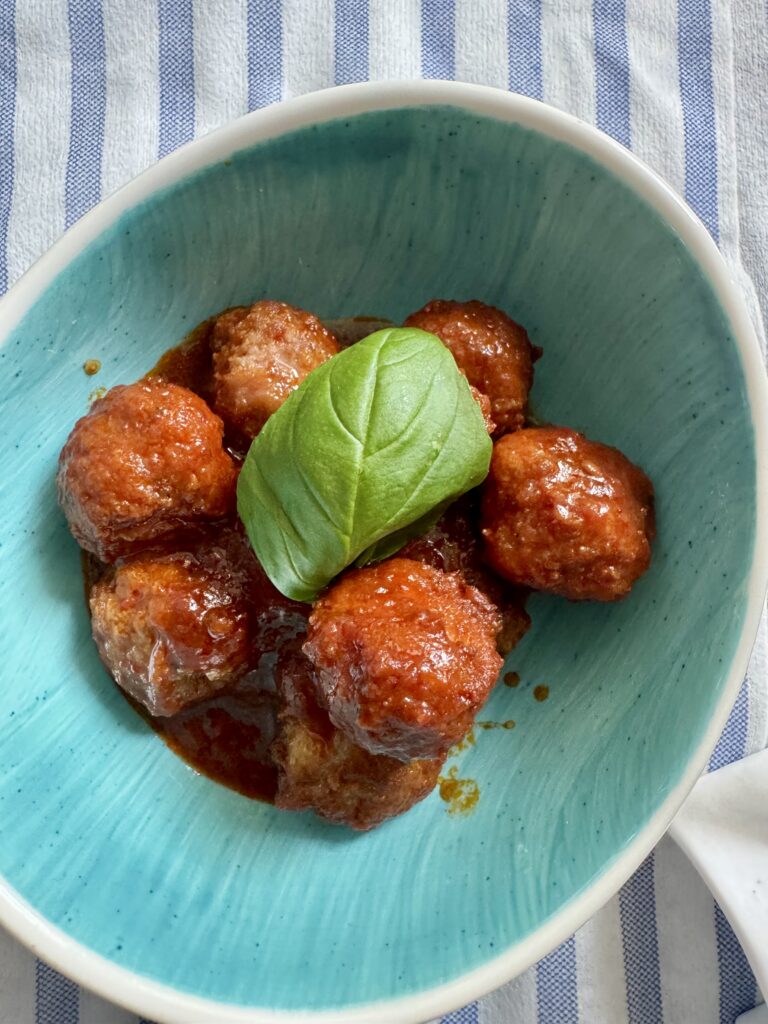
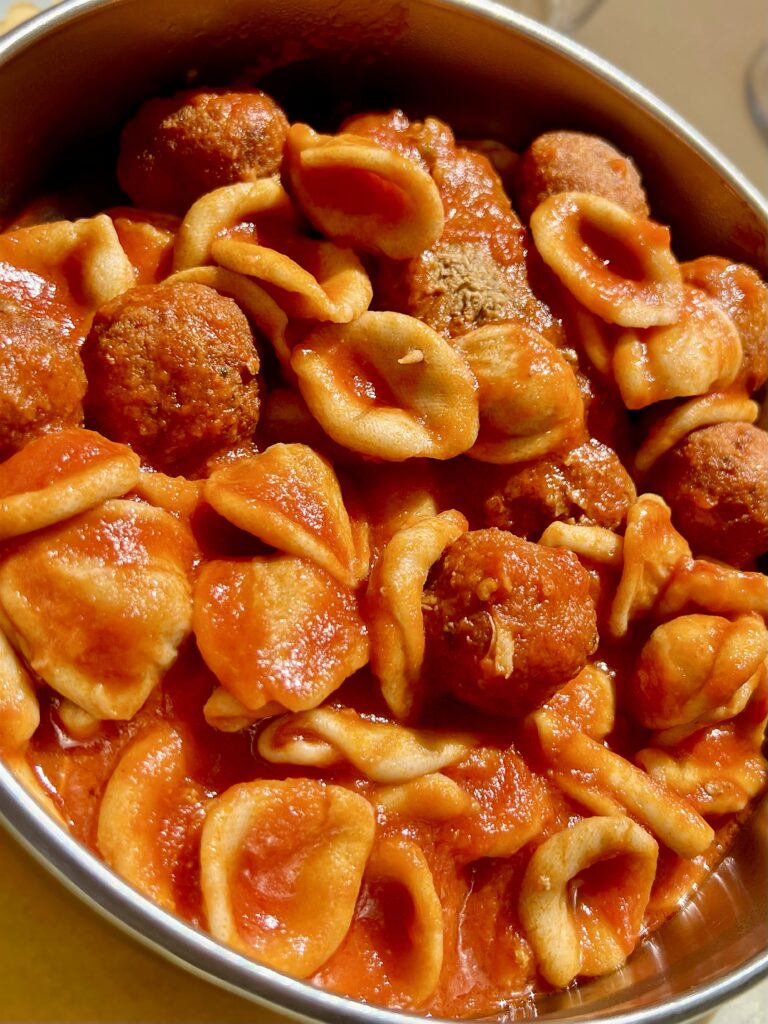
Capocollo di Martina Franca | smoked, Slow Food-protected cured meat
Where to eat it: The pride of Martina Franca, found in every salumeria and on antipasti boards, but best tasted at source, where local producers follow traditional methods.
What it is: A cured cut of pork neck and shoulder, seasoned with sea salt, pepper, and herbs, marinated in red wine, encased, and smoked over oak, almond husks, and myrtle. The result is a deep, aromatic flavour and a rosy colour.
Why try it: Recognised by Slow Food for its uniqueness, capocollo di Martina Franca reflects the area’s microclimate and centuries of tradition. Richly marbled like prosciutto but smokier, it’s one of Puglia’s most distinctive cured meats.
Puglia Guys tip: Order it as part of an antipasti spread with cheese and bread, or buy slices for a picnic. Pair it with a glass of Primitivo or Negroamaro. If you’re visiting Martina Franca in summer, look out for sagre where producers showcase their capocollo at its finest.
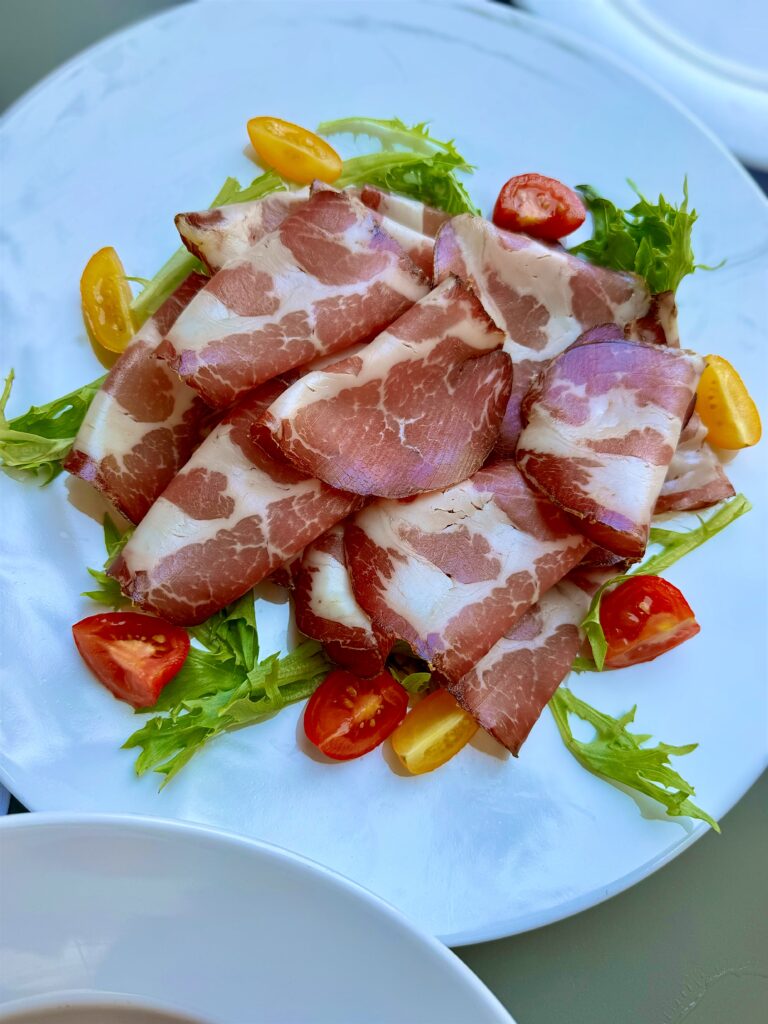
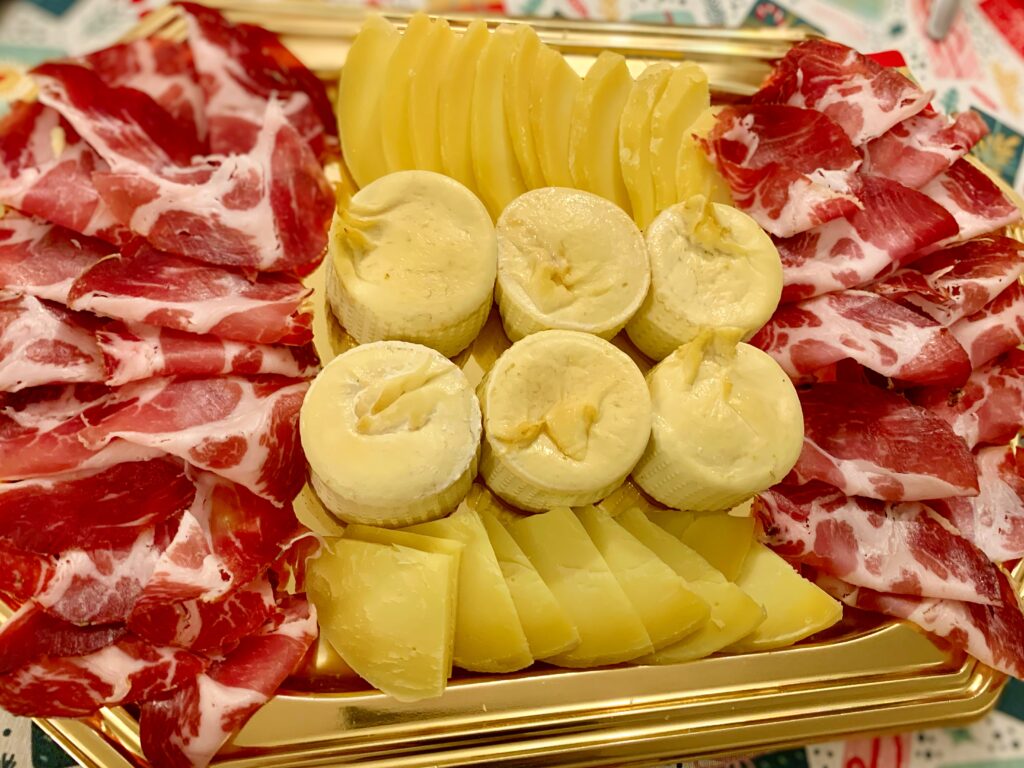
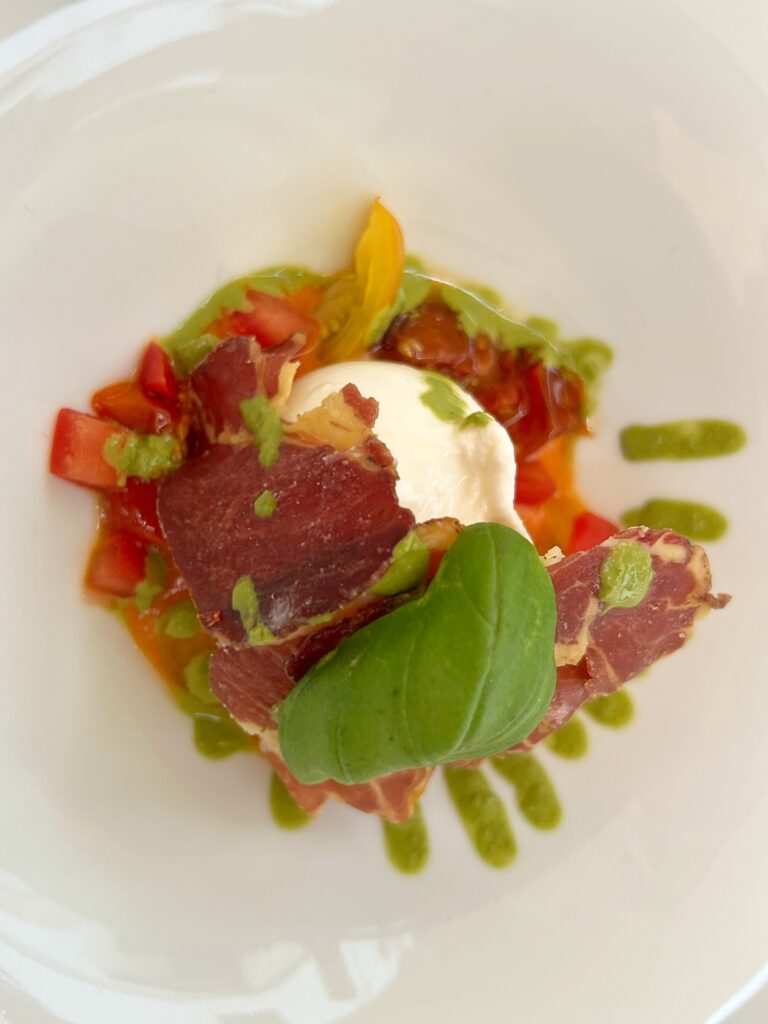

Other meat specialities
Meat traditions vary by town. In Sammichele di Bari, pride of place goes to zampina — long coils of fresh sausage made with beef, pork, and sheep’s cheese, grilled at festivals and served with bread. In the Salento, you’ll find turcinieddi (also called gnummareddi), skewers of lamb offal wrapped in intestines, eaten almost exclusively at sagre. Together these dishes show that Puglia’s meat culture isn’t just about grills — it’s about pride, seasonality, and celebration.
Podolica beef | heritage breed from Puglia’s pastures
Podolica cattle are a traditional grey breed once used as working animals, now prized for both their milk and meat. Their milk makes caciocavallo podolico, one of Puglia’s most sought-after cheeses, while the meat — lean but full of flavour — appears in select butchers and trattorie. Raised on wild pasture and scrub, Podolica beef carries the taste of the land itself, a reminder of Puglia’s pastoral roots.
Puglia Guys tip: If you see Podolica meat on a menu, try it. It’s rarer than pork or beef from modern breeds, and prized for its distinctive flavour. And we are not big beef eaters, but this is…amazing!
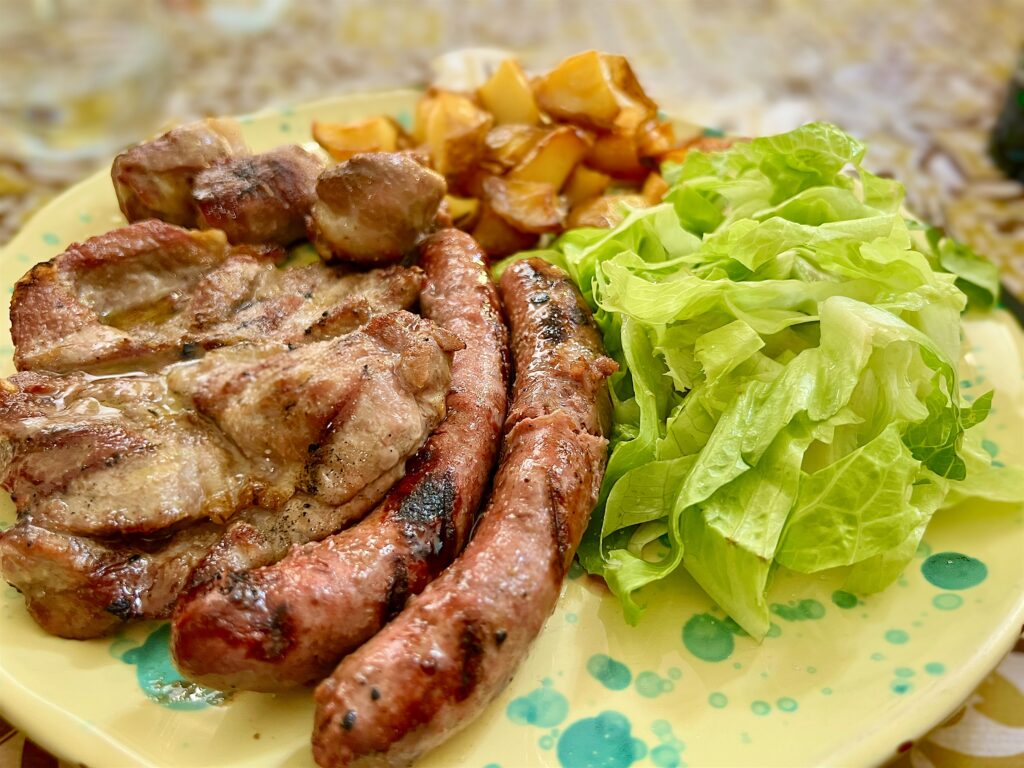
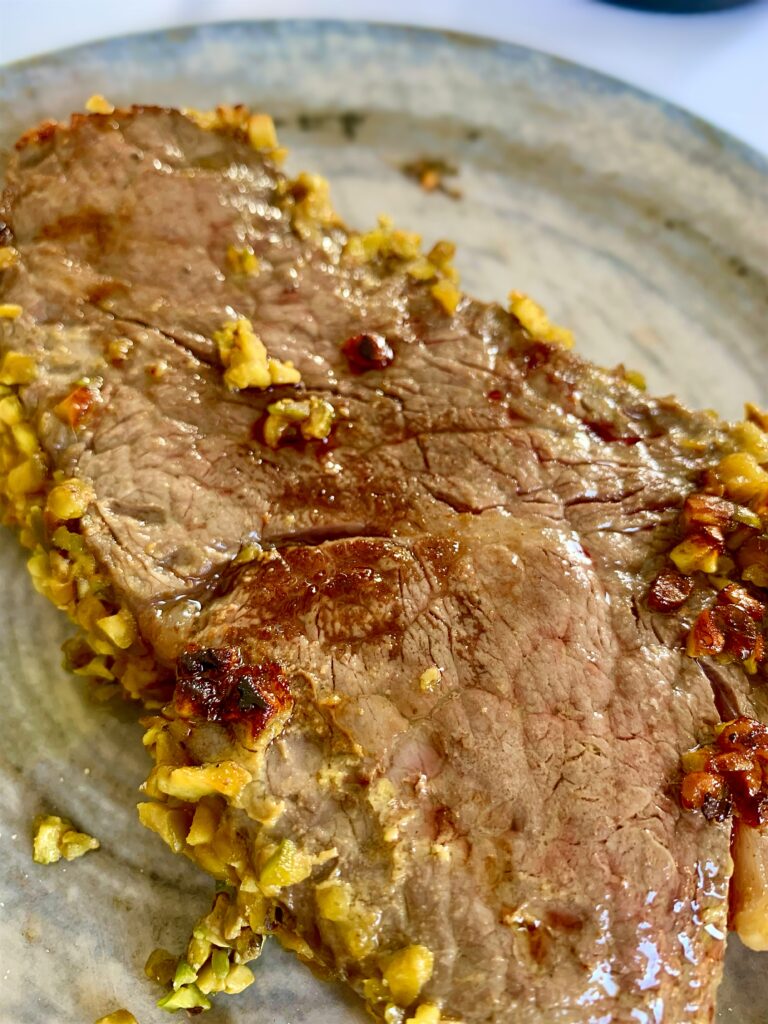
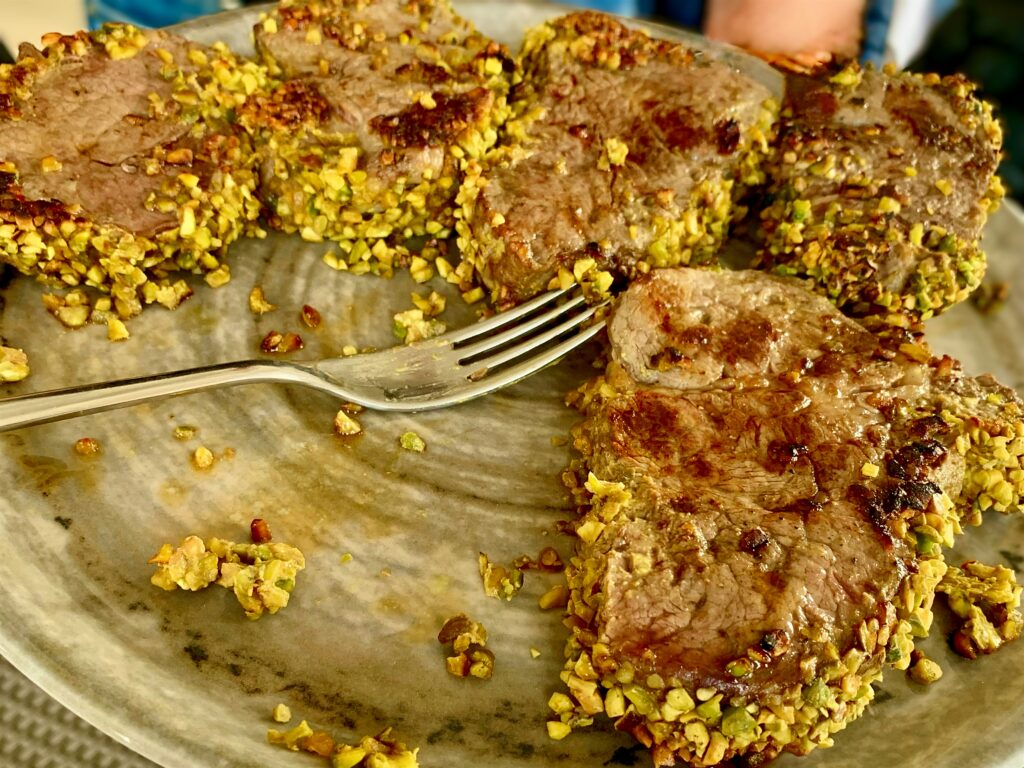
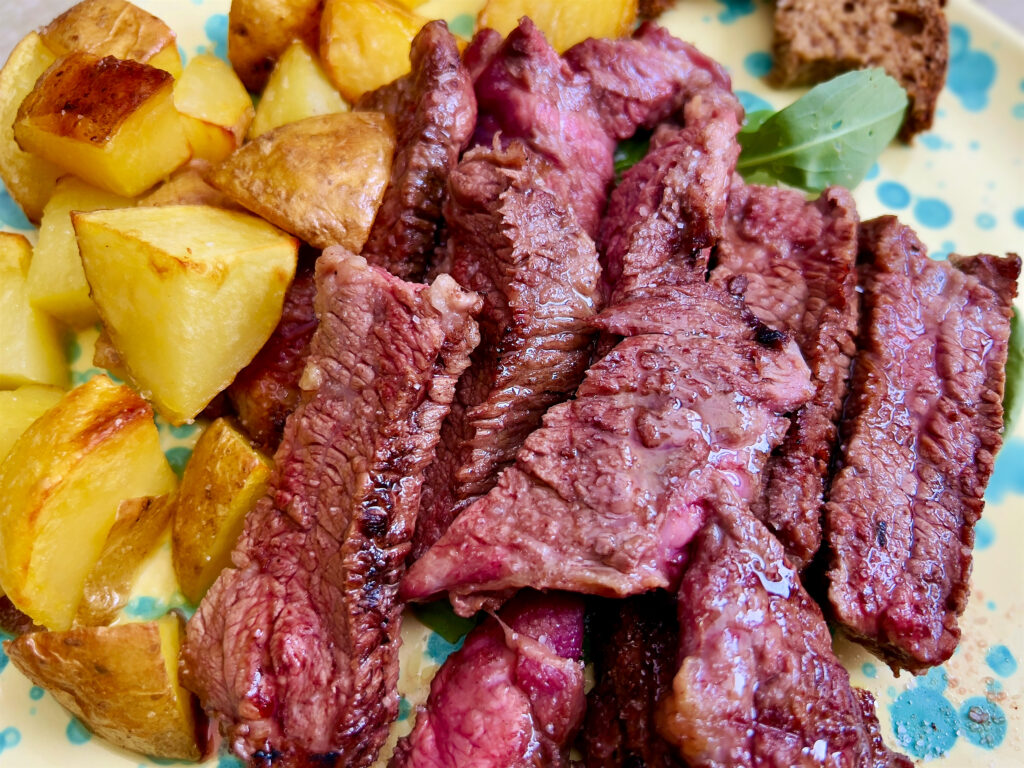
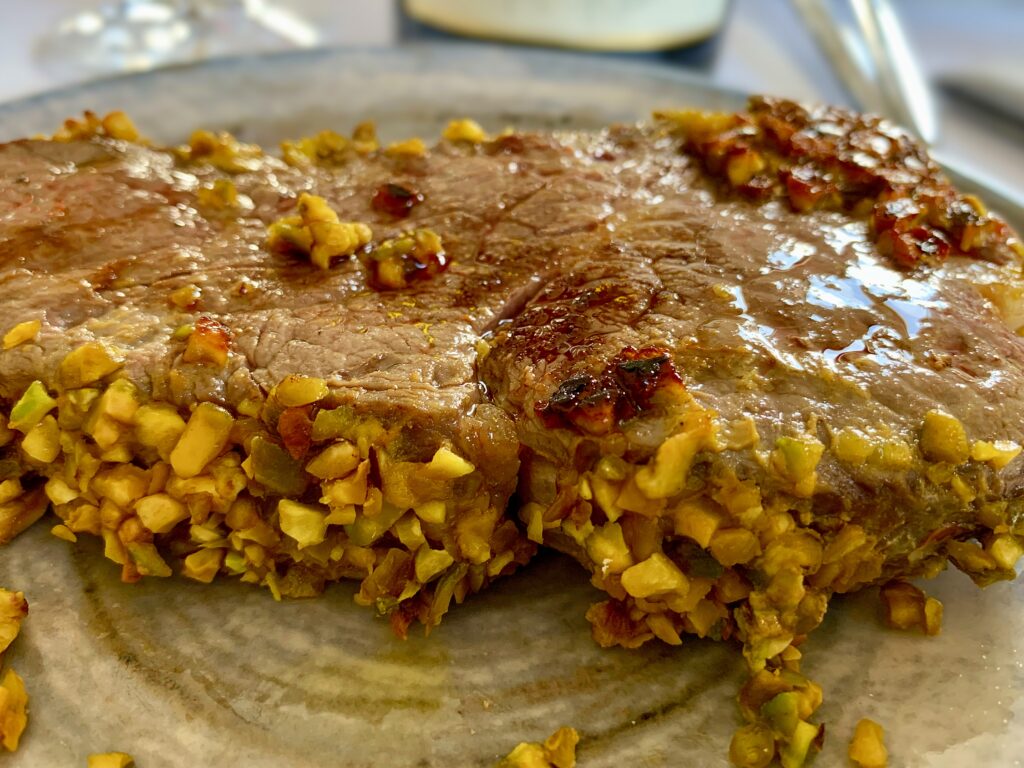
Seafood Specialities
With two coastlines on the Adriatic and Ionian seas, Puglia’s identity is inseparable from the catch of the day. In Bari and Taranto, crudo di mare — raw seafood eaten straight from the shell — is a ritual of freshness. Mussels are everywhere: layered with rice and potatoes in Bari’s tiella, or stuffed with cheese and breadcrumbs in cozze ripiene. Octopus, grilled on the seafront or slow-cooked alla pignata in terracotta pots, is a staple of both fishermen and festas. These aren’t refined restaurant inventions but dishes born of ports, markets, and coastal kitchens, where the sea has always dictated what ends up on the table.
Tiella di riso, patate e cozze | layered bake of rice, potatoes, and mussels
Where to eat it: A Bari classic, best in family-run trattorie and osterie around the city and along the coast to Taranto. Once a festival dish, today it appears whenever fresh mussels are in season, from spring through summer, across Puglia. Even its name provokes argument: is it riso, patate e cozze (rice first) or patate, riso e cozze (potatoes first)? Every household insists their way is right.
What it is: A layered bake of rice, potatoes, and mussels with onion, tomato, parsley, and plenty of olive oil. Breadcrumbs are often scattered on top for crunch, and some recipes add zucchini or pecorino. The mussels, arranged in their half-shells, release their juices as they cook, flavouring the rice. The best tiella uses cozze tarantine — mussels from Taranto, renowned for their sweetness and quality.
Why try it: This is Puglian double-carb comfort food in oven-baked form, a dish that unites land and sea. The mingling of starch from potatoes, rice, and breadcrumbs with the briny mussel liquor creates a flavour utterly local — and rarely found beyond Puglia.
Puglia Guys tip: Tiella rewards patience. It tastes even better after resting, when the layers have settled and the flavours melded. Expect variations: in Bari, mussels are essential; inland, vegetable-only versions are common. It’s hearty, filling, and best enjoyed at a leisurely lunch.

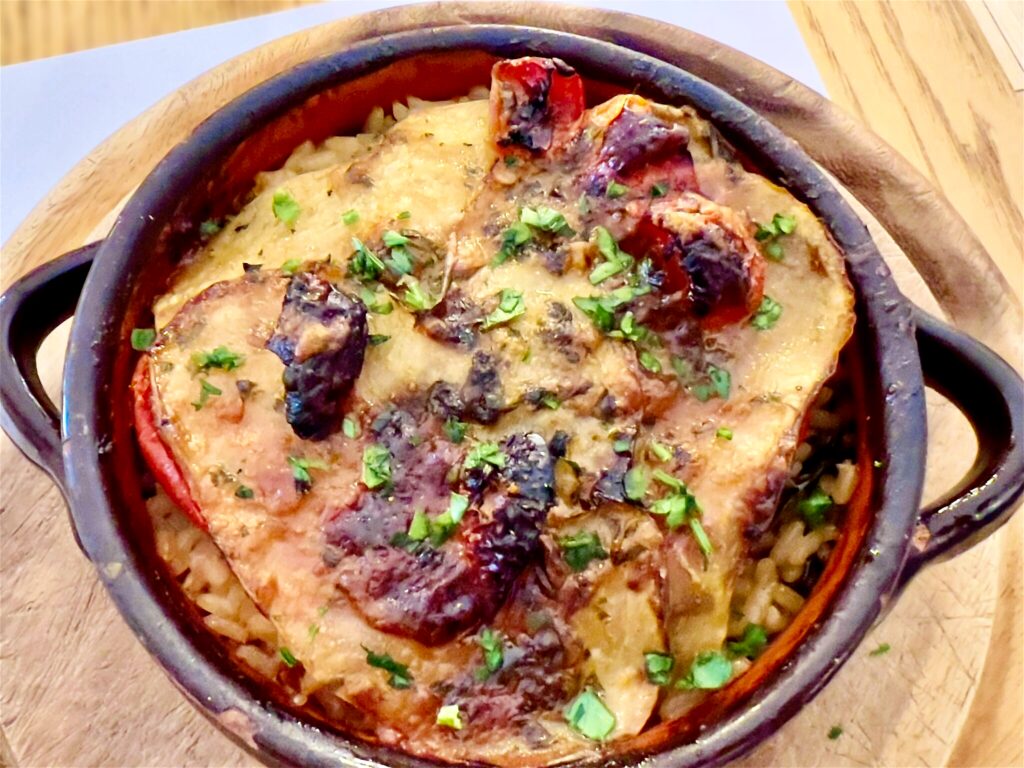
Cozze ripiene | stuffed mussels
Where to eat it: Found across Puglia, but the best are made with mussels from Taranto, where mussel farming has thrived for centuries. The city’s cozze tarantine are prized throughout Italy for their flavour.
What it is: Mussels stuffed with breadcrumbs, cheese (often pecorino or cacioricotta), parsley, and garlic. They’re can be simmered in tomato sugo, though some families bake them. As they cook, the stuffing soaks up the sauce, making each bite rich and savoury.
Why try it: The secret is in the mussels themselves. Cozze tarantine, grown in Taranto’s Mar Piccolo, are considered Italy’s best. Freshwater springs mixing with saltwater give them a distinctive sweetness and minerality. Stuffing them with bread and cheese is classic cucina povera — stretching seafood further — but the flavour is anything but humble.
Puglia Guys tip: If you see cozze ripiene in Taranto, order without hesitation. Variations exist along the Adriatic coast, but Taranto’s originals remain unmatched.
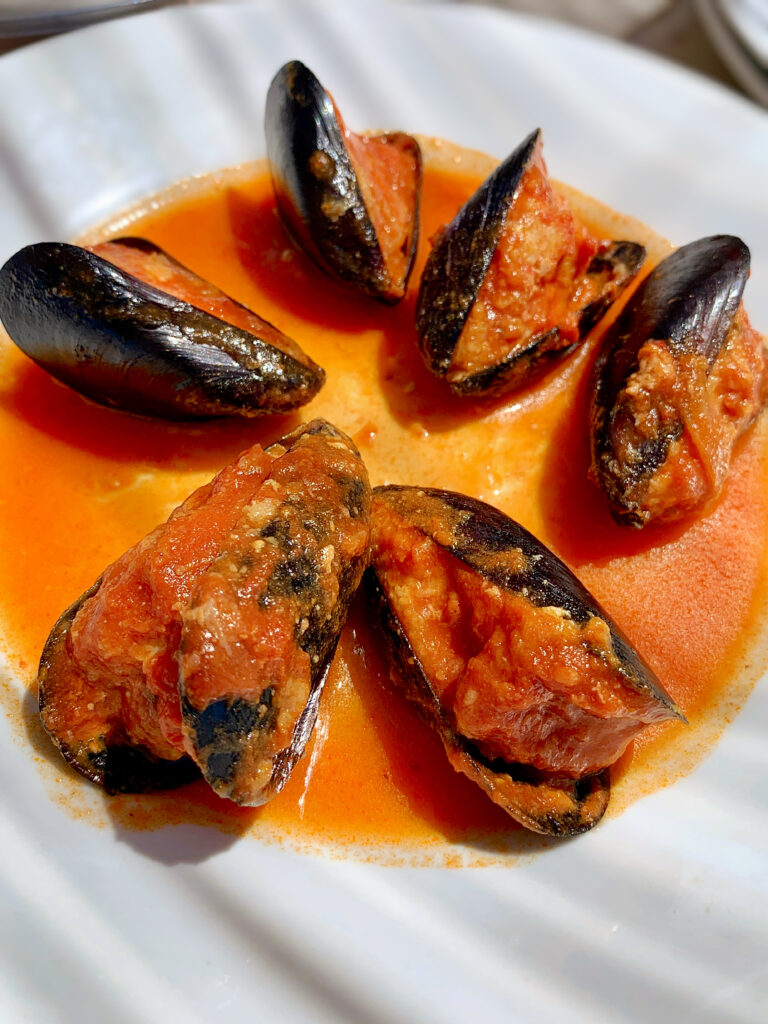
Mussels in Puglia cooking
Mussels are the backbone of Puglian seafood, especially in Taranto, where cozze tarantine are cultivated with unmatched skill. Beyond tiella and cozze ripiene, they appear in countless dishes: with pasta (spaghetti alle cozze, orecchiette alle cozze, or mixed seafood linguine ai frutti di mare); on their own in a light brodo with garlic, parsley, and white wine; or chilled in seafood salads alongside octopus, squid, and prawns. Whether piled onto pasta, simmered in broth, or tossed into a salad, mussels embody both the richness of the Ionian’s Mar Piccolo, and the ingenuity of Taranto’s farmers.
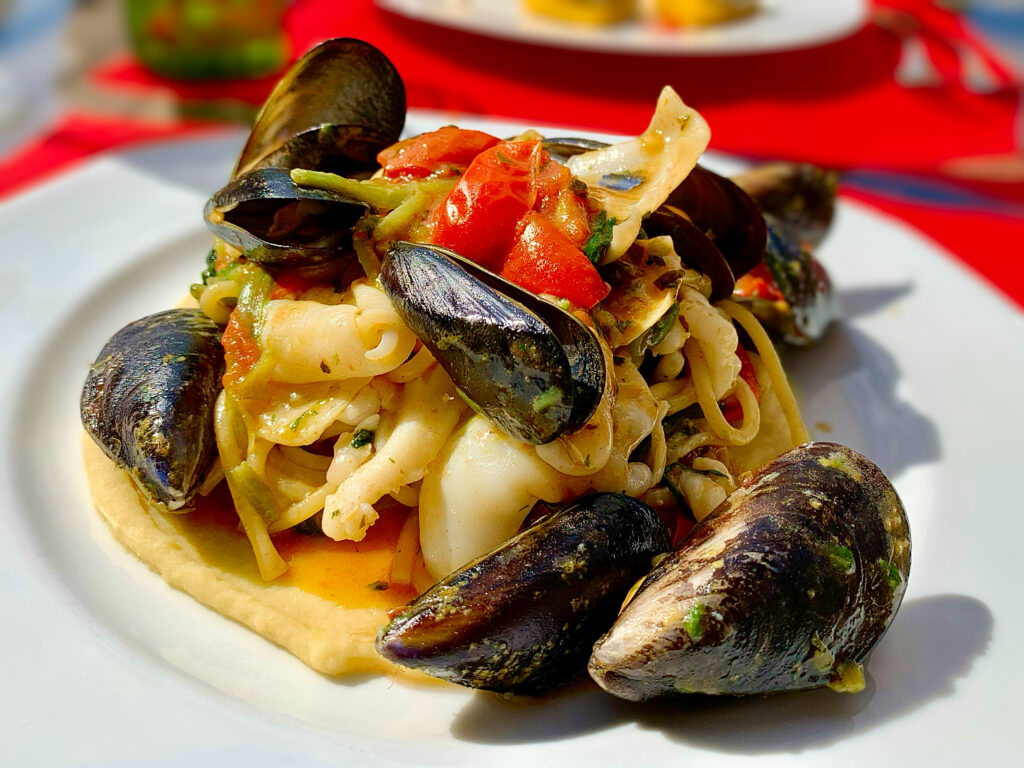
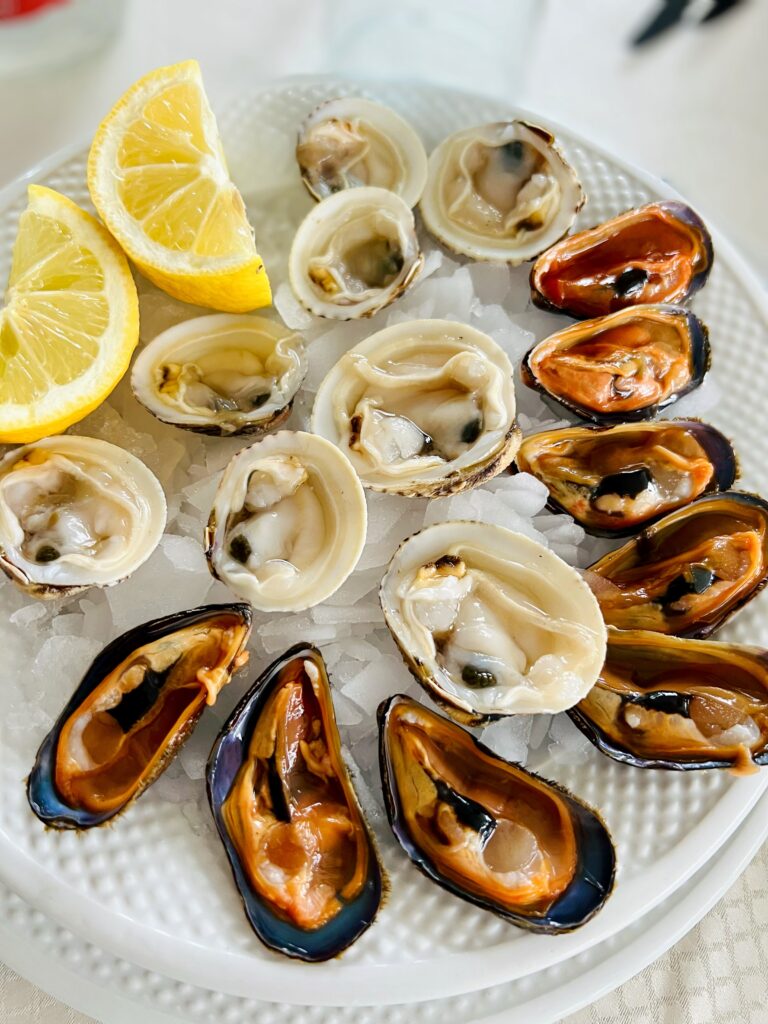
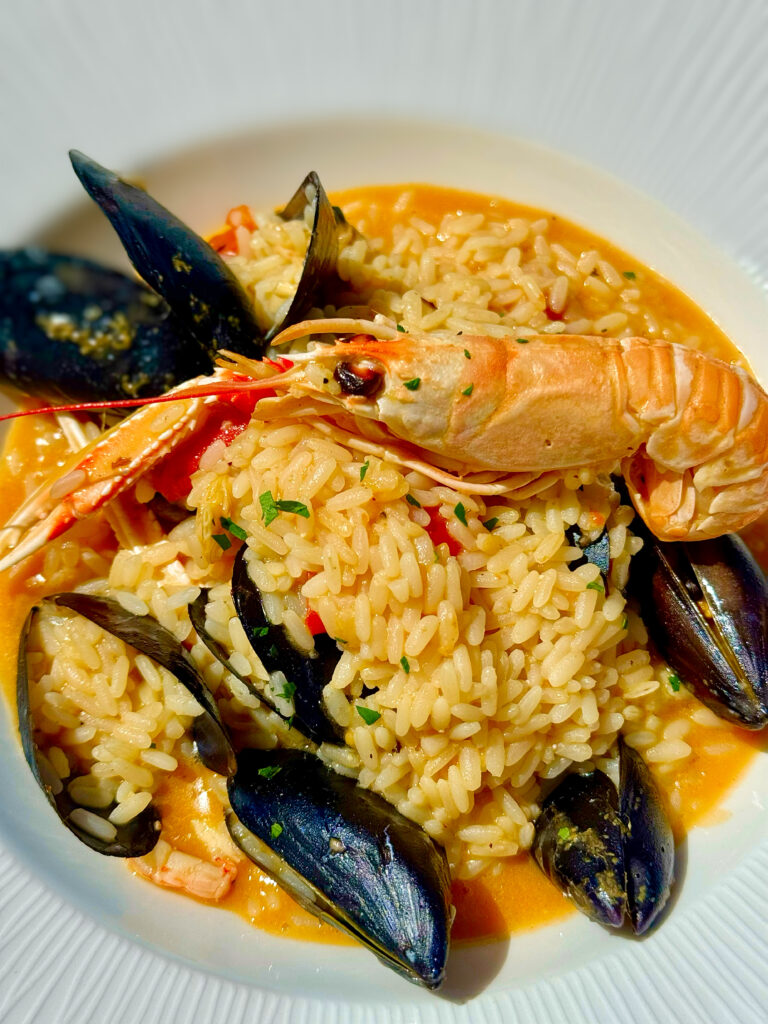
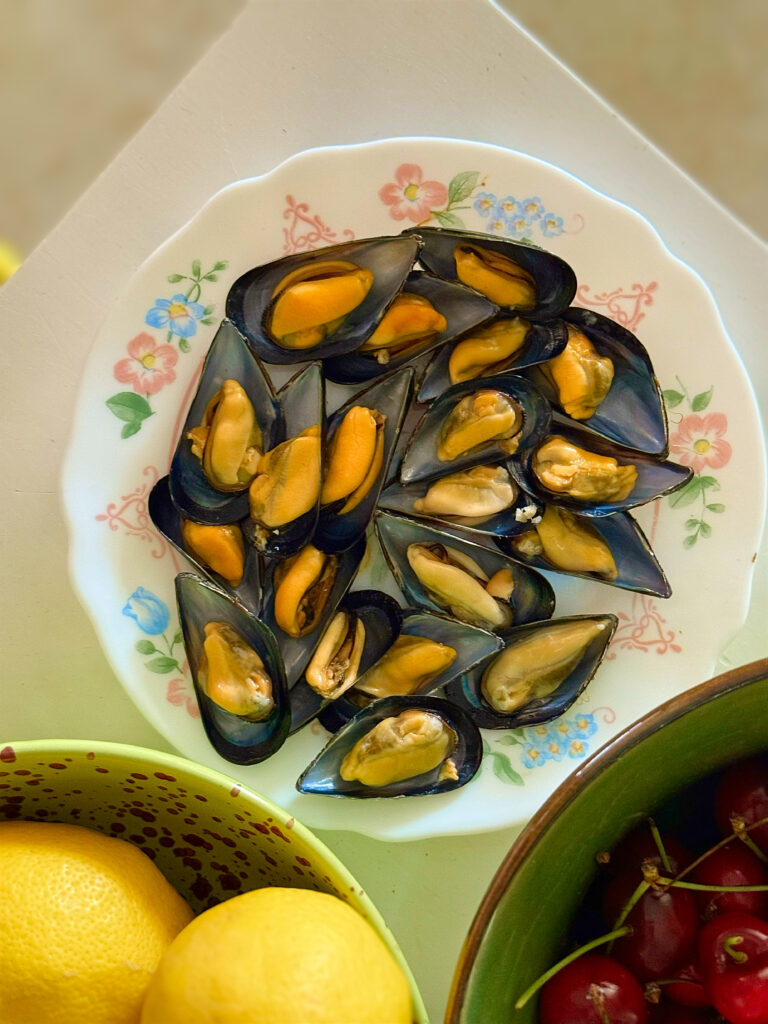
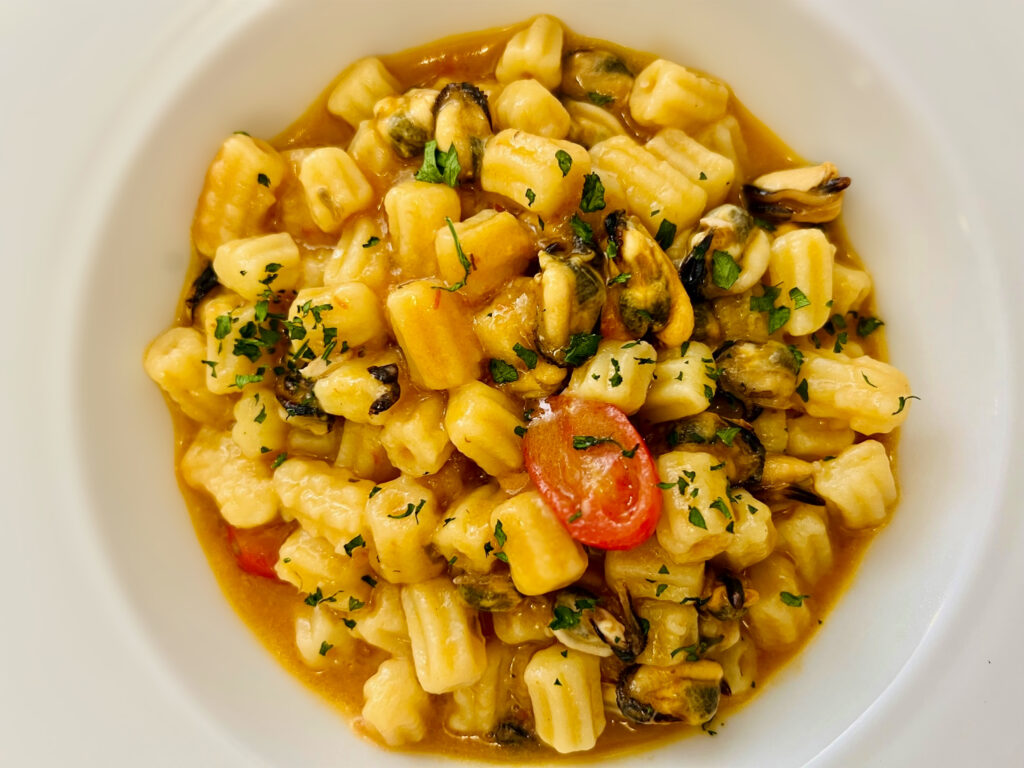
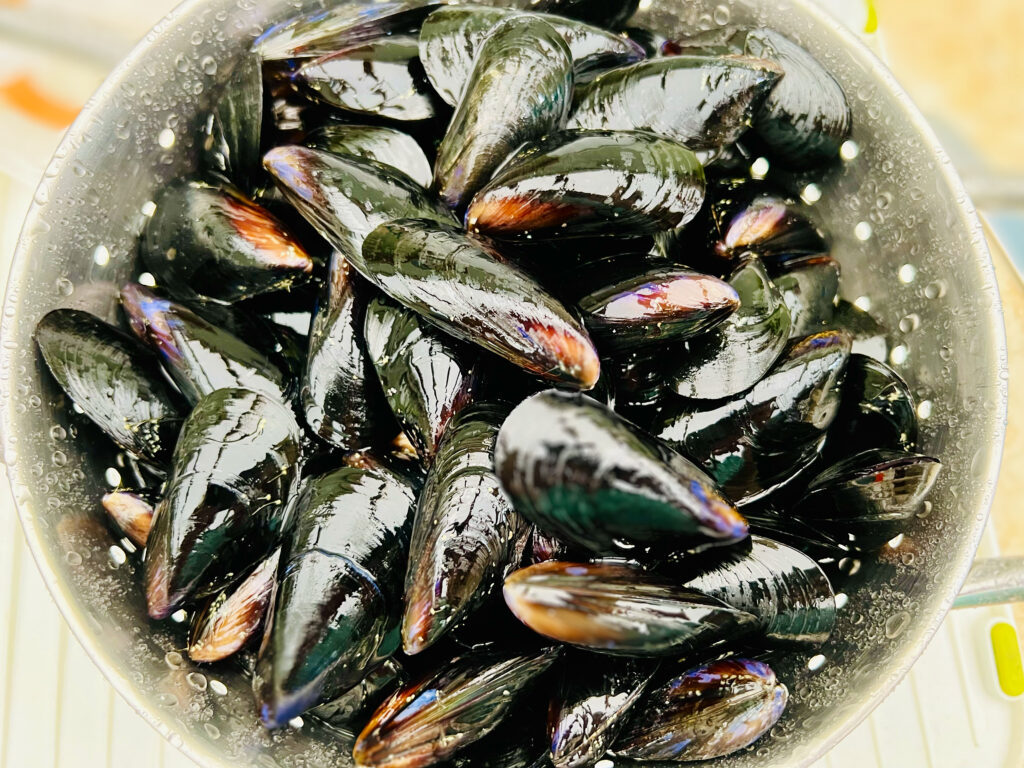
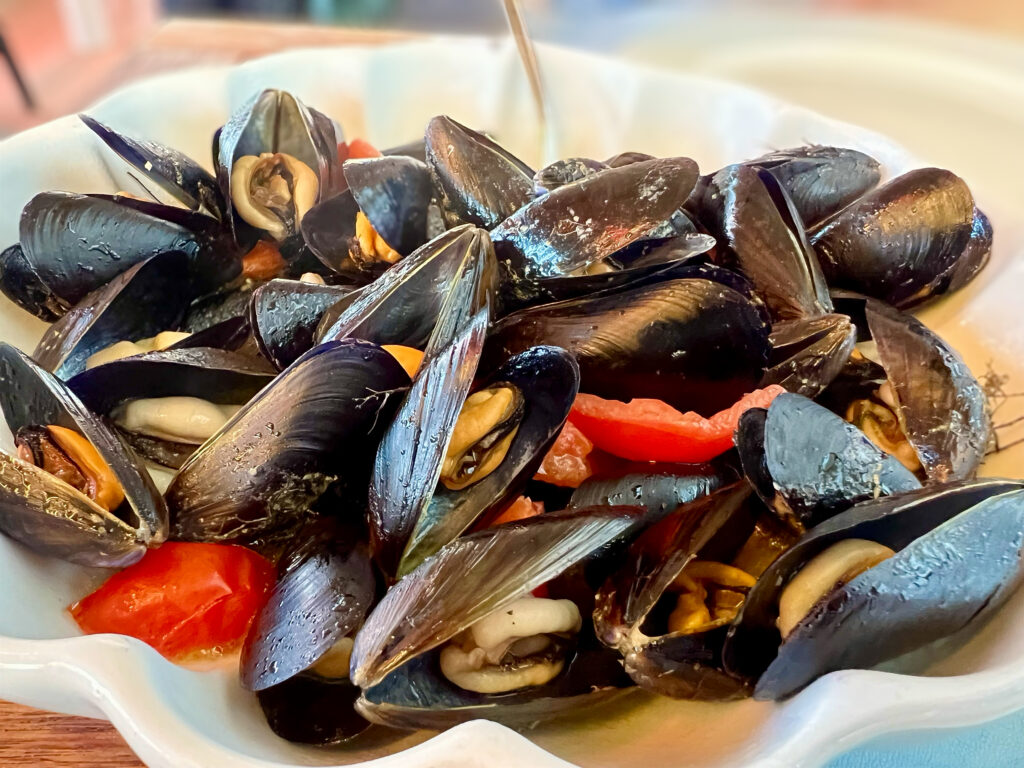
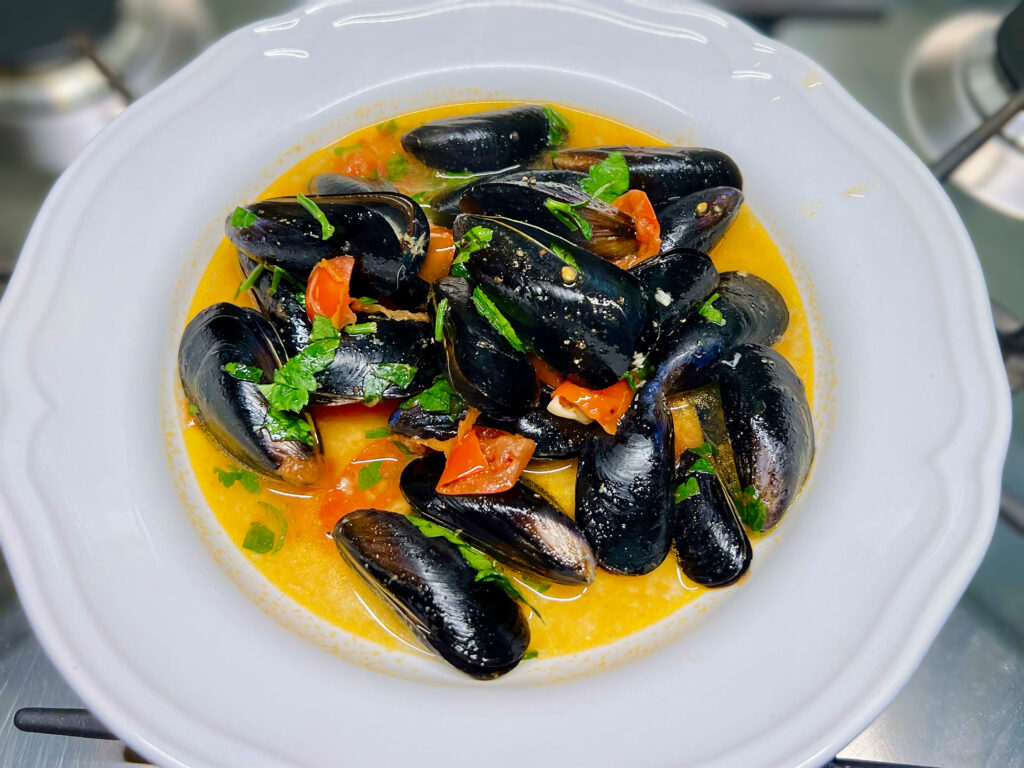
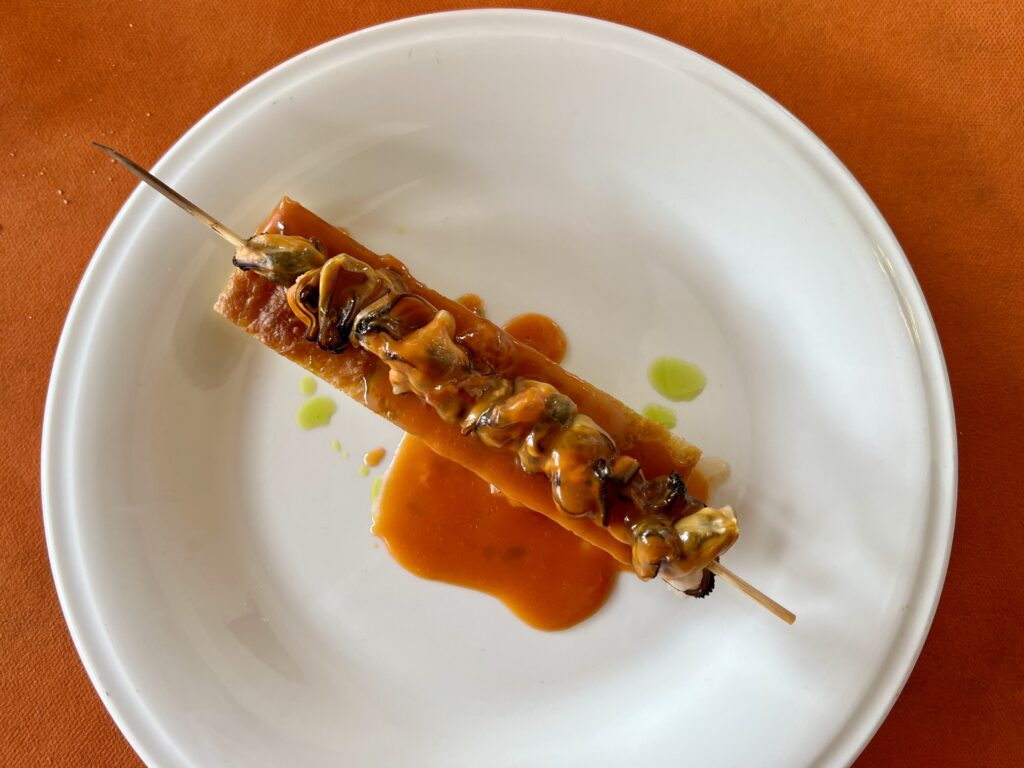
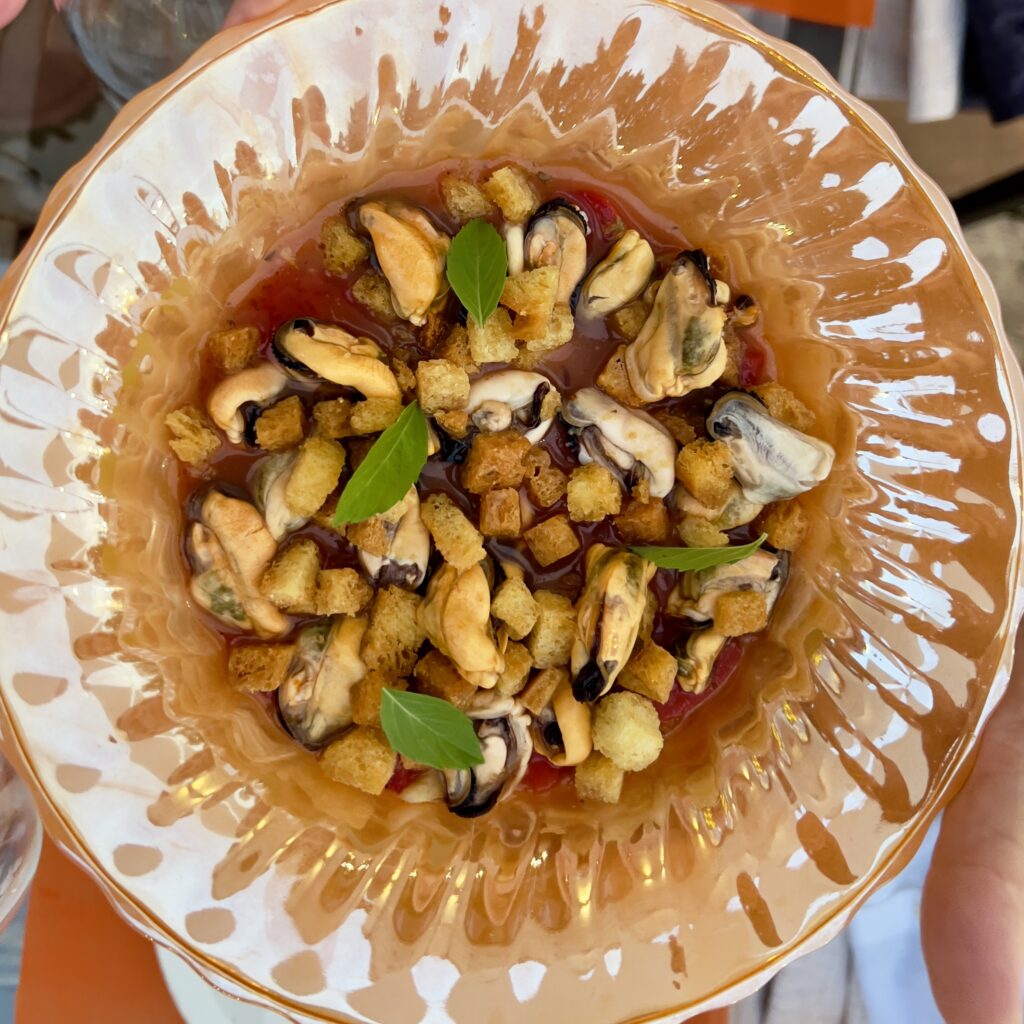
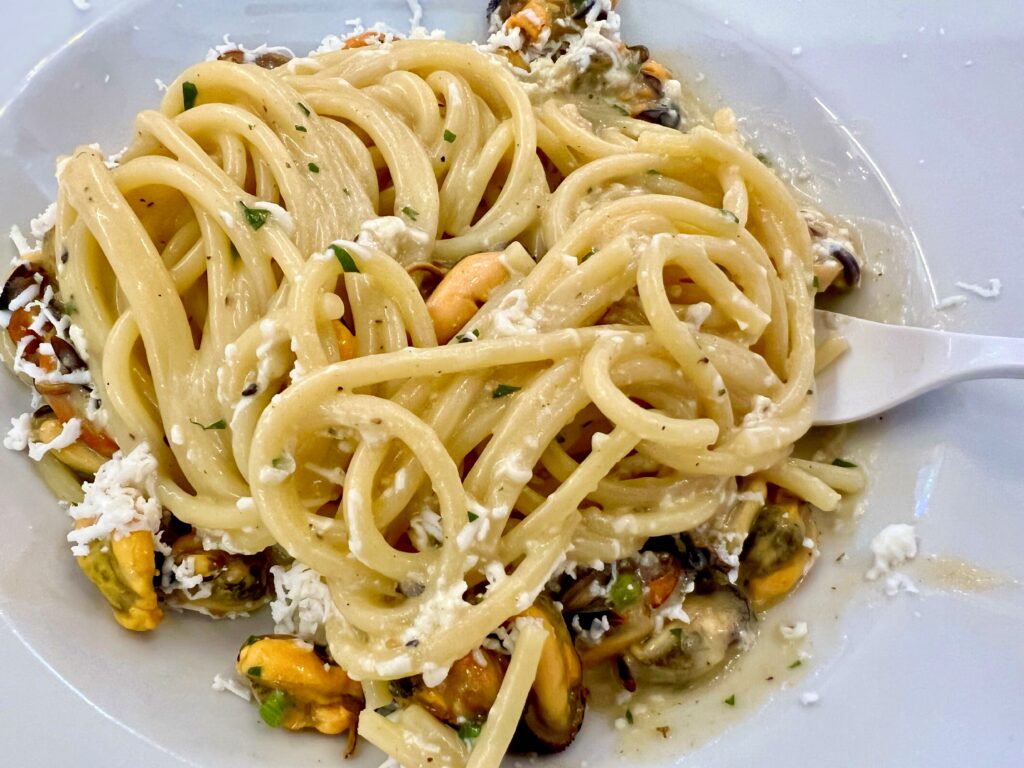
Polpo alla pignata | octopus slow-cooked in terracotta
Where to eat it: A Salento speciality, especially around Gallipoli, Otranto, and Lecce. Found in traditional trattorie and still cooked in clay pots in family homes on Sundays and at festas.
What it is: Octopus cut into pieces and slow-cooked at the side of an open fire in a pignata — a traditional terracotta pot — with tomato, onion, parsley, potatoes, and olive oil. The octopus releases its own juices, creating a sauce that is rich and briny, with the potatoes soaking up all the flavour.
Why try it: More than a recipe, it’s a method. The pignata distributes heat in a way that makes octopus tender while concentrating the sauce. It reflects both Puglia’s peasant roots and its coastal bounty: simple ingredients transformed by time and patience. Few dishes define Salento more clearly.
Puglia Guys tip: Look for it on menus in Lecce or Gallipoli, where octopus is landed daily. At a sagra or in someone’s home, don’t miss the potatoes — locals prize them even more than the octopus itself. Pair with a robust local rosato.

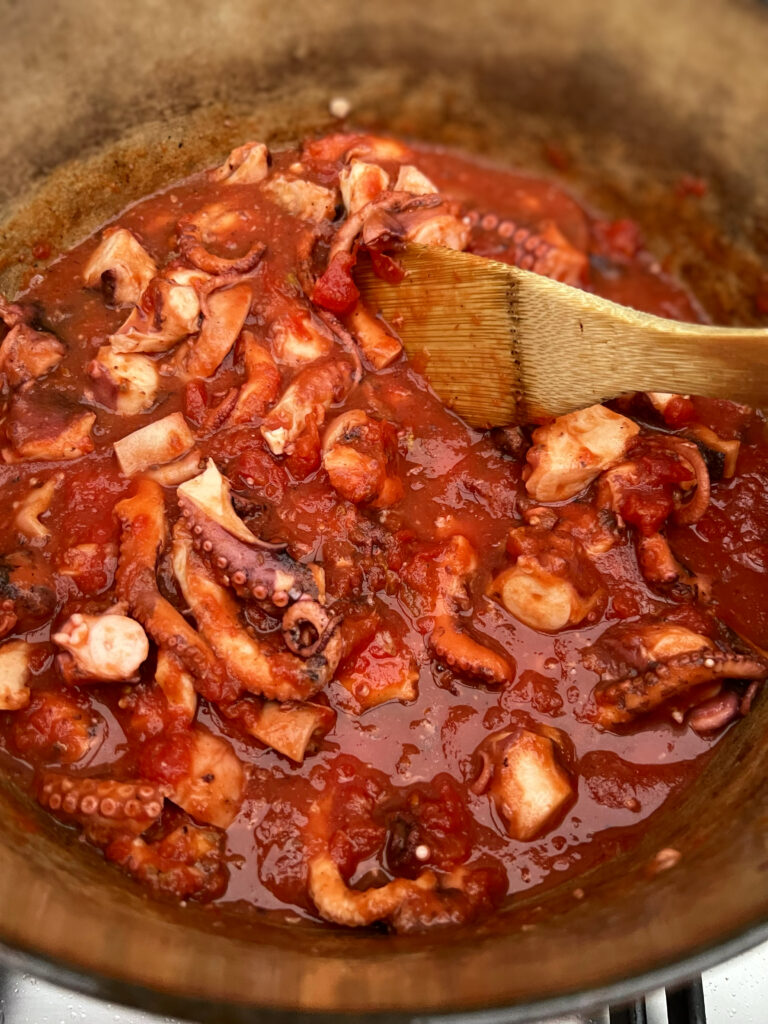
Polpo panini | octopus sandwiches | polpo
Octopus also stars in one of Puglia’s best seaside snacks: the polpo panino. These sandwiches are staples of coastal towns, where grilled or fried octopus is tucked into bread with salad and lemon. The most famous gourmet version is at Pescaria in Polignano a Mare, where their fried octopus panino has cult status (they even serve a polpo spaghetti all’assassina). For something more rustic, head to Cala Paura, just outside Polignano’s old town, where kiosks serve freshly grilled octopus panini at simple seaside tables. Whether refined or unfussy, the polpo panino is one of the great pleasures of eating on the Puglian coast.
And if you don’t like it in a sandwich, there are plenty alternatives…
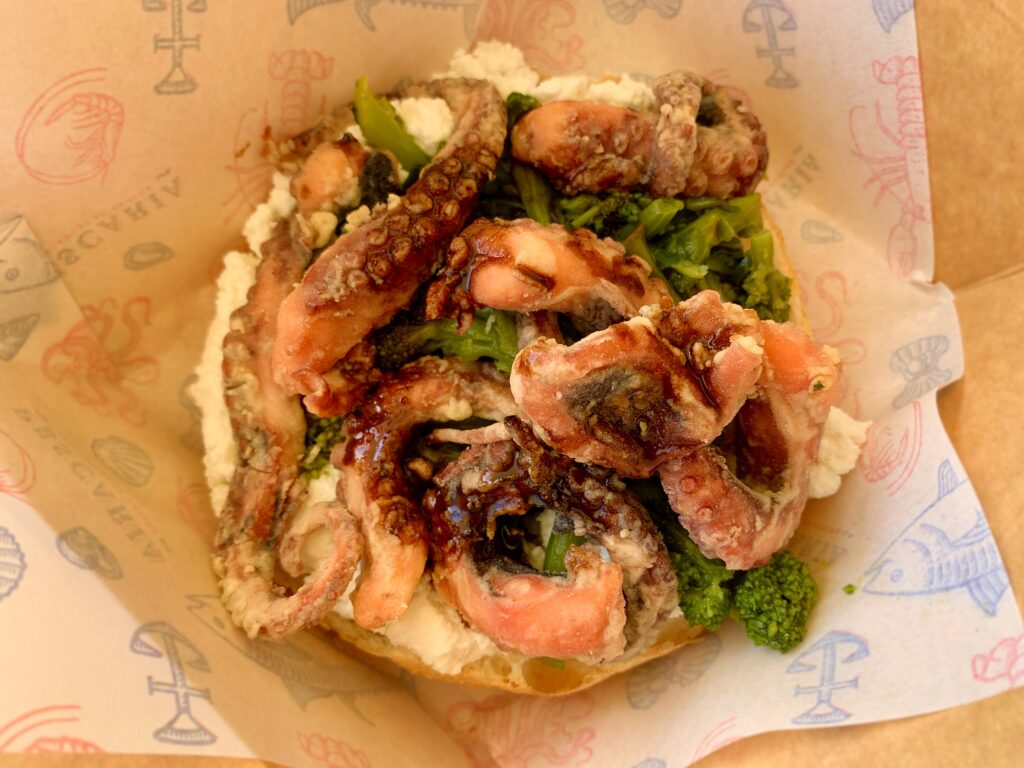
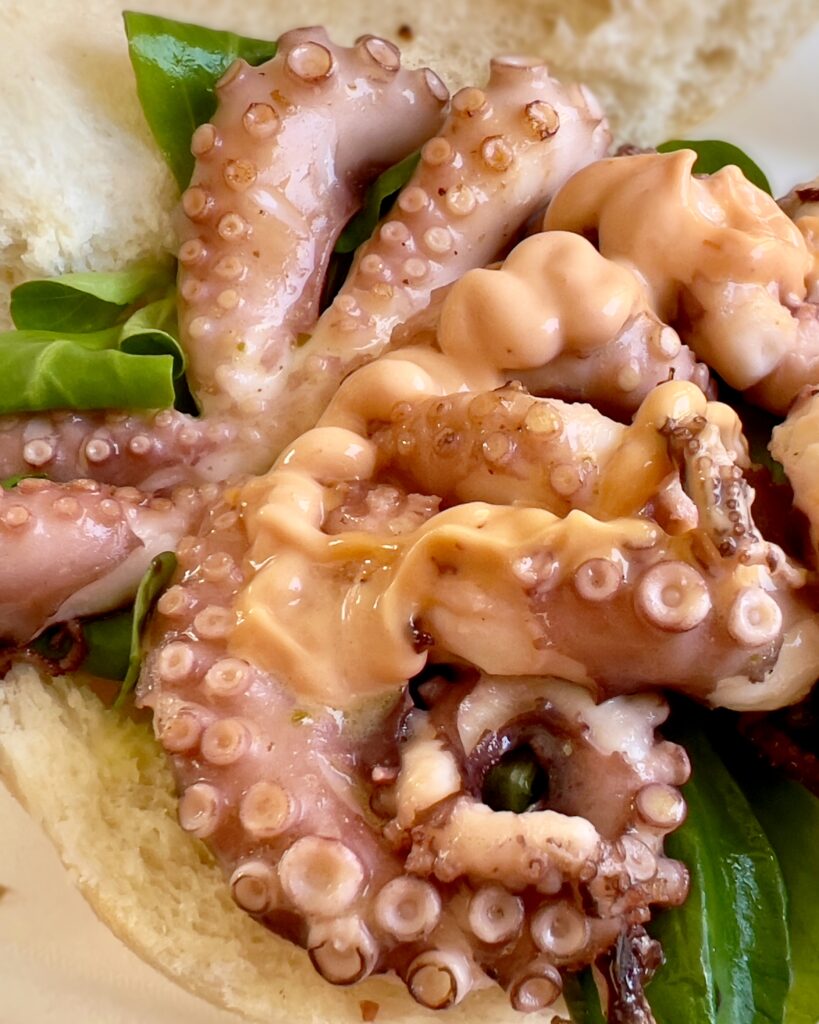
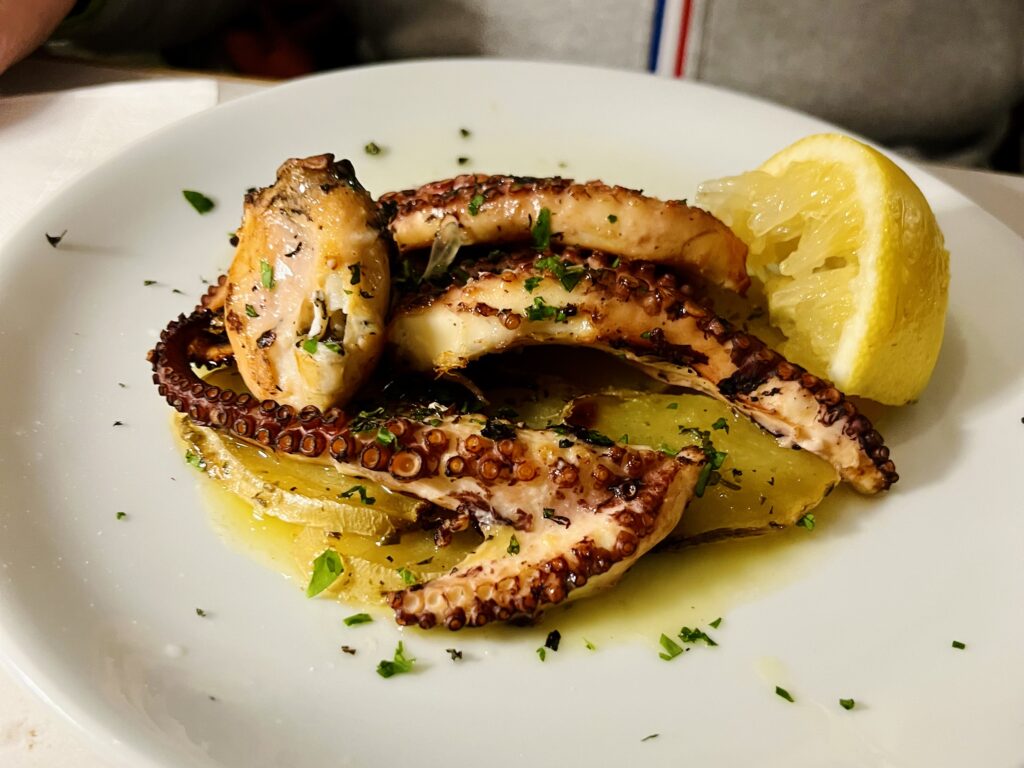
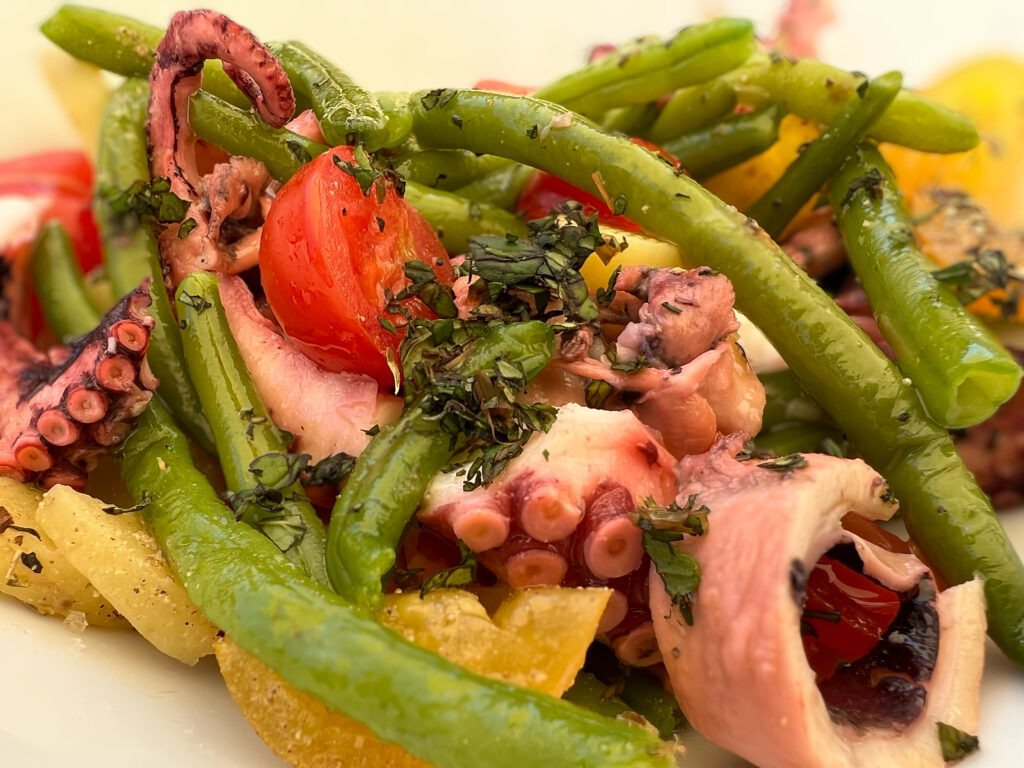
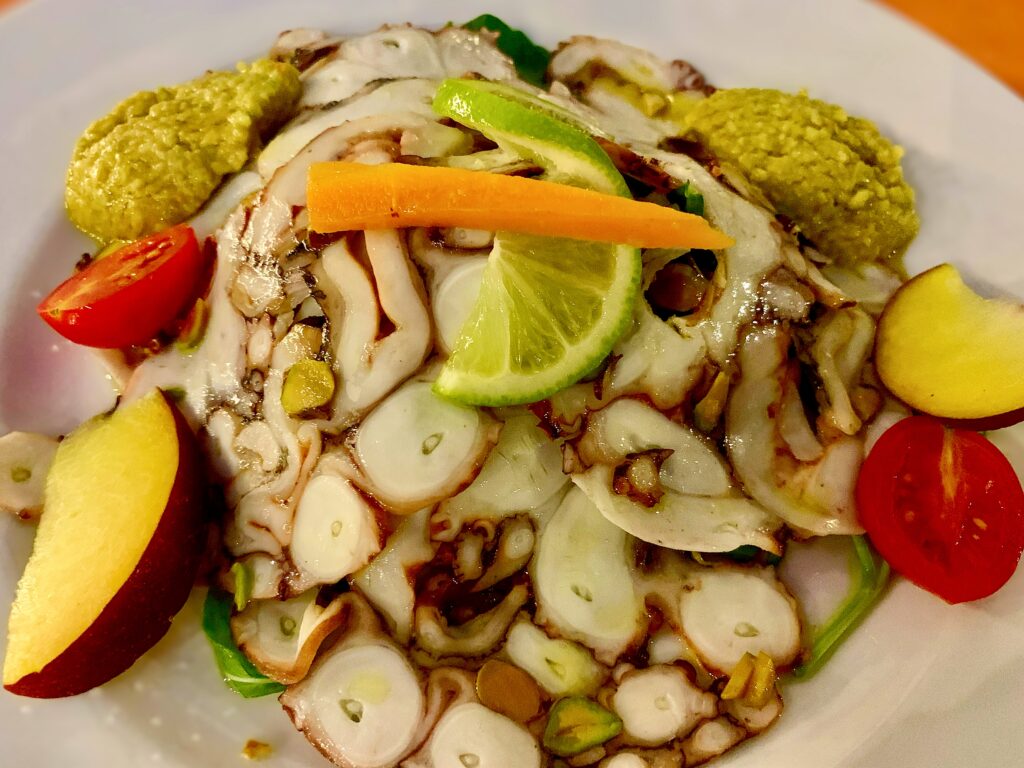
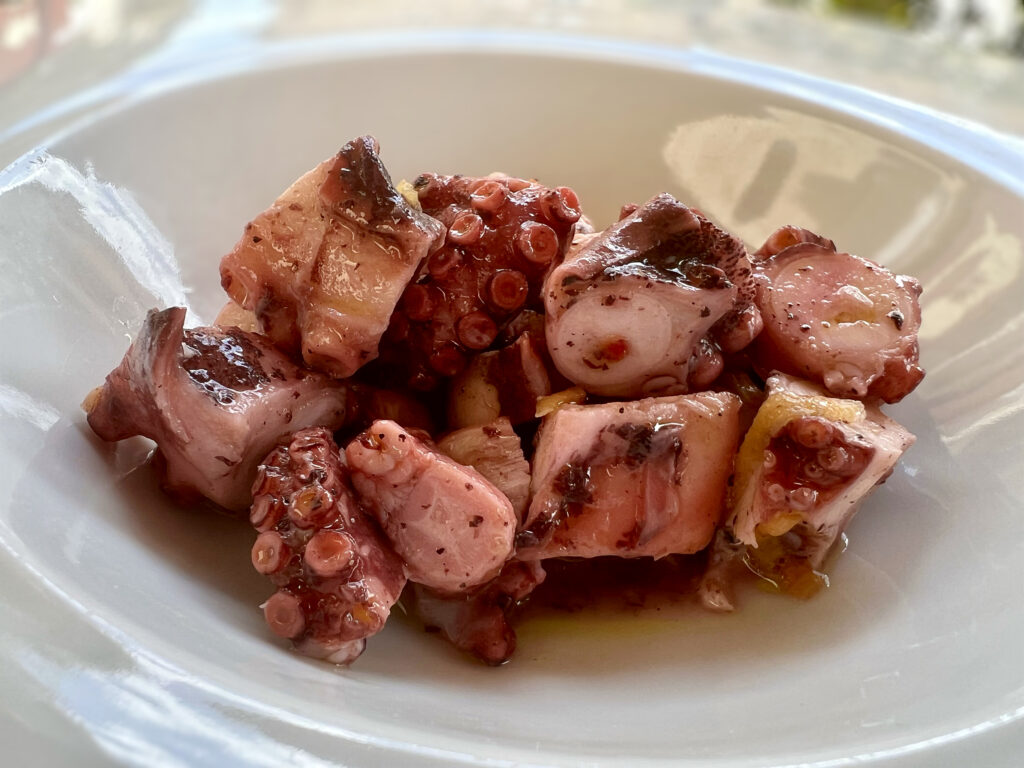
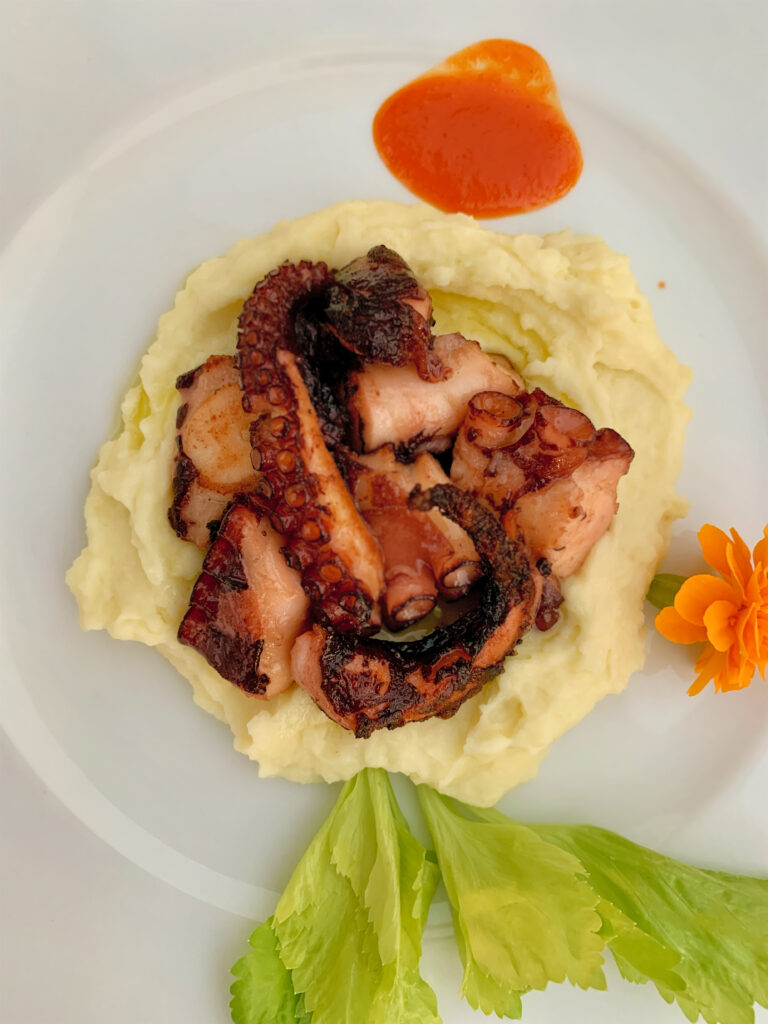
Crudo di mare | raw seafood at its freshest
Where to eat it: Most deeply rooted in Bari and Taranto, where locals buy directly from fishermen and eat it on the spot. In Bari Vecchia’s fish market, mornings bring trays of just-caught mussels, clams, sea urchins, and prawns, eaten with little more than a squeeze of lemon and a chunk of bread.
What it is: Puglia’s answer to sashimi, eaten since Roman times. The line-up often includes mussels, razor clams, prawns, oysters, sea truffles, and sea urchins (ricci di mare), prized for their sweet, iodine-rich roe. Increasingly, restaurants also serve carpaccio di pesce — thin slices of tuna, swordfish, or amberjack dressed with olive oil, lemon, and herbs.
Why try it: For many locals, especially in Bari, eating seafood raw is a point of pride. It’s proof of absolute freshness and a direct connection to the sea. Few experiences are as vivid as slurping a raw clam, opening a spiny urchin, or tasting fish carpaccio dressed only with oil and lemon. Not for everyone — but unforgettable if you try.
Puglia Guys tip: Season matters. Sea urchins are eaten only in winter and early spring, when they’re at their best. If you’re unsure, start with raw prawns or mussels, or try a simple fish carpaccio. Above all, remember: this isn’t restaurant theatre — crudo di mare is a way of life. Experience it at the markets in Bari or Taranto to understand why locals call it the freshest taste of all.
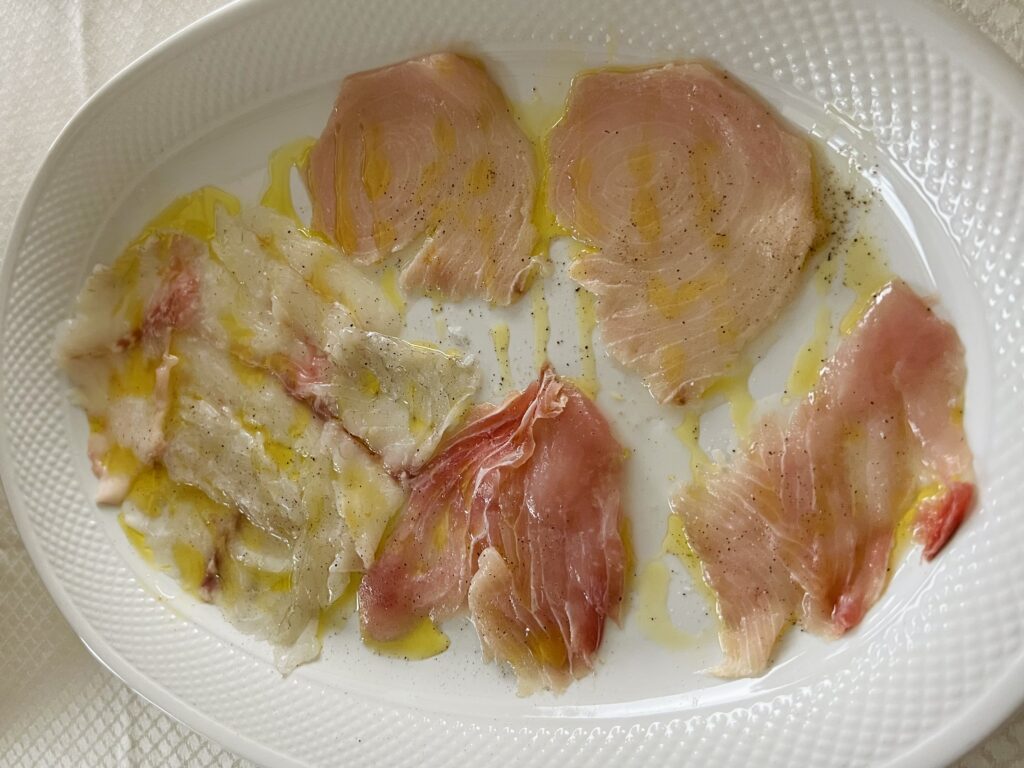

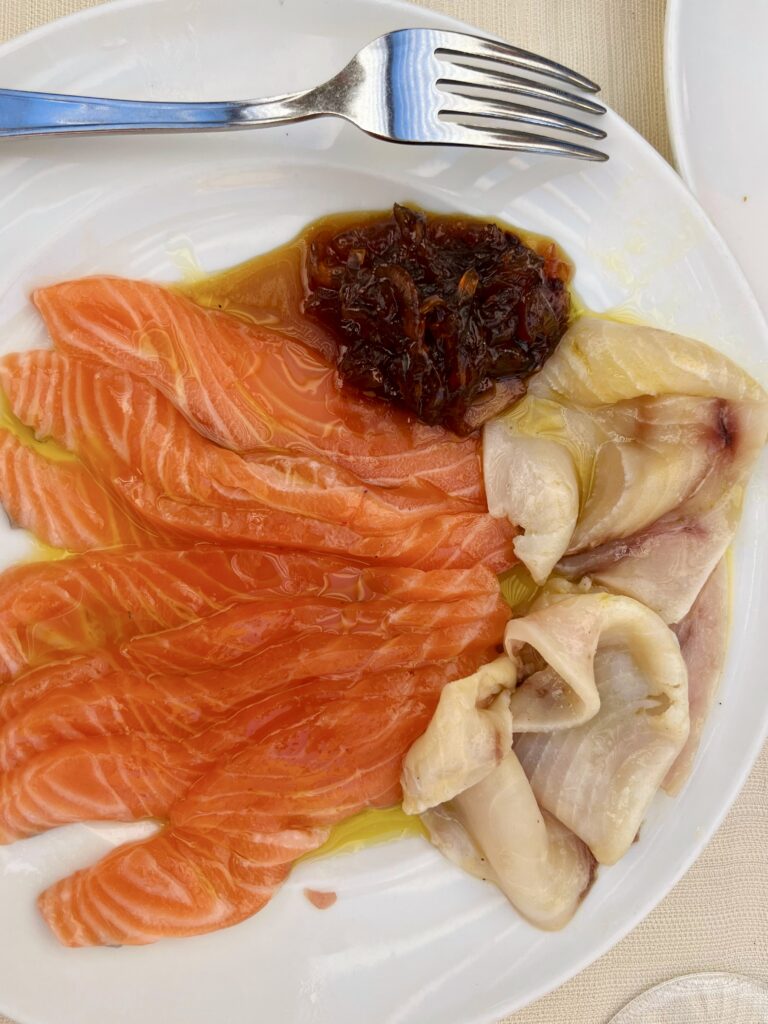
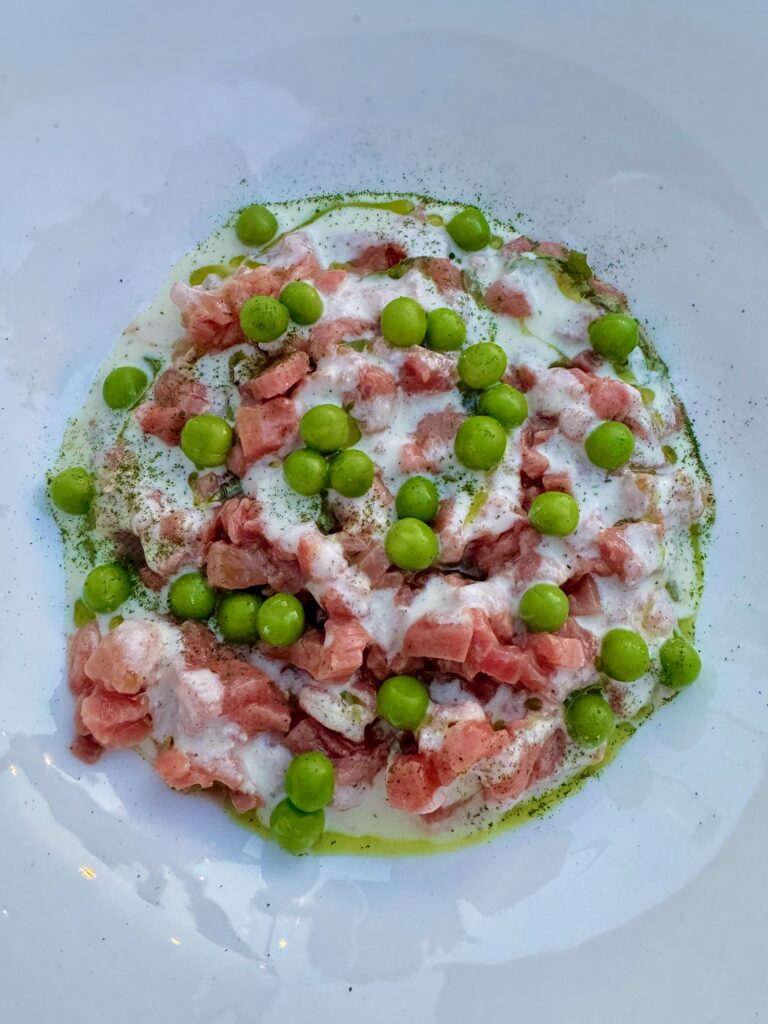
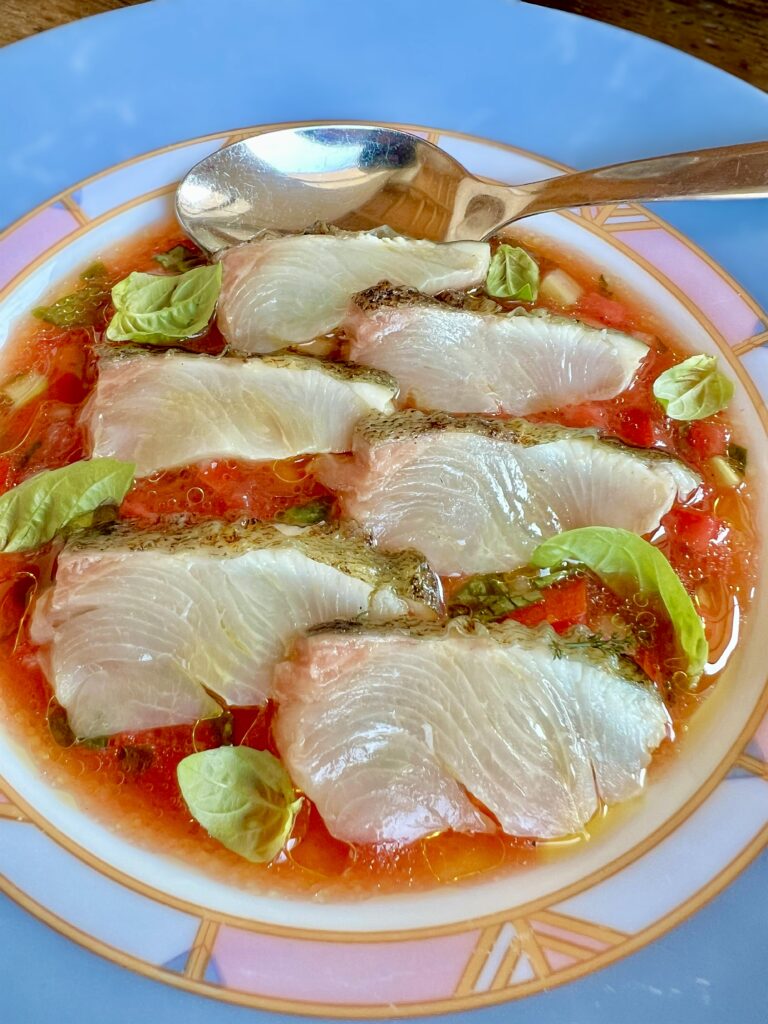
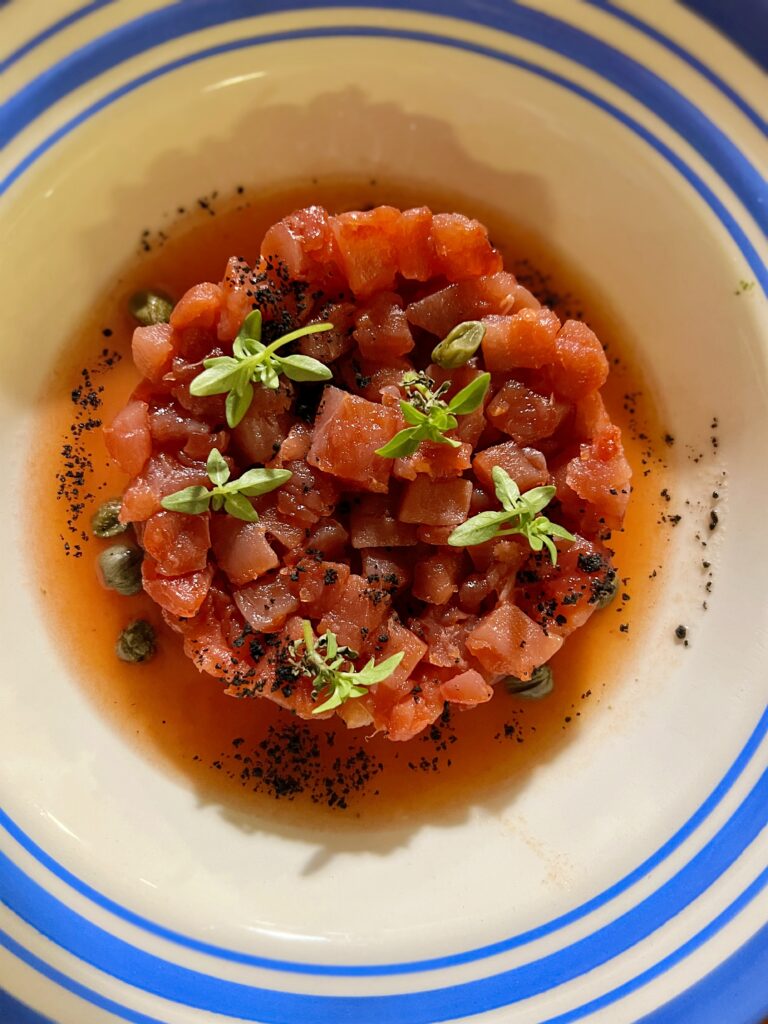


More fish in the sea…
Puglia’s menus are full of seafood dishes that go far beyond the classics we’ve highlighted here. Crudo may be the most obvious expression of freshness, but it’s only one part of the story. You’ll find mussels and clams folded into linguine ai frutti di mare or risotto alla pescatora, prawns and squid in mixed grills or seafood salads, and whole fish baked in salt or roasted simply with lemon and olive oil. Swordfish and tuna appear as steaks or thin carpacci, while anchovies and sardines are often marinated or fried. In short, there are plenty more fish in the sea — and in Puglia, almost every trattoria and osteria will offer its own take on the day’s catch.
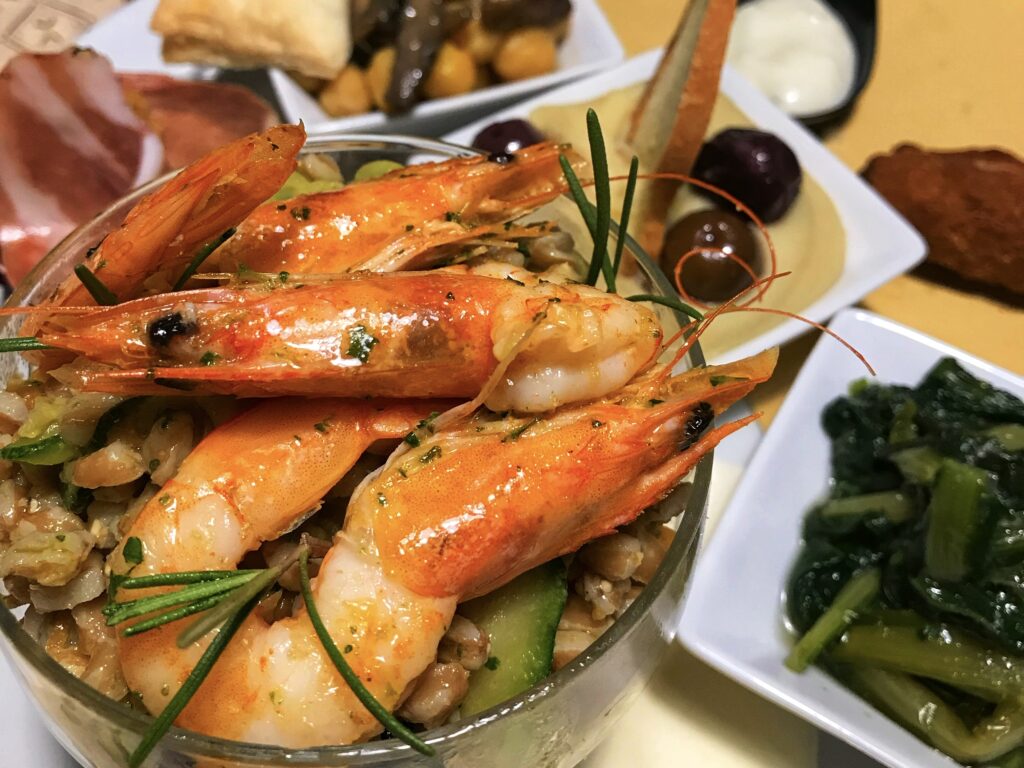

Dolci | Sweet Treats & Pastries
In Puglia, sweets are inseparable from the calendar of feasts and family traditions. Some are everyday pleasures — like a warm pasticciotto with morning coffee — while others appear only at Christmas, Easter, or on saints’ days. Each carries meaning beyond flavour: cartellate at Christmas, zeppole for St Joseph’s Day, or sporcamus for Bari’s sweet tooth year-round. These dolci aren’t elaborate or showy; they are rooted in home kitchens, shared at festive tables, and passed down through generations. To eat them is to take part in Puglia’s celebrations, one bite at a time.
Pasticciotto | Lecce’s custard-filled pastry
Where to eat it: Lecce may be most closely associated with pasticciotti, but for the truest taste it’s worth making a pilgrimage to Galatina, where they were first created. Across the Salento, they are the breakfast pastry of choice.
What it is: A shortcrust pastry filled with custard, baked until golden. Variations include chocolate or pistachio, but the classic remains plain custard — sometimes with a single amarena cherry in the middle, our favourite version.
Why try it: The pasticciotto is the Salento’s signature pastry, and one of Puglia’s proudest contributions to Italian dolci. The most iconic local breakfast pairs a warm pasticciotto with caffè leccese — iced espresso sweetened with almond syrup — for a combination that’s both rich and refreshing.
Puglia Guys tip: Always eat them warm from the oven, ideally standing at the counter of a pasticceria. Once cooled, they lose their magic.
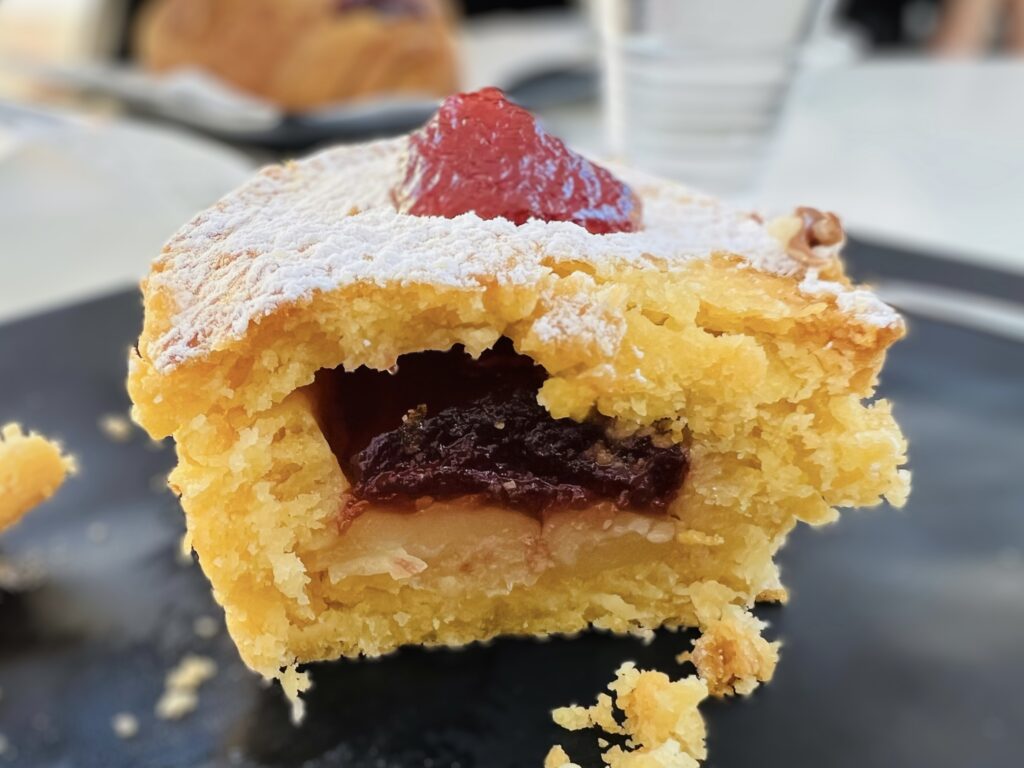
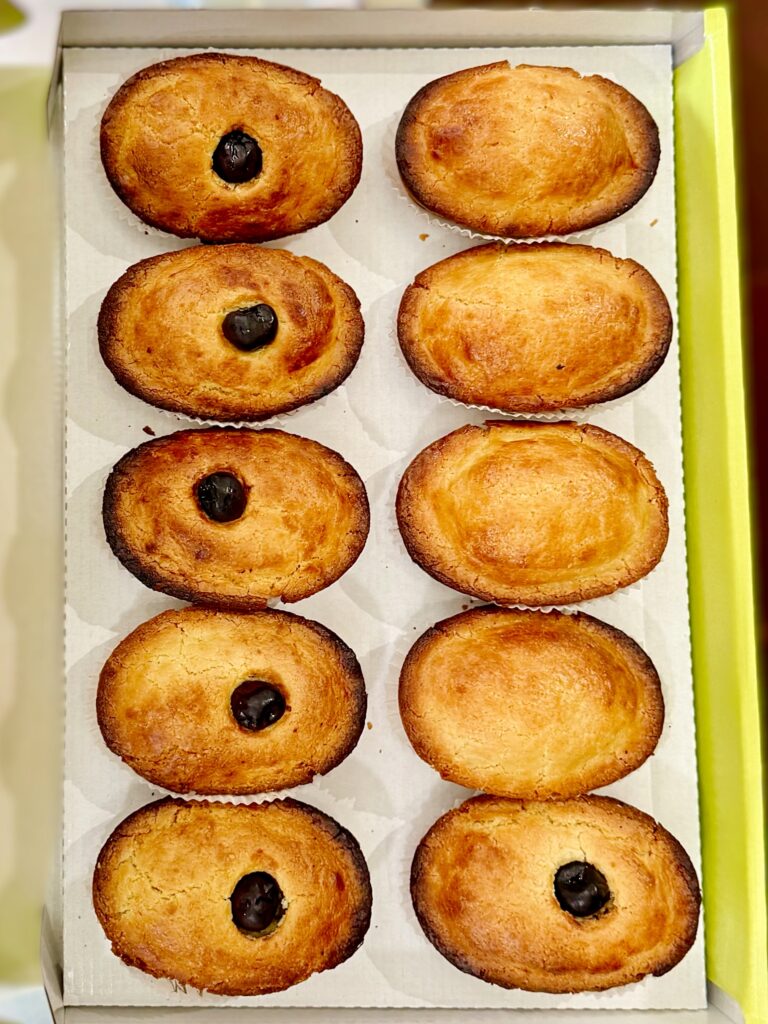
Cartellate | festive spirals of fried pastry
Where to eat it: A Christmas speciality across Puglia, with regional variations locals defend fiercely. In Bari Vecchia, from December through Epiphany (6 January), the pastaie — women who make pasta at home — can often be seen shaping cartellate in their kitchens. You can buy them fresh from the pan, still dripping with warm, sticky vincotto.
What it is: Strips of dough coiled into spirals, fried, and dipped in honey or vincotto (reduced grape must). In Bari they are usually small and dark; in the Salento they tend to be larger, often finished with honey and candied citrus.
Why try it: Cartellate are as symbolic as they are sweet. Their shape is said to represent halos or swaddling clothes, which is why they hold pride of place at Christmas tables in every household.
Puglia Guys tip: If you’re here in December, don’t miss them. Bakeries sell boxes, but the most magical way to try them is warm in Bari Vecchia, straight from the hands of the pastaie.
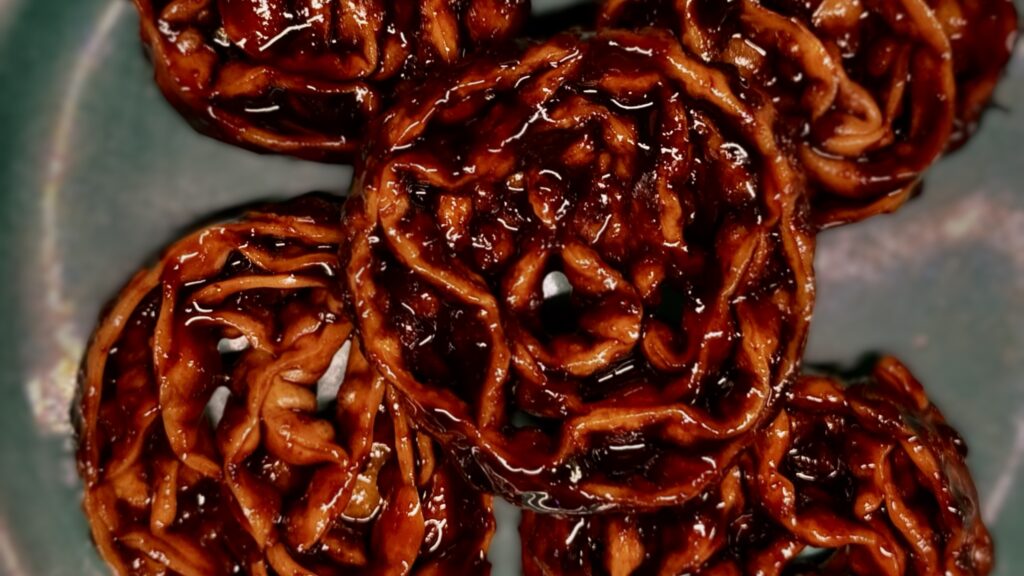
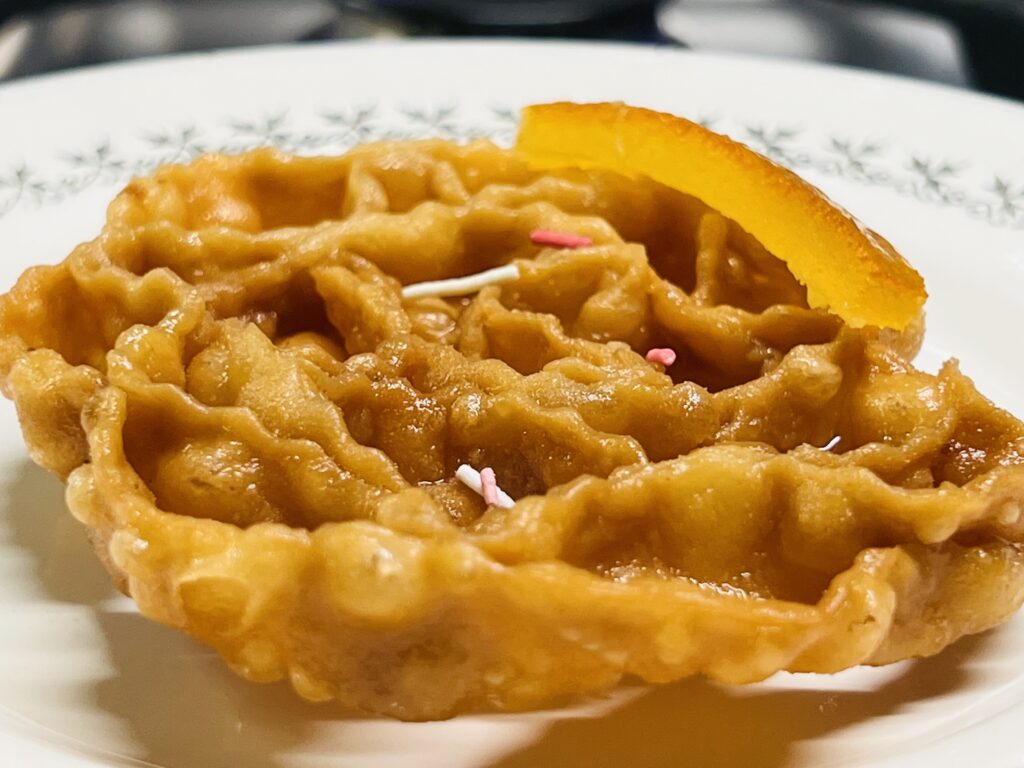
Sporcamus | Bari’s messy indulgence
Where to eat it: A Bari speciality, sold in many pastry shops though still less famous than pasticciotti.
What it is: Puff pastry topped with cream and dusted generously with icing sugar. The name means “dirty me” — which is exactly what happens when you eat one.
Why try it: Light, sweet, and playful, sporcamus embody Bari’s love of unfussy indulgence. They were invented by Pierino Lonigro, the current owner of Il Sorso Preferito and one of the pioneers of spaghetti all’assassina. He still cooks at the restaurant today, where you can taste both of his Bari icons under the same roof.
Puglia Guys tip: Don’t attempt neatness — embrace the sugar shower.

Zeppole di San Giuseppe | Father’s Day pastries
Where to eat it: Found in pastry shops across Puglia in the days before 19 March — St Joseph’s Day, which is also Father’s Day in Italy.
What it is: Choux-like pastries, fried or baked, filled with custard and topped with an amarena cherry.
Why try it: Zeppole are at their biggest and best for St Joseph’s Day, when pastry shops compete to create the most spectacular. Smaller versions, however, are often available year-round in pasticcerie, keeping the tradition alive beyond March.
Puglia Guys tip: If you’re in Puglia in mid-March, join the crowds at local pasticcerie in the run-up to Father’s Day — the atmosphere is festive, and the zeppole are at their most indulgent.
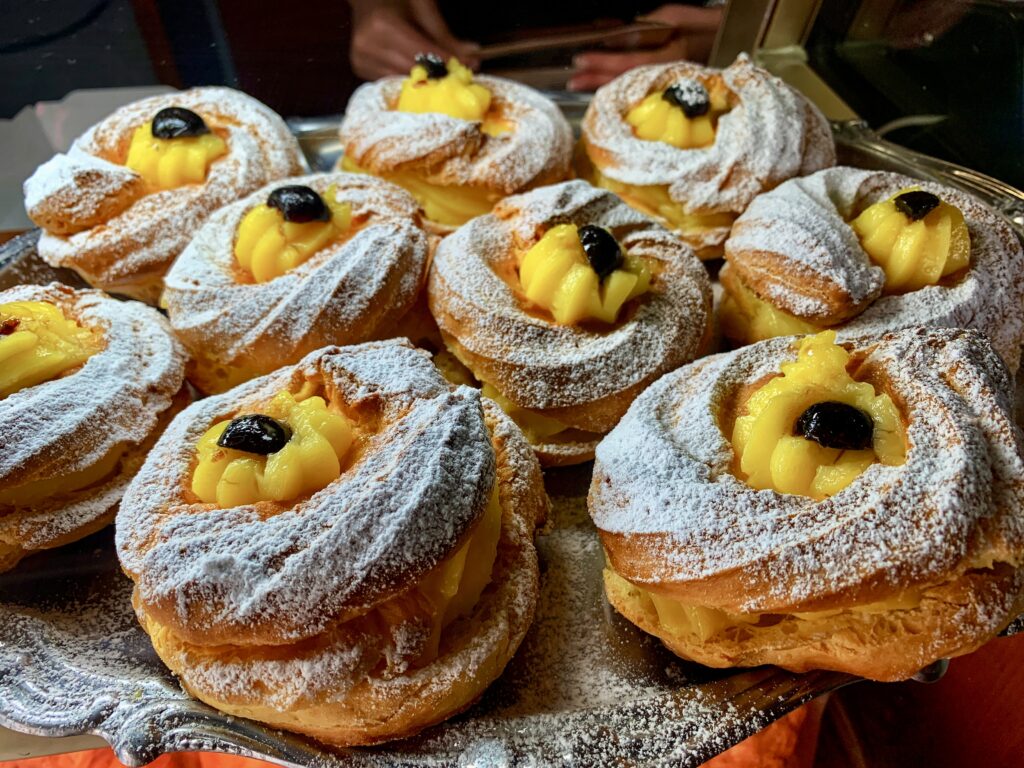
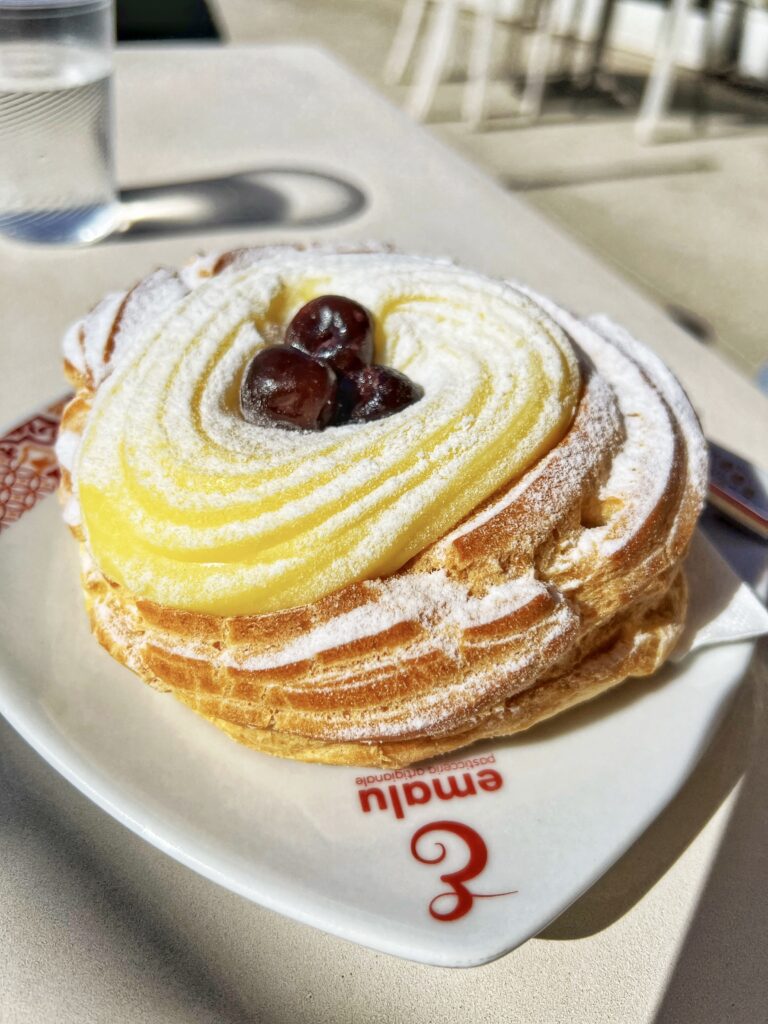
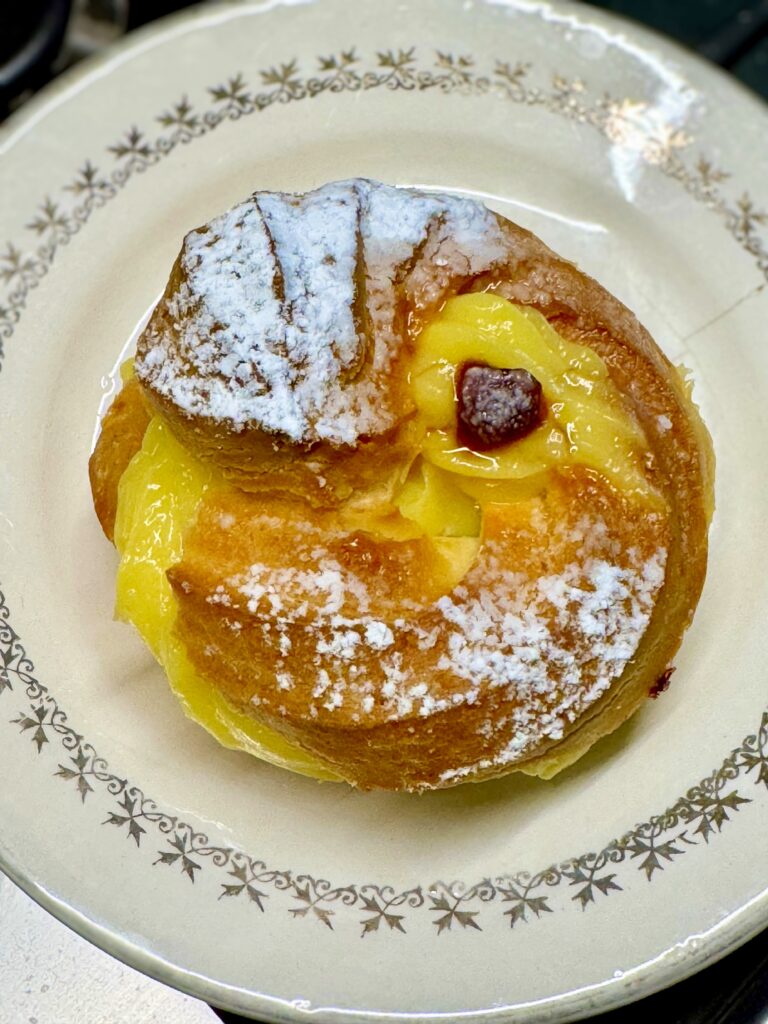
Eating Puglia: The Bigger Picture
These dishes are only a beginning. In Puglia, food isn’t just what’s on the plate — it’s seasonality, tradition, and a way of life still lived around the table.
What makes eating here unforgettable is the context: focaccia from a Bari bakery, still warm and oily in your hands; bombette sizzling on a butcher’s grill in Cisternino; raw mussels slurped at a fish market while boats unload behind you. Food here is inseparable from the landscape, the festivals, and the rhythms of daily life.
So eat widely, eat seasonally, and eat locally. Don’t shy away from dishes you won’t find elsewhere in Italy — spaghetti all’assassina, ciceri e tria — they are the flavours that root you here. And remember, the simplest meals are often the most memorable: a plate of orecchiette with tomato sauce in a backstreet trattoria, or friselle alla crudaiola eaten on the piazza.
To understand Puglia is to eat it — one dish at a time.
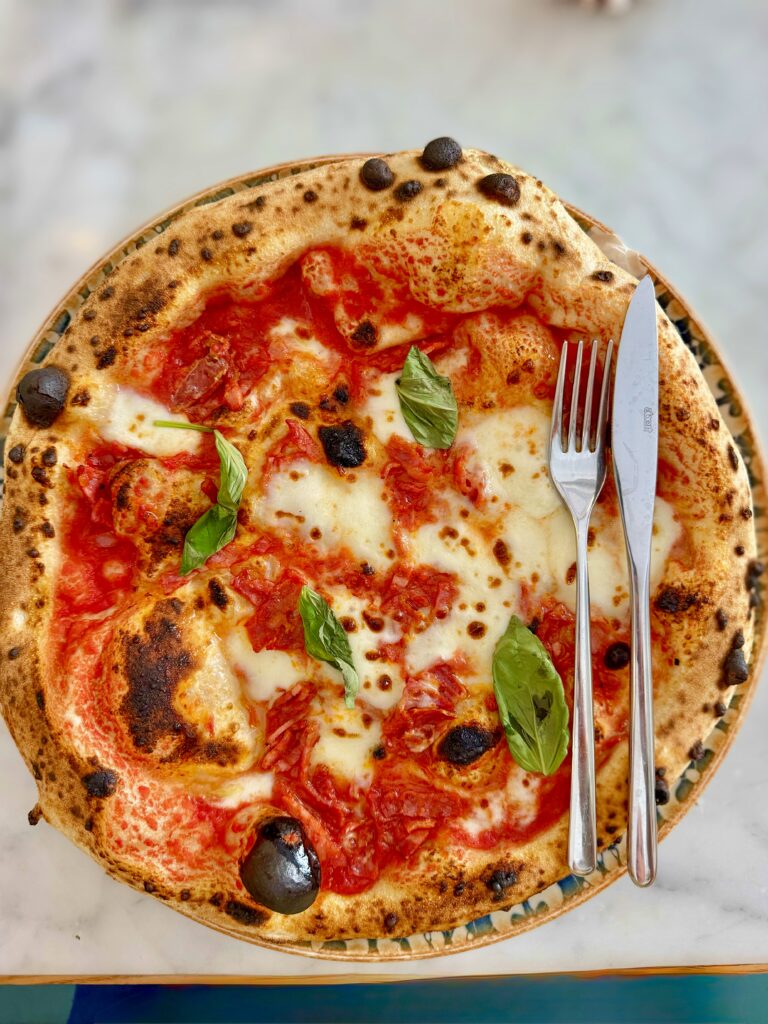


Eat Puglia Itinerary
If you’d like to taste Puglia through its most iconic dishes, here’s a suggested route — a journey built around food as much as sights.
Day 1–2: Bari
Start in Bari Vecchia. Have focaccia barese or panzerotto in the old town, watch the pastaie making orecchiette on the streets, and sit down to a plate of spaghetti all’assassina. For dessert, try a sporcamus at Il Sorso Preferito — the restaurant that helped pioneer both Bari classics.
Day 3–4: Valle d’Itria (Locorotondo, Cisternino, Martina Franca, Ceglie Messapica)
This is bombette country: head to the bracerie in Cisternino where you choose your meat at the counter and eat it fresh from the grill — a true local ritual. In Martina Franca, taste capocollo in a traditional trattoria. In Ceglie Messapica, one of the culinary capitals of the Valle d’Itria, you’ll find some of the best trattorie in the region, known for seasonal, deeply traditional cooking.
Day 5: Taranto (via Grottaglie)
From Martina Franca, head to Grottaglie to wander the ceramics quarter, then on to Taranto, home of the cozze tarantine. Taste tiella di riso, patate e cozze or cozze ripiene made with mussels from the Mar Piccolo, and eat crudo di mare straight from fishermen at the market. Taranto’s seafood is unmatched, but its hearty cucina povera dishes are equally worth seeking out in small trattorie.
Day 6–7: Lecce & the Salento (Gallipoli, Otranto, countryside)
In Lecce, start your day with a warm pasticciotto and caffè leccese. For traditional Salentino food, head to Alle Due Cortior Le Zie, both family-run and full of character. In Gallipoli, seafood is king, but try Trattoria La Puritate or Osteria Briganti for a balance of sea and land dishes. Around Otranto, L’Altro Baffo offers one of the more refined kitchens in town. Along the coast, grab a polpo panino by the sea or try polpo alla pignata in a countryside trattoria.
Puglia Guys tip
This is just one way to eat your way through the region. Swap in dishes depending on the season — zeppole in March for St Joseph’s Day, cartellate at Christmas, sea urchins in winter. The point isn’t to tick off every dish, but to let food guide your journey — one trattoria, bakery, or market stall at a time.

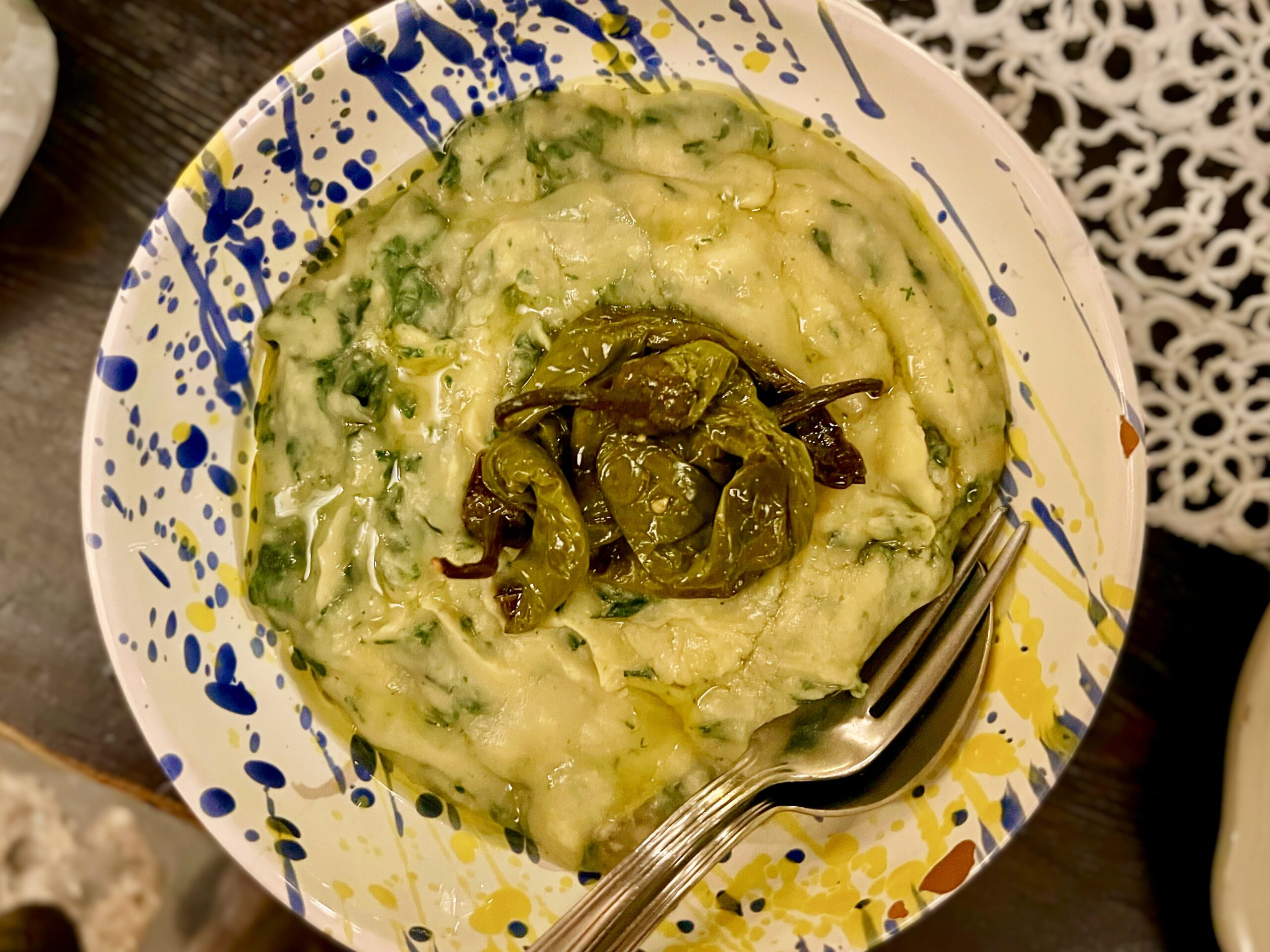
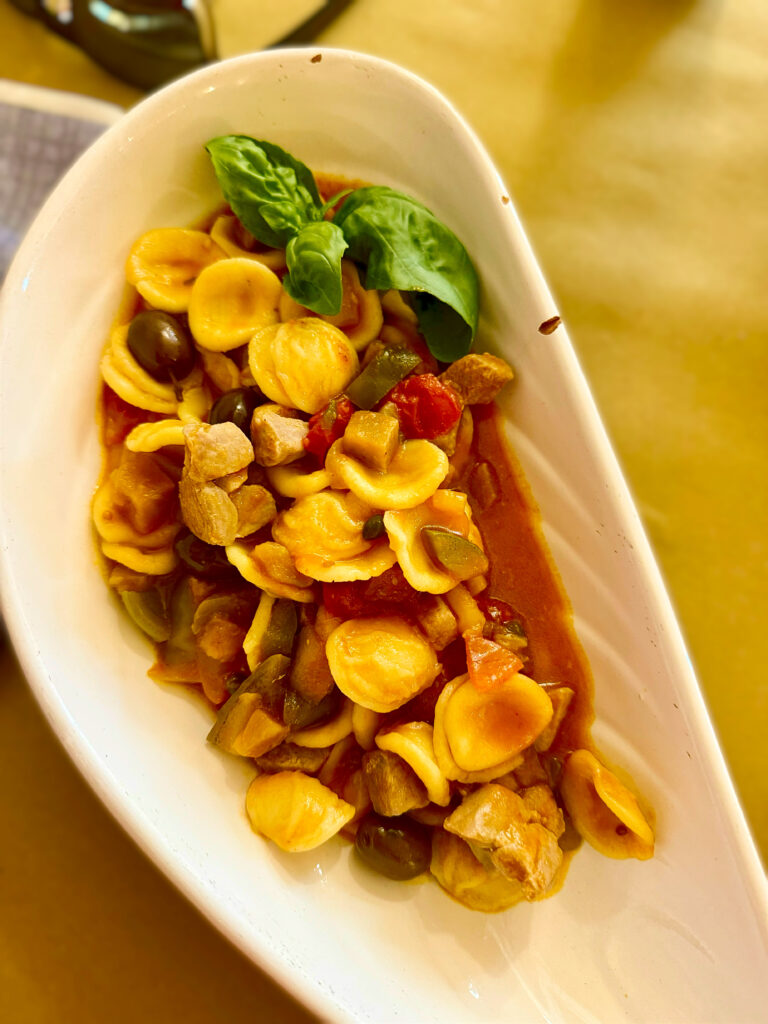

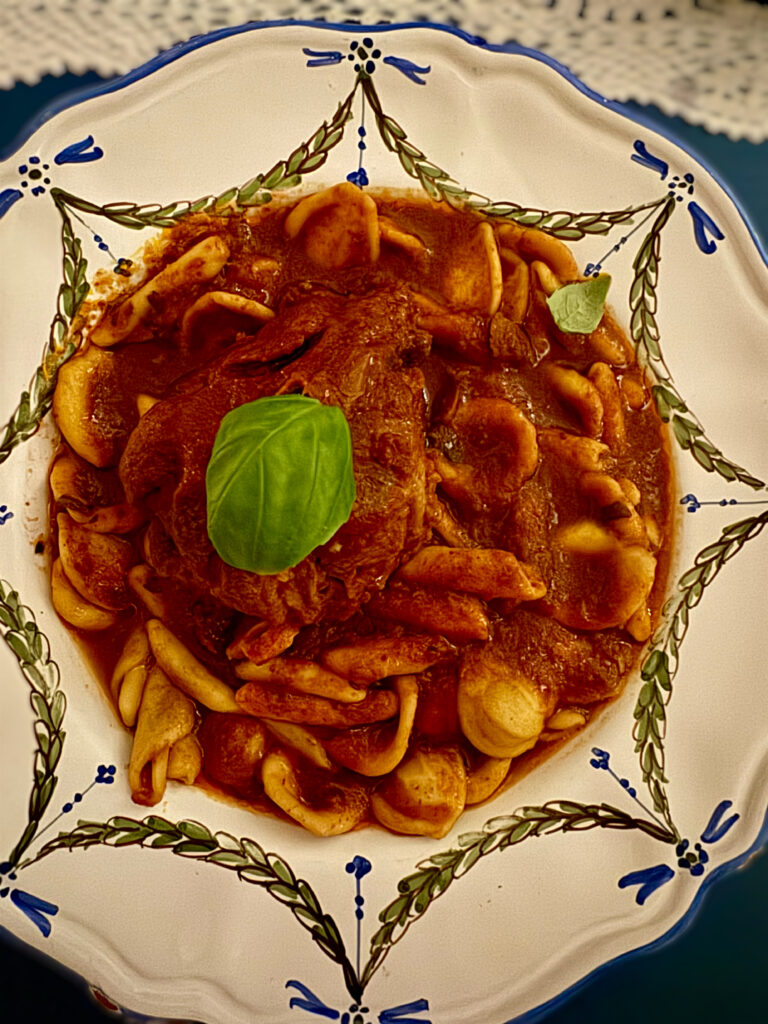

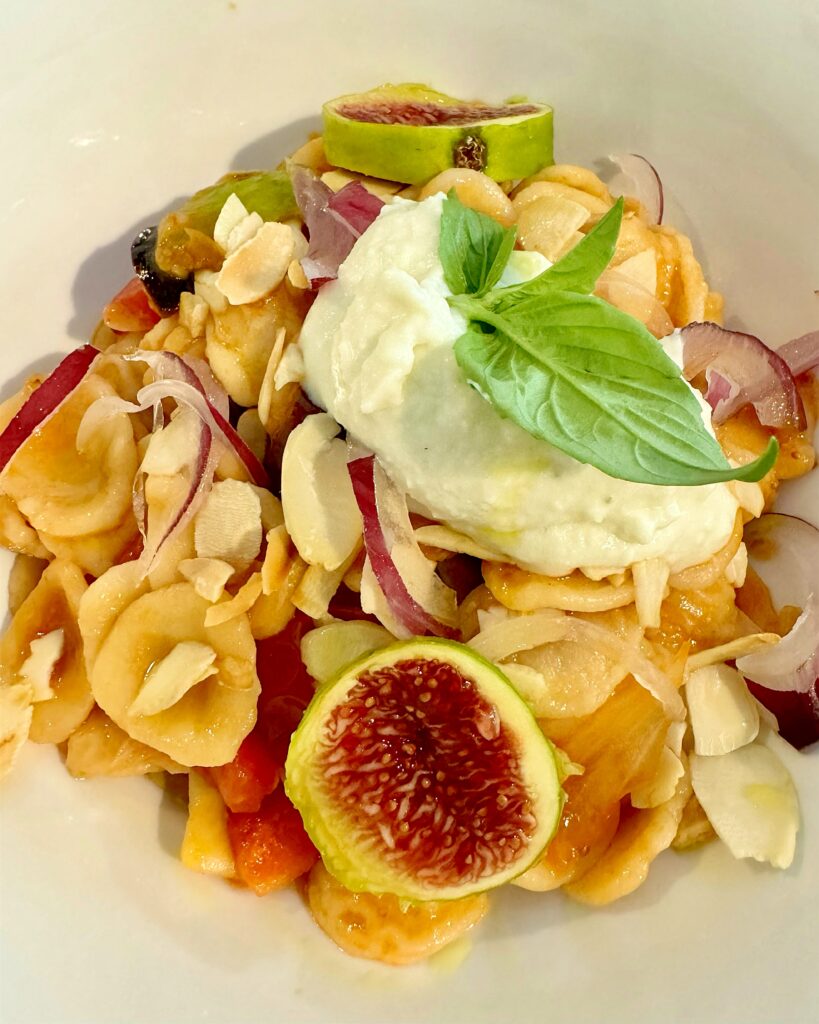

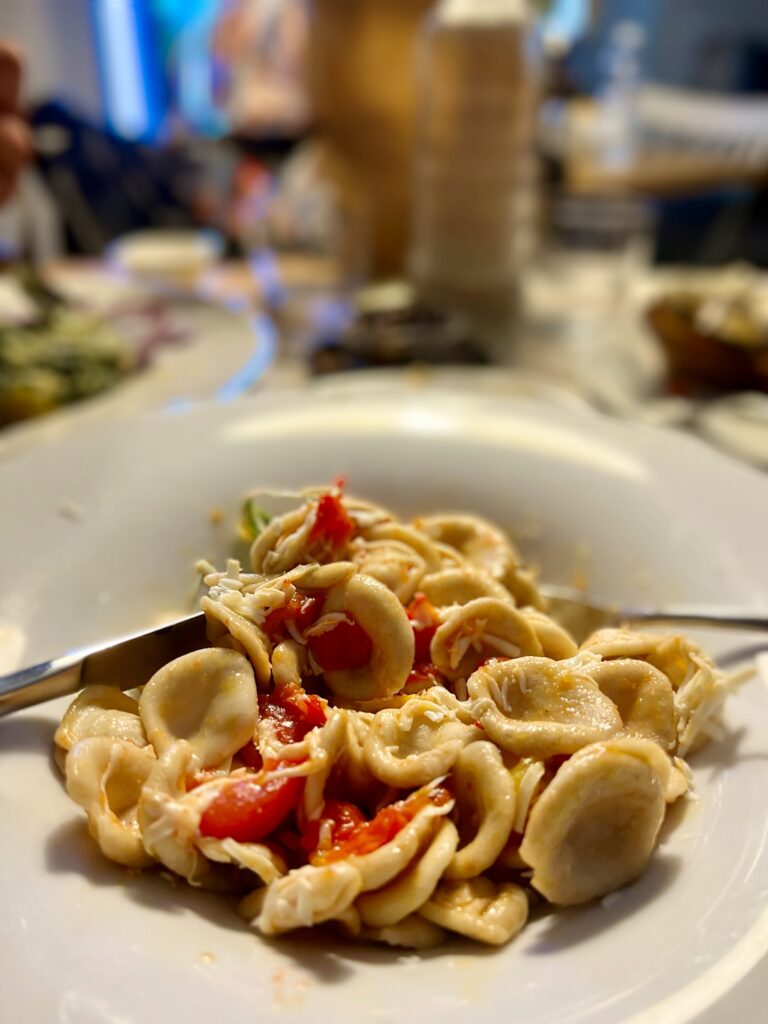
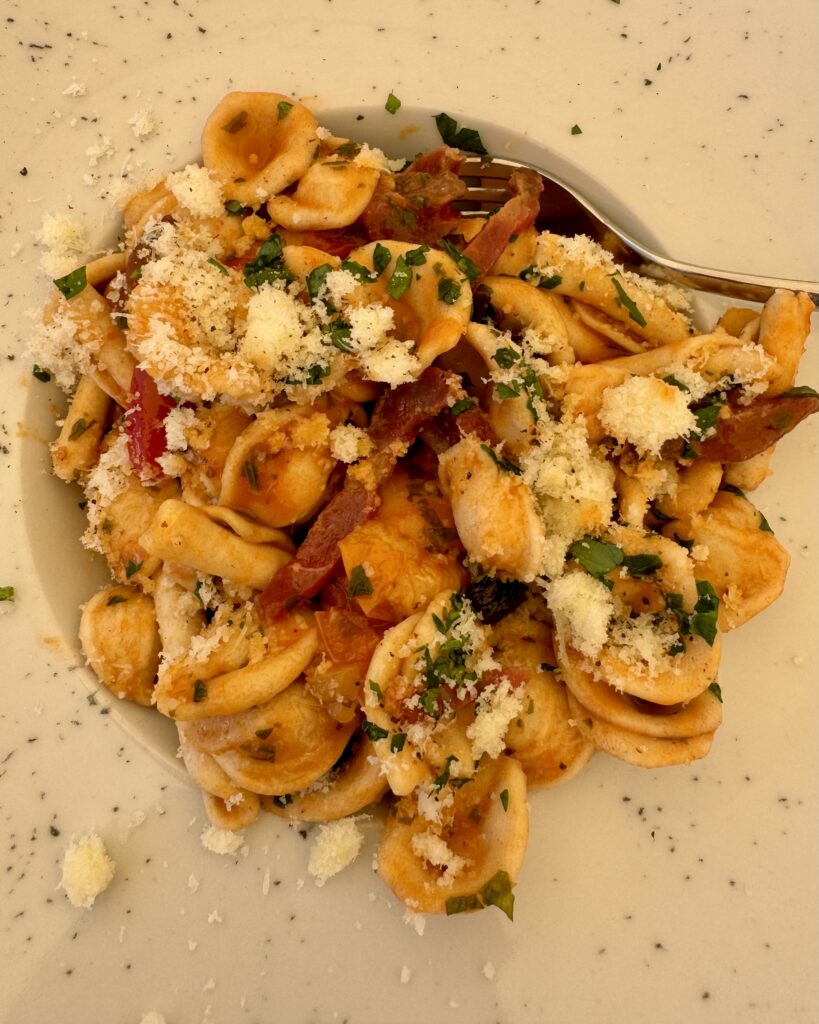

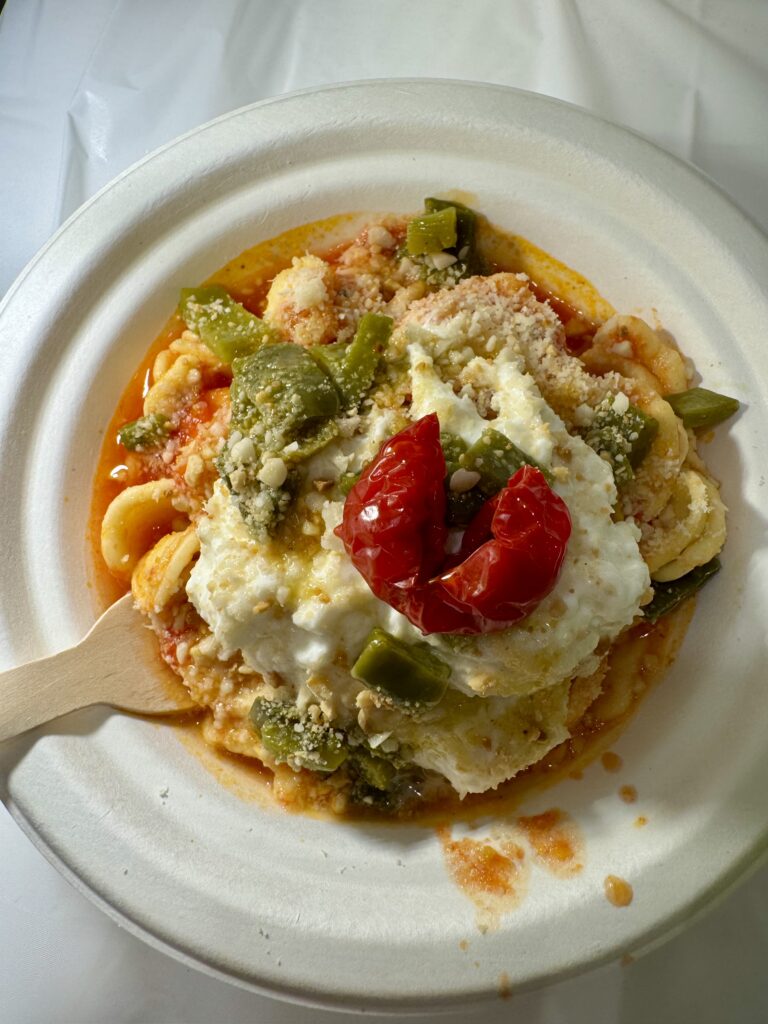
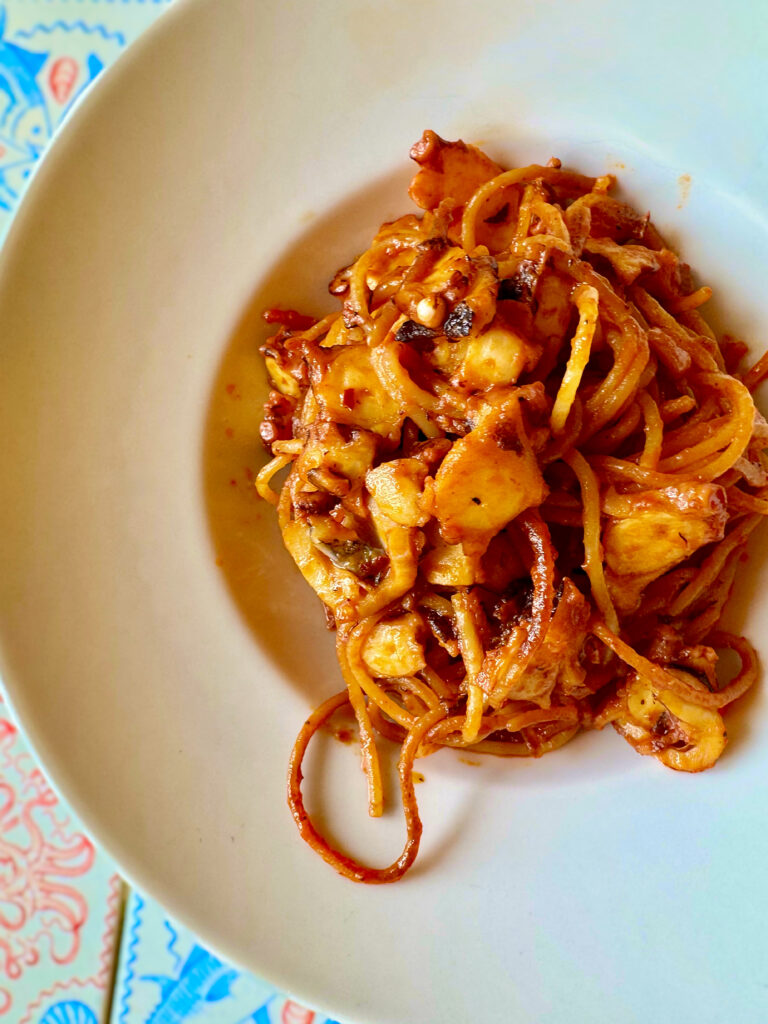
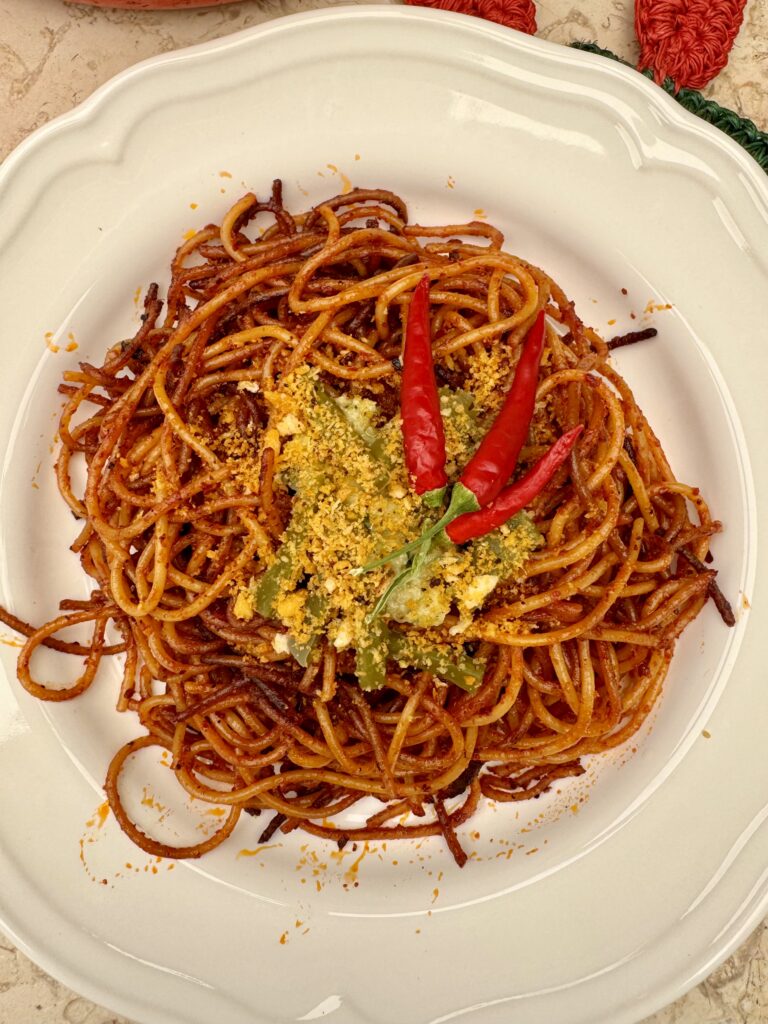
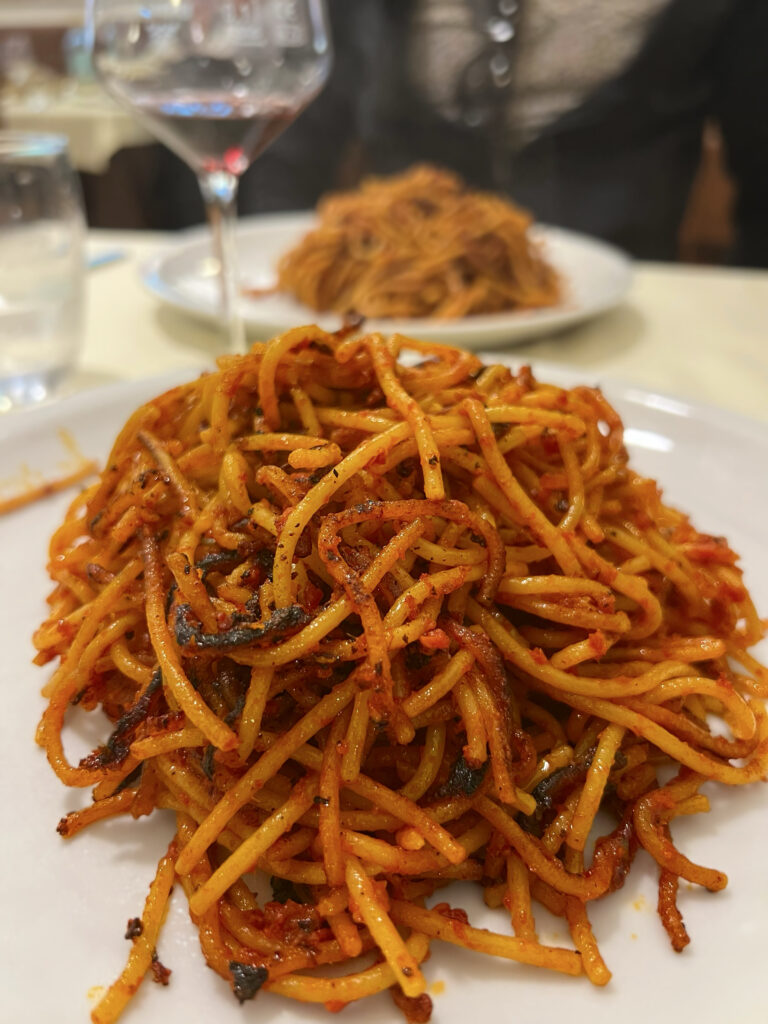
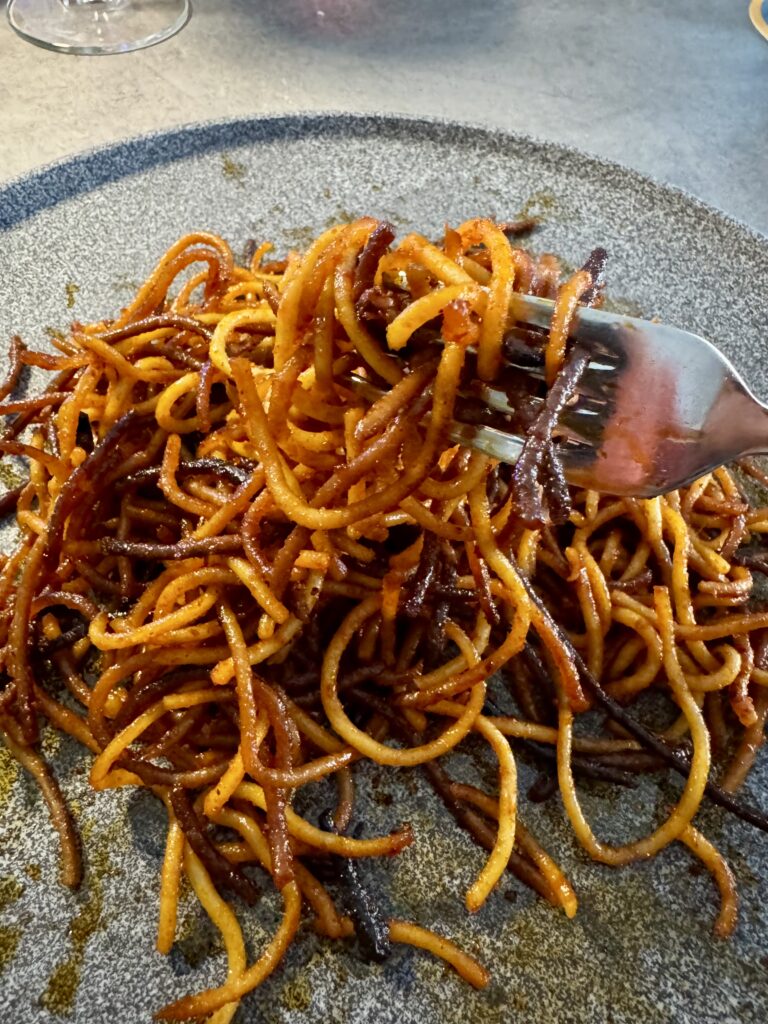
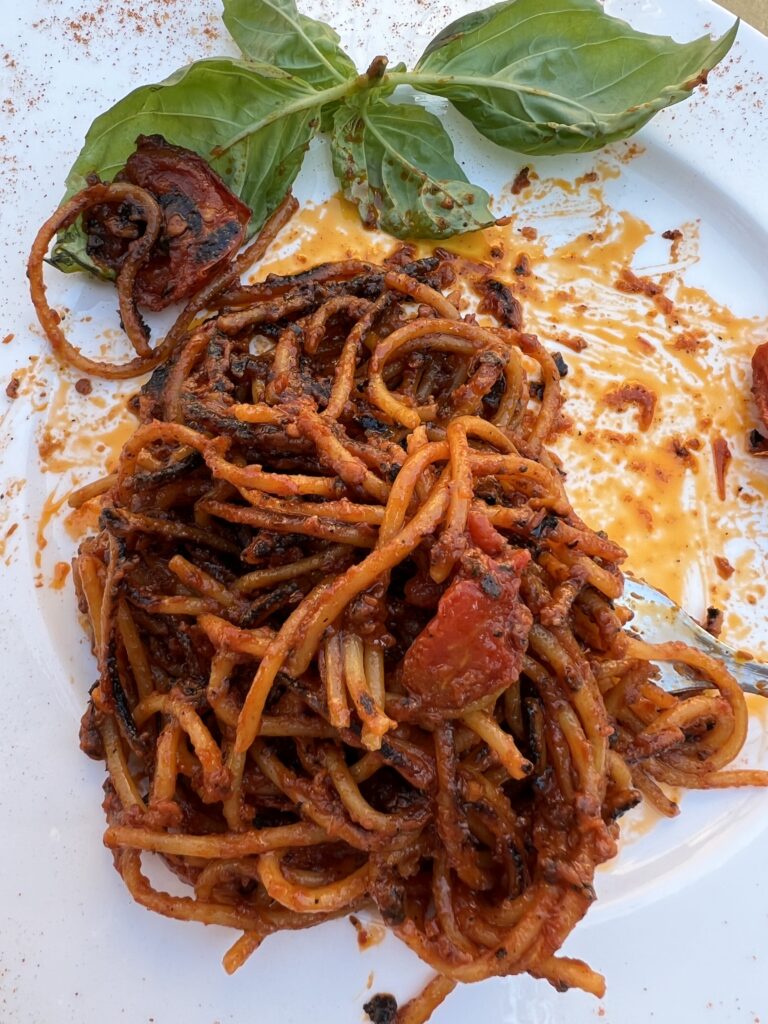
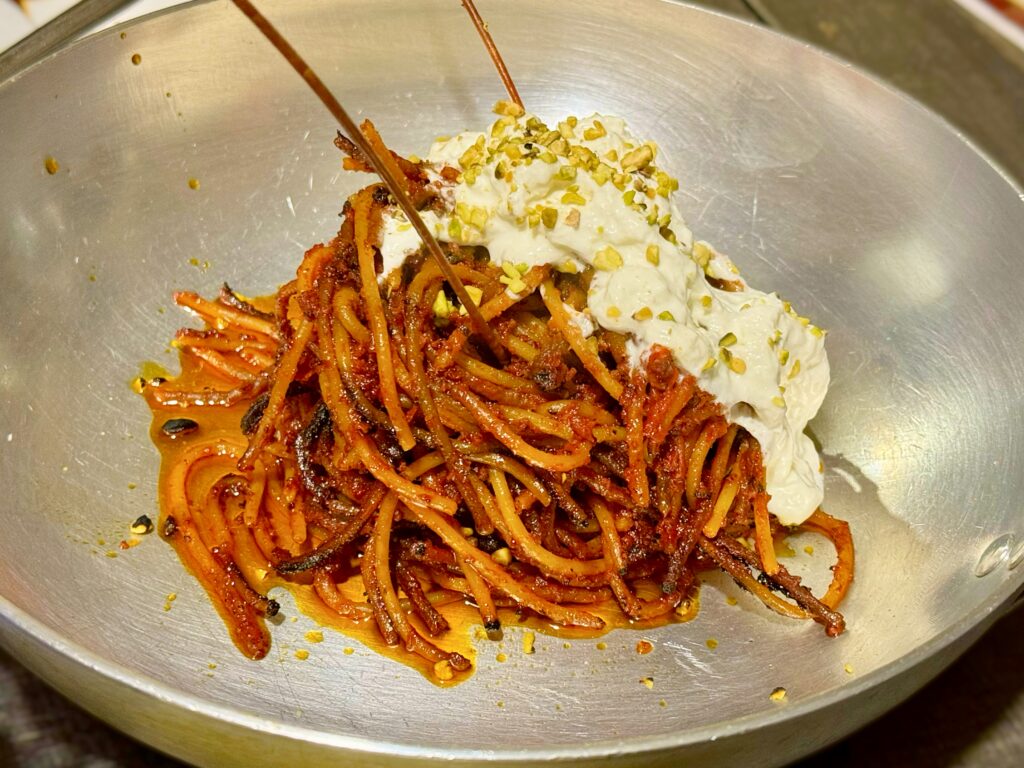
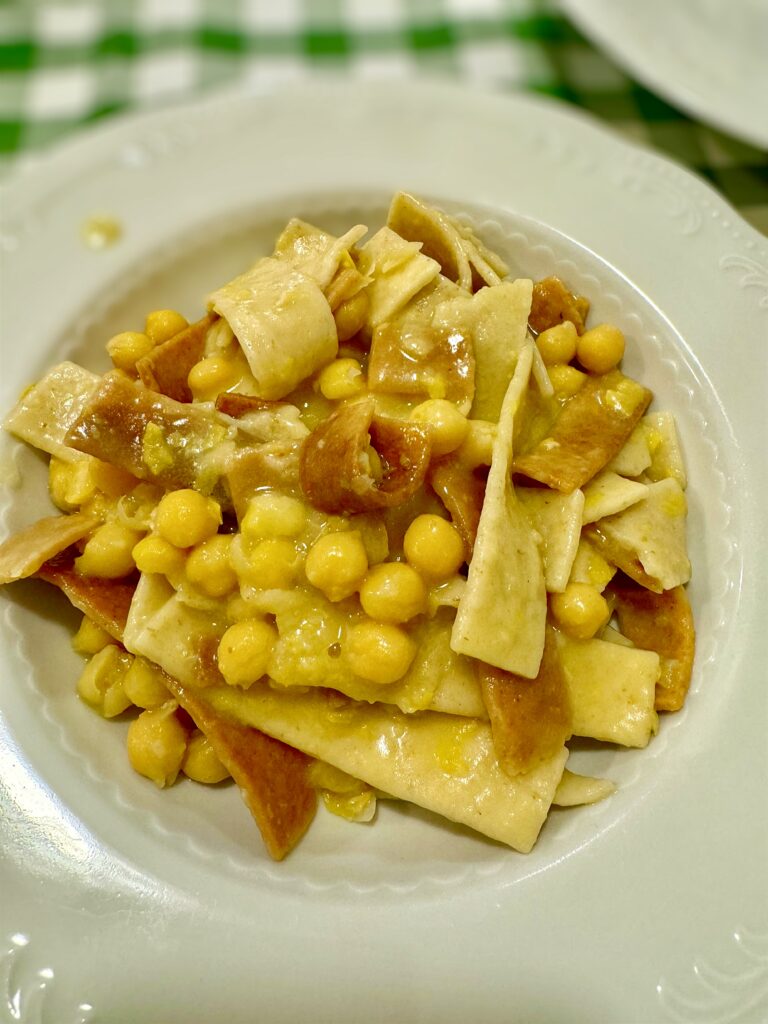


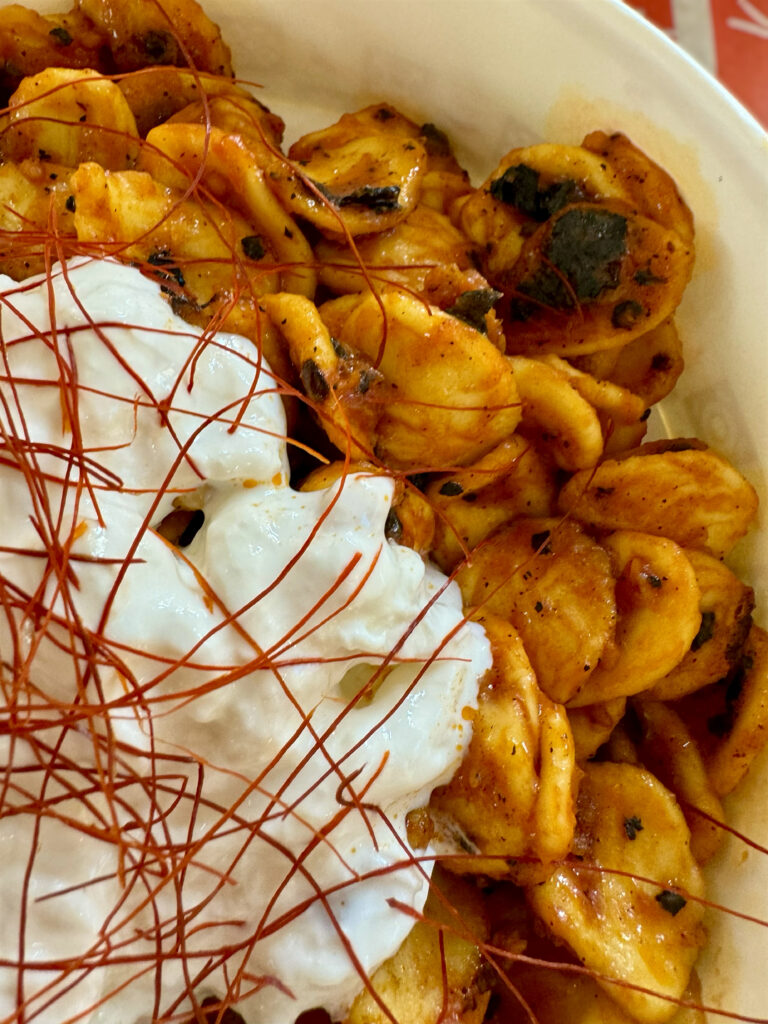
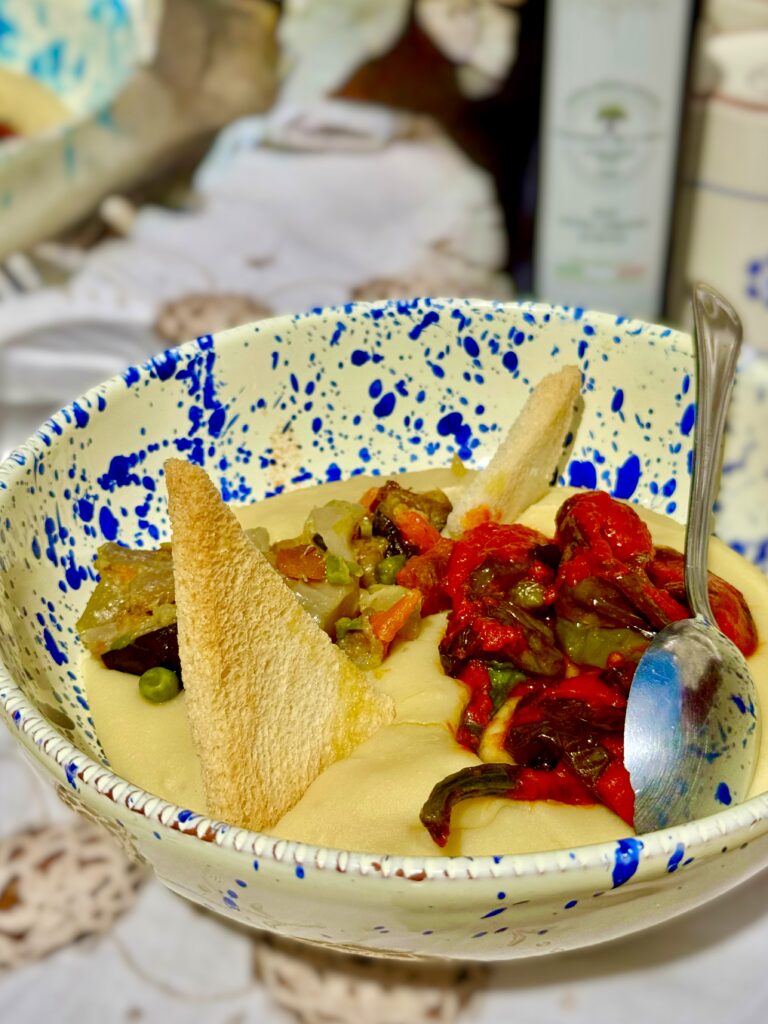
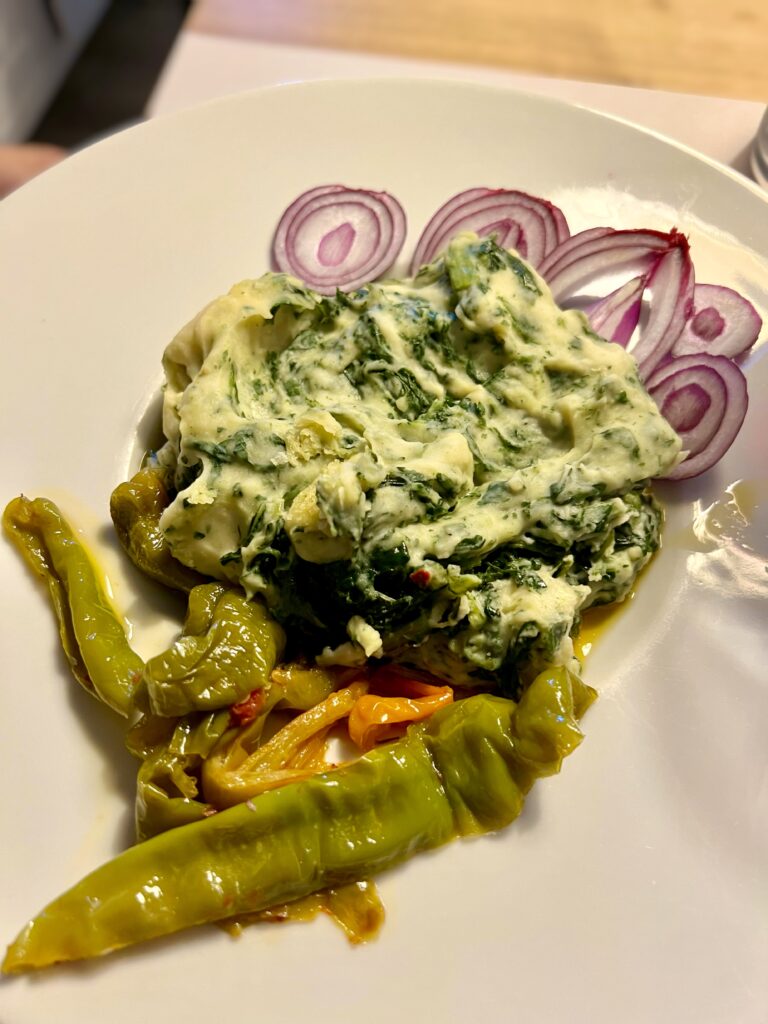
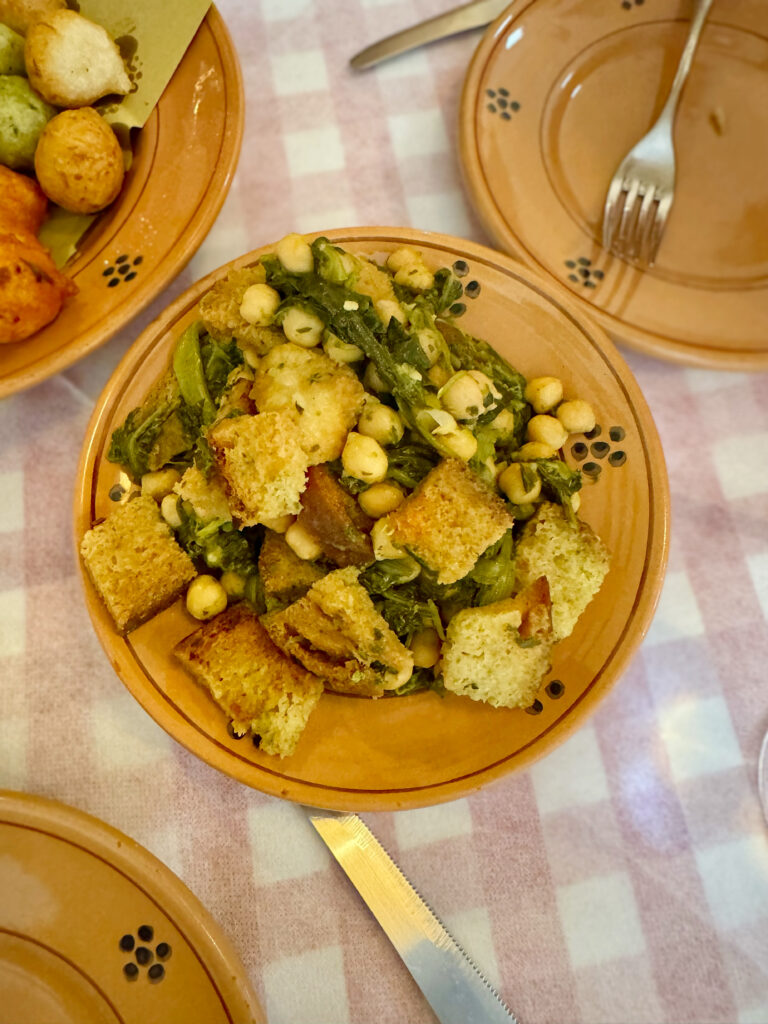



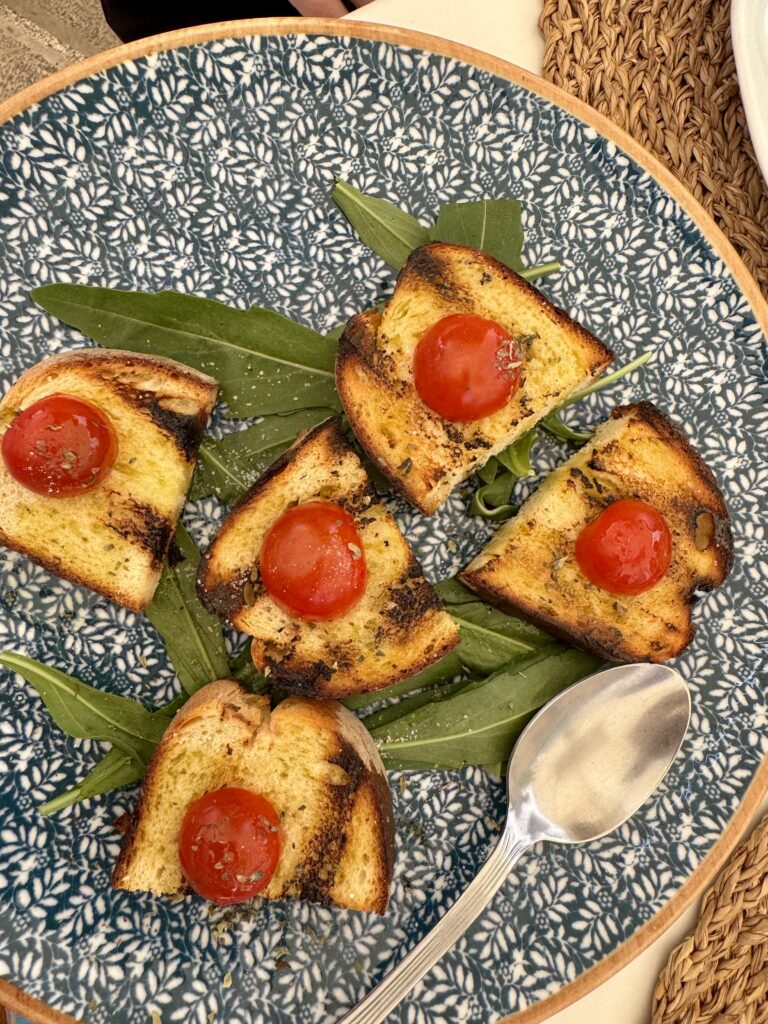
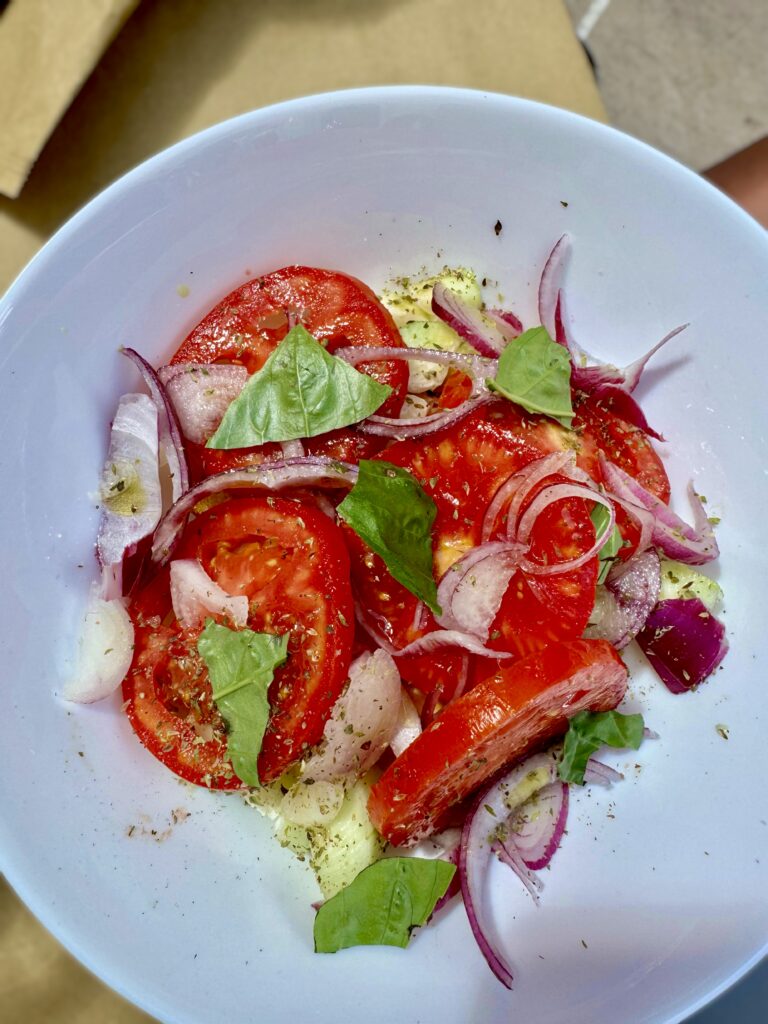
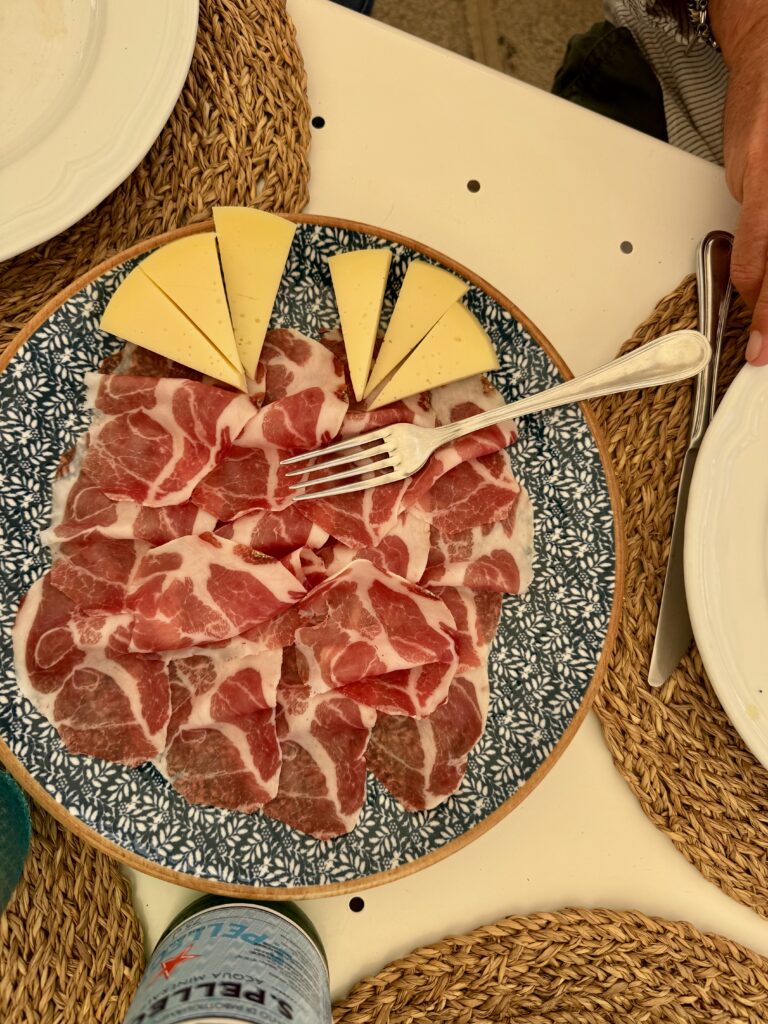
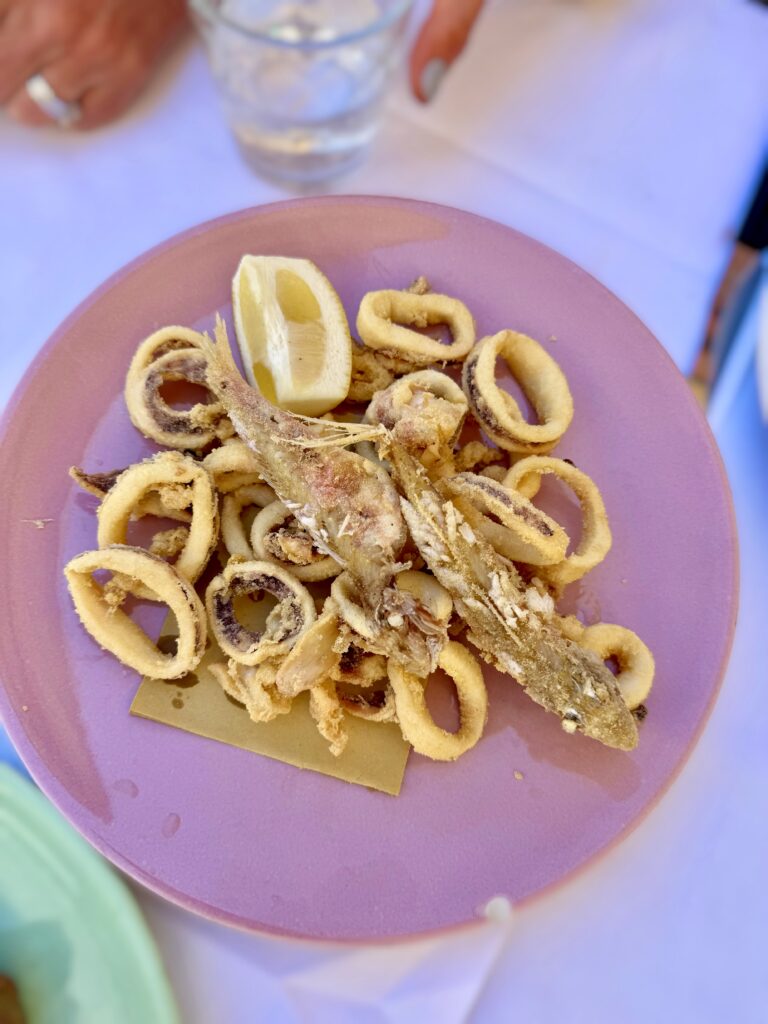
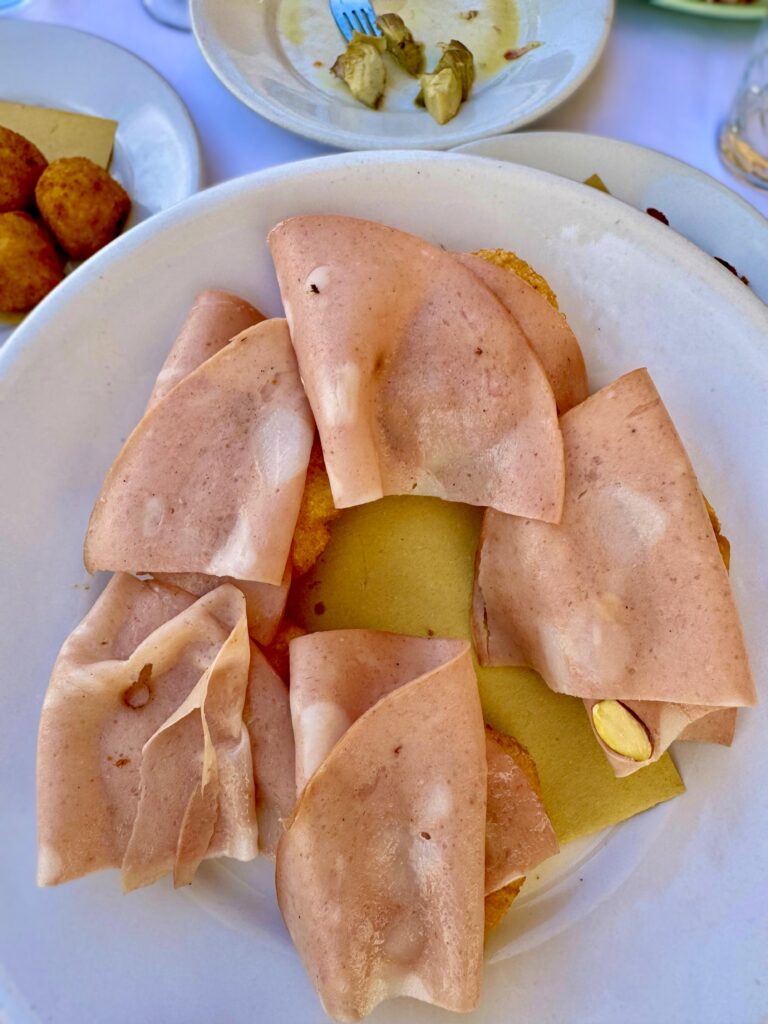
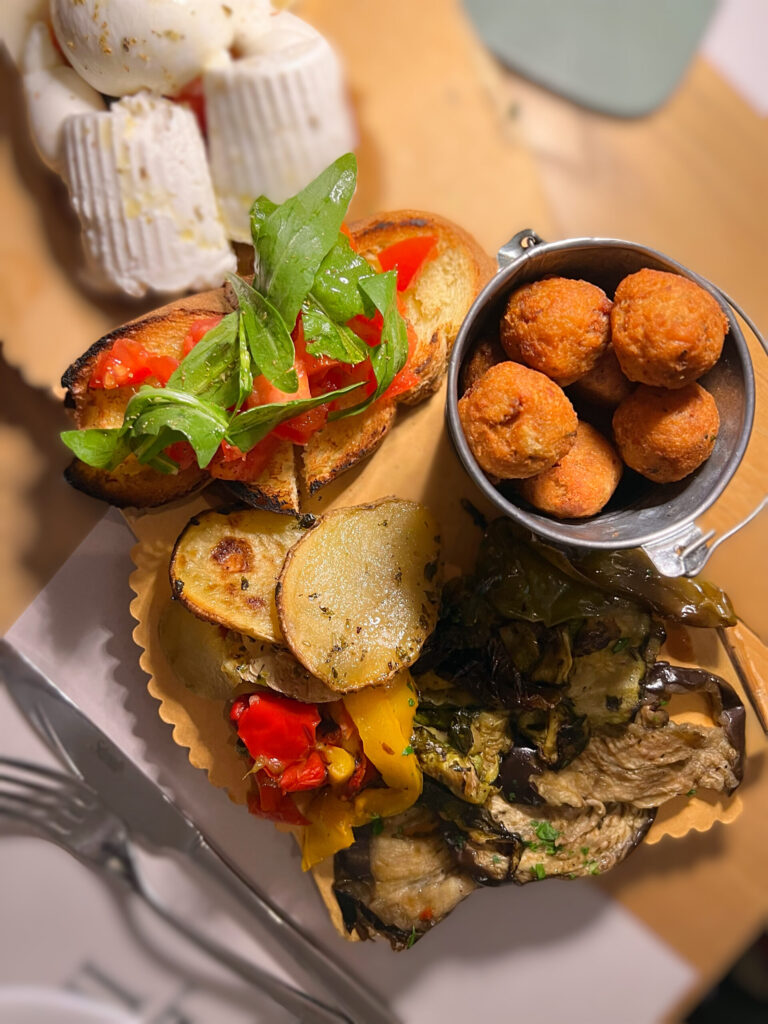
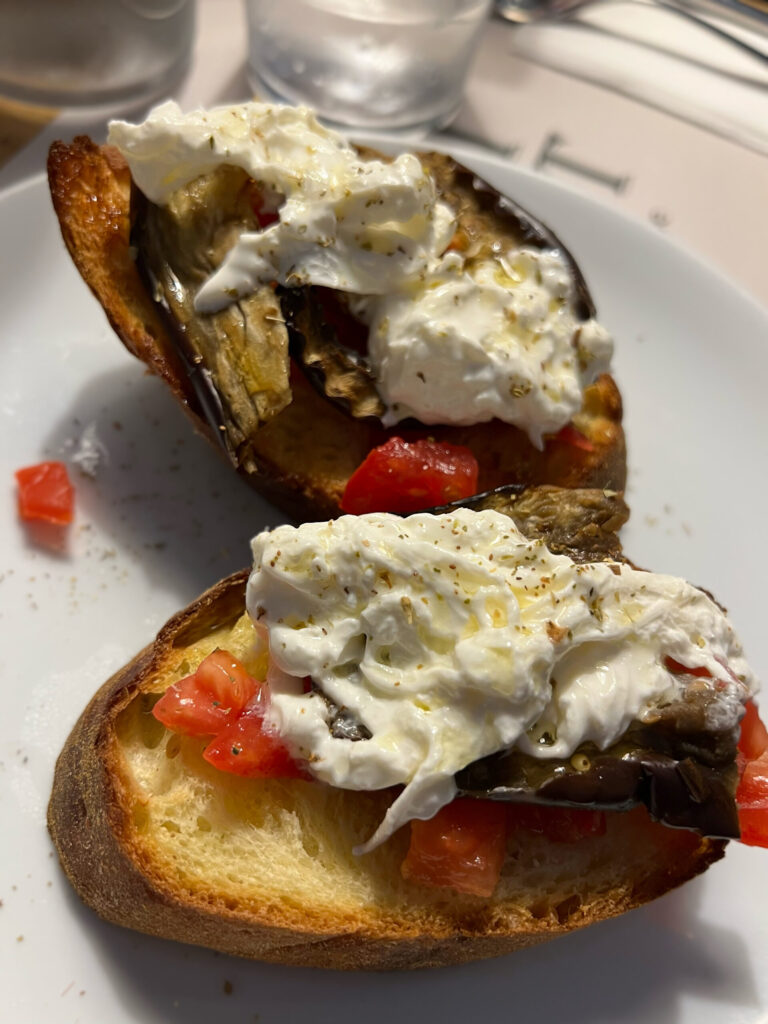
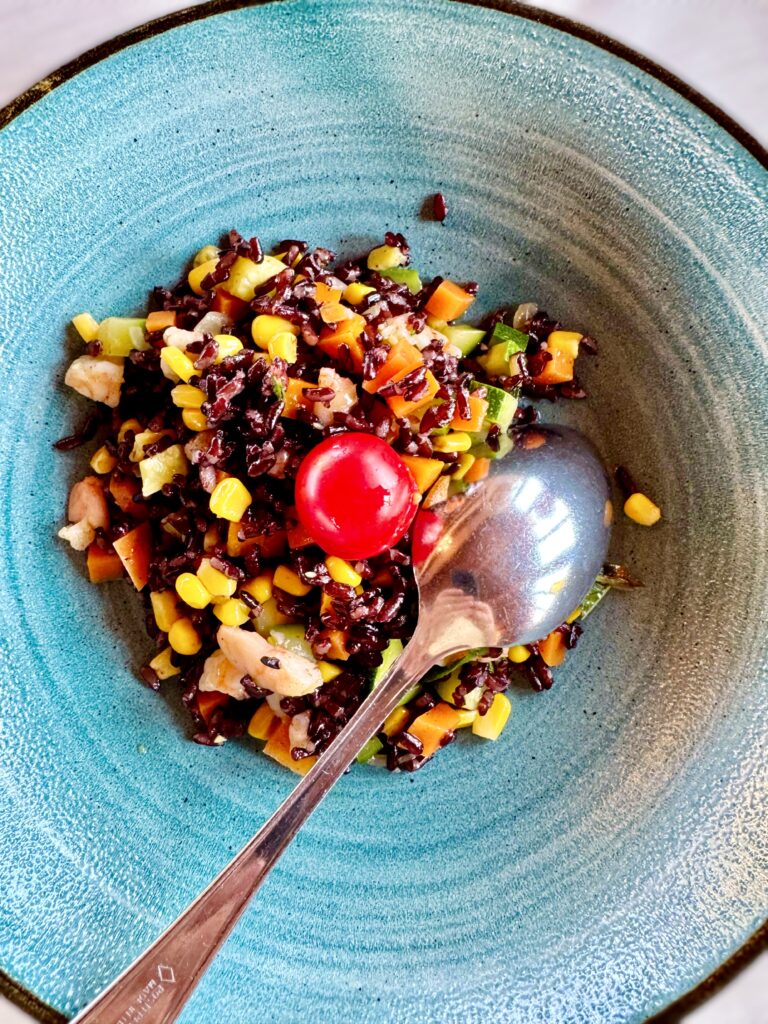
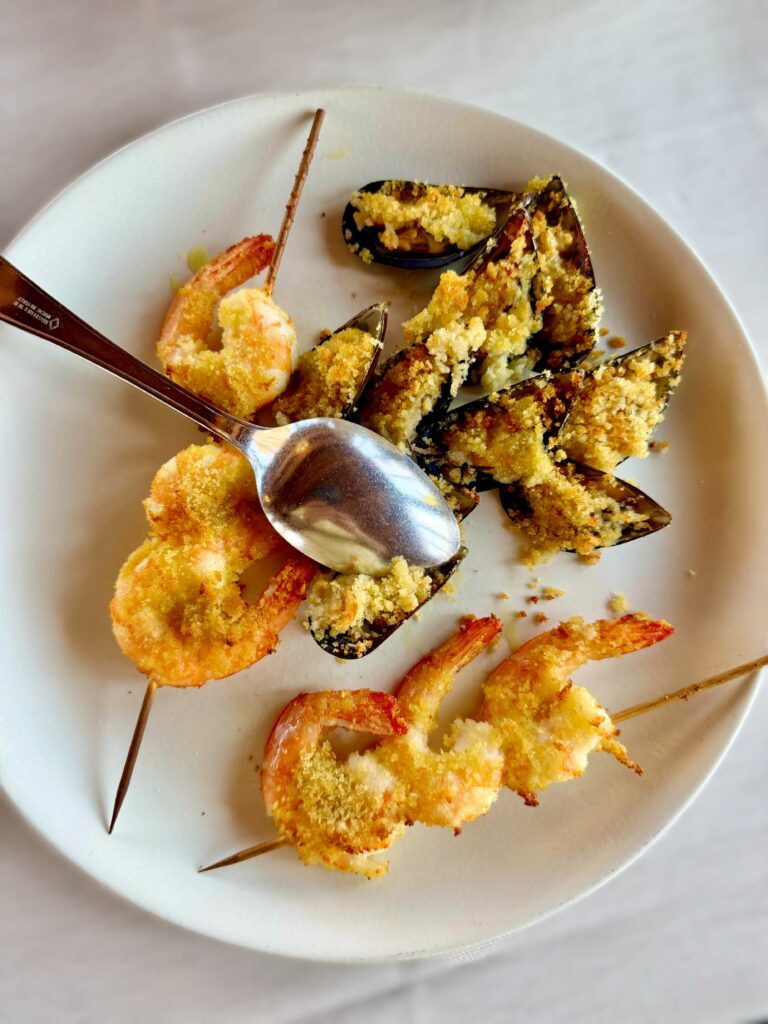
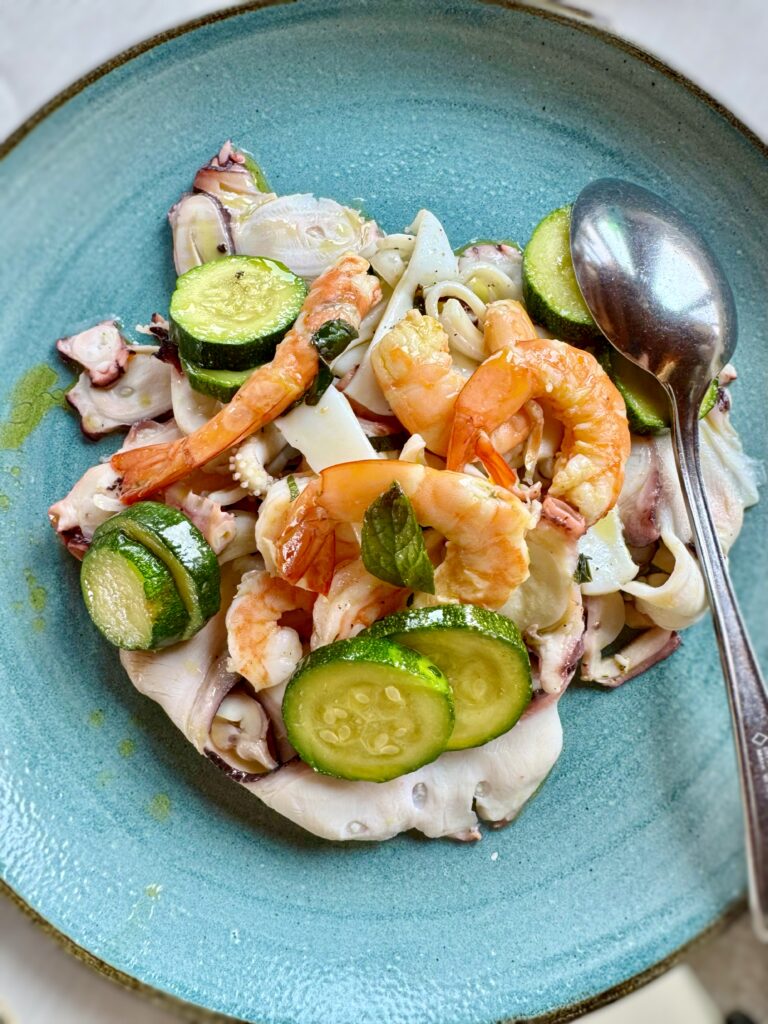


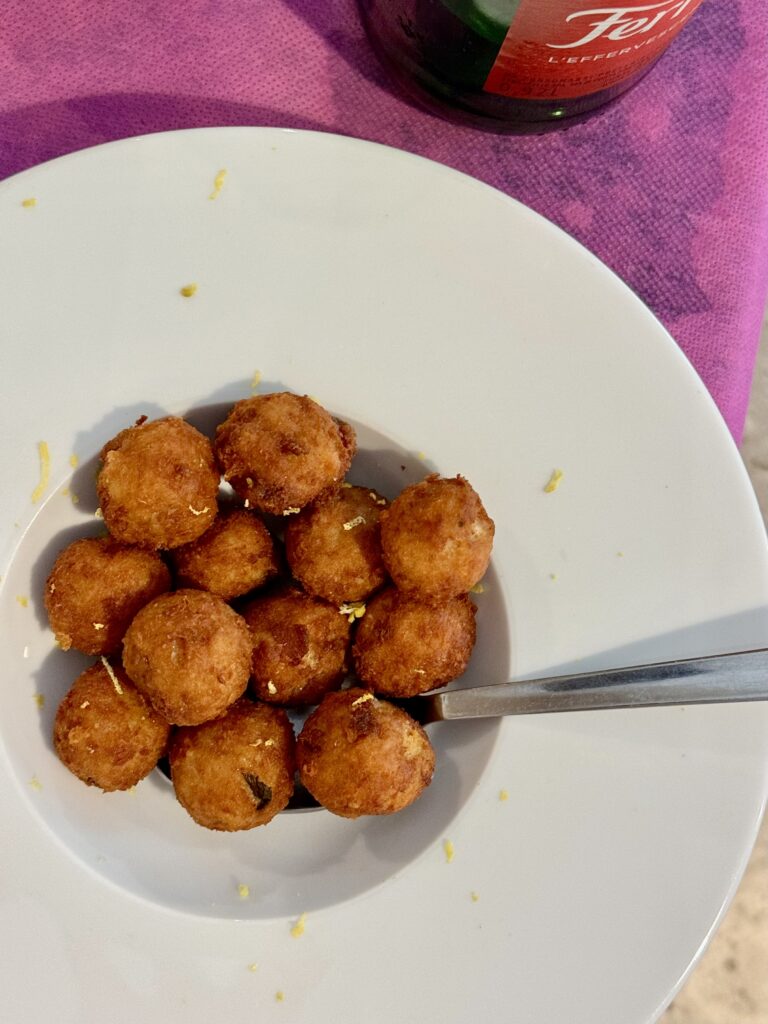
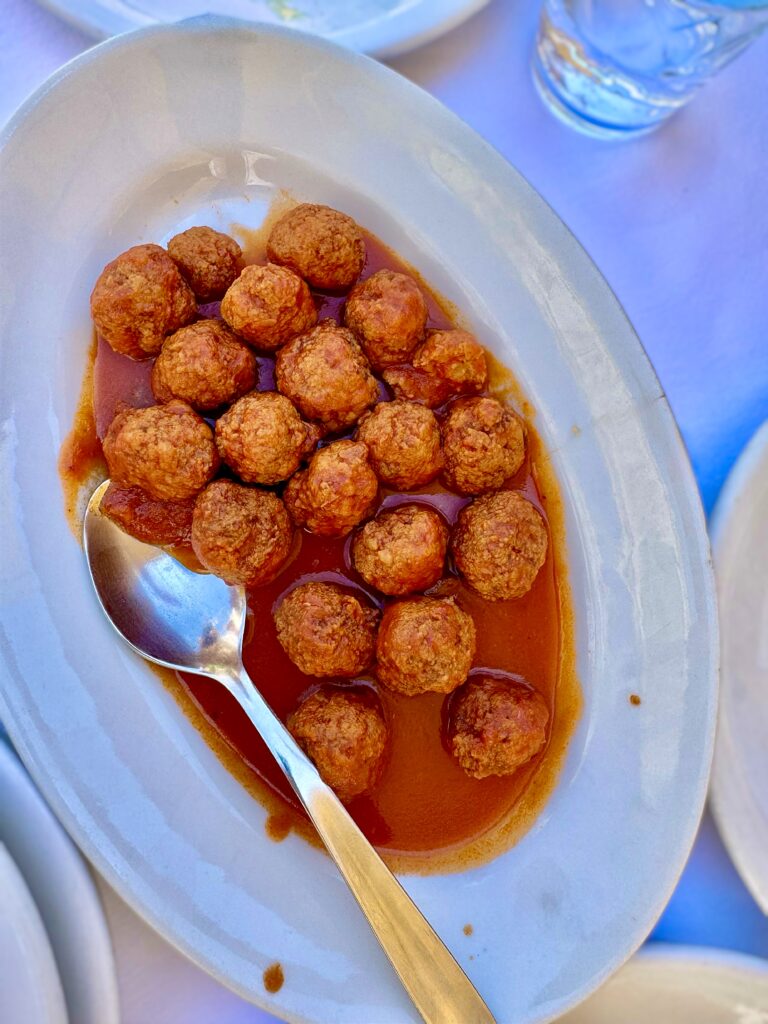
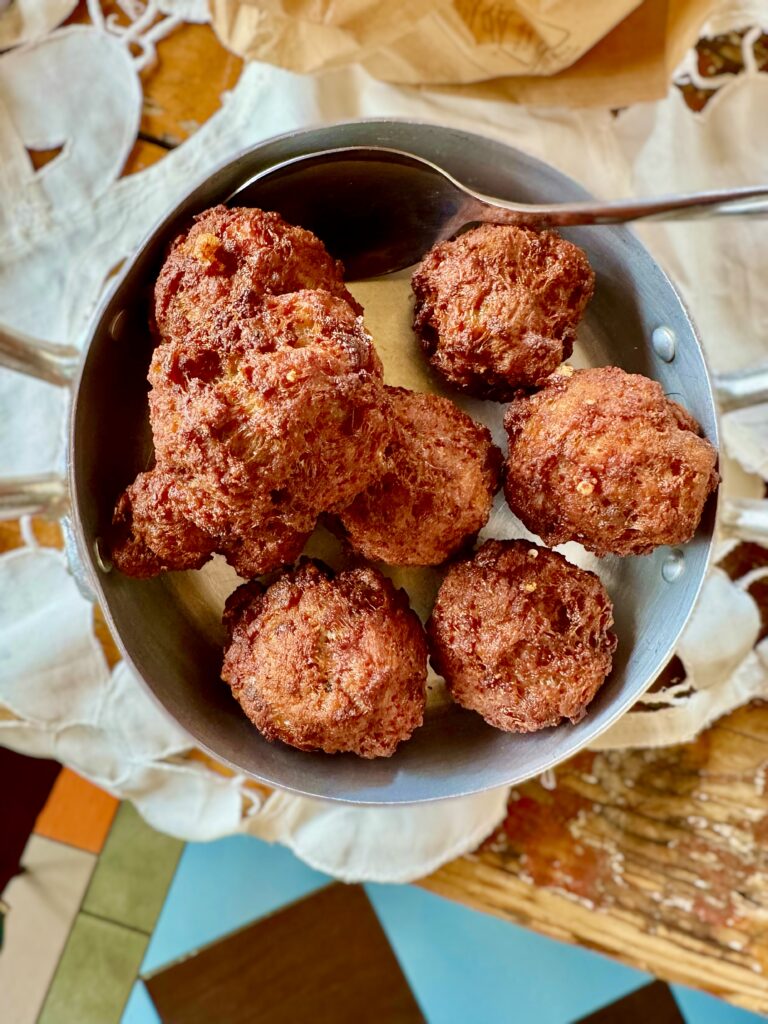
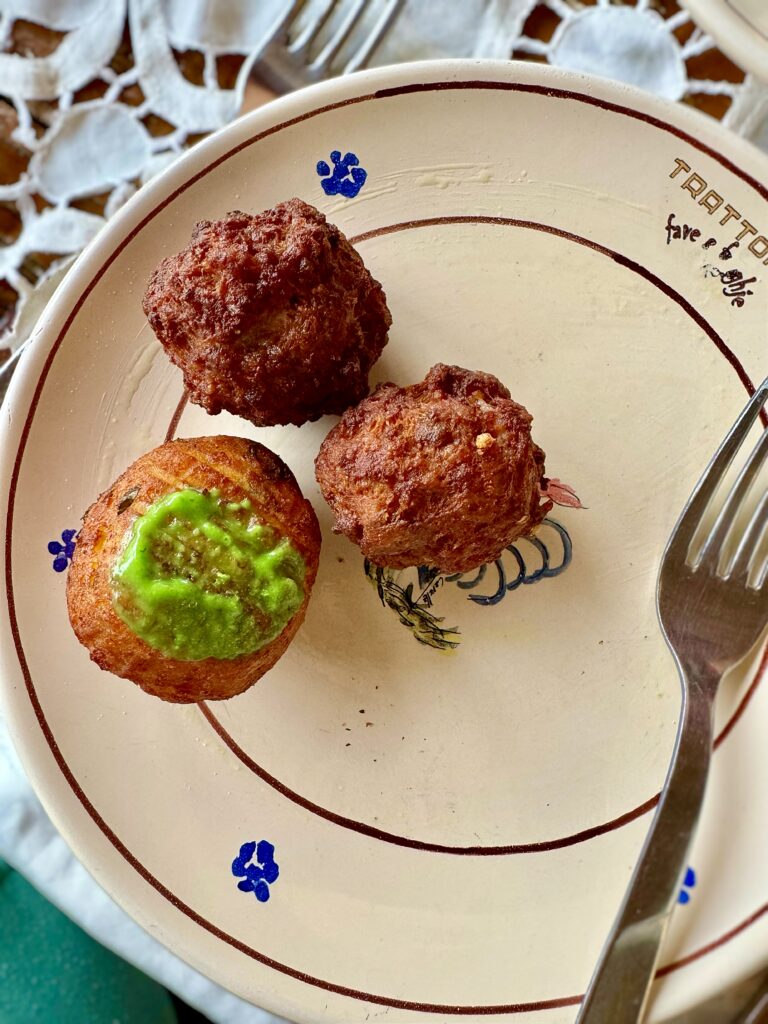
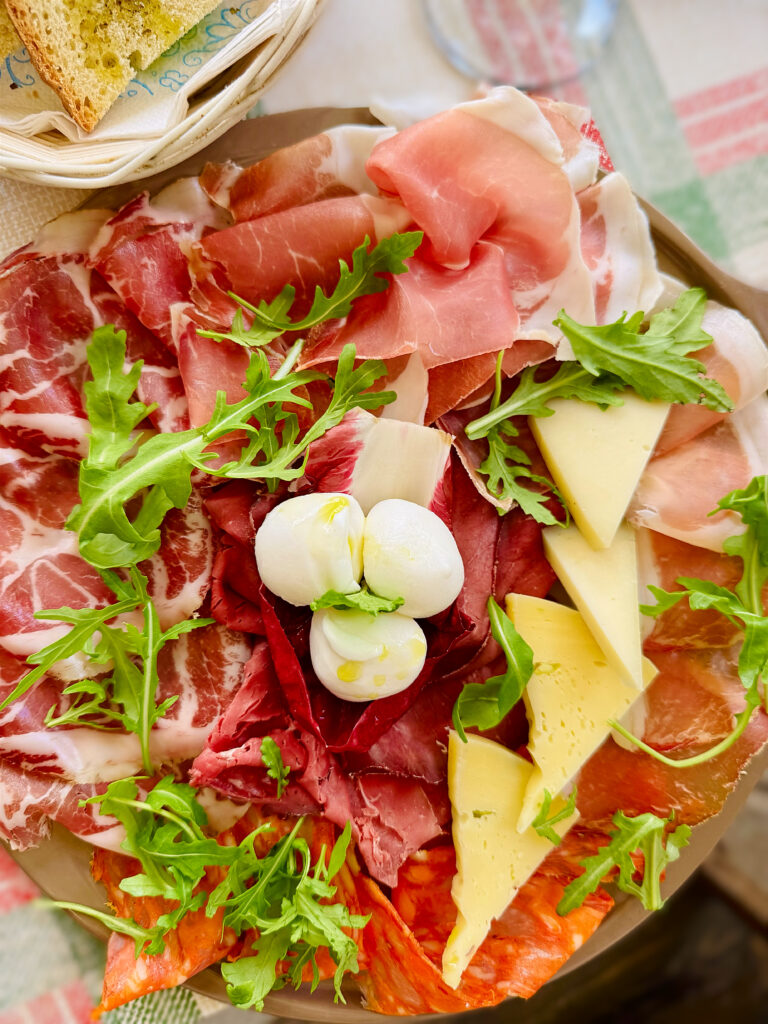
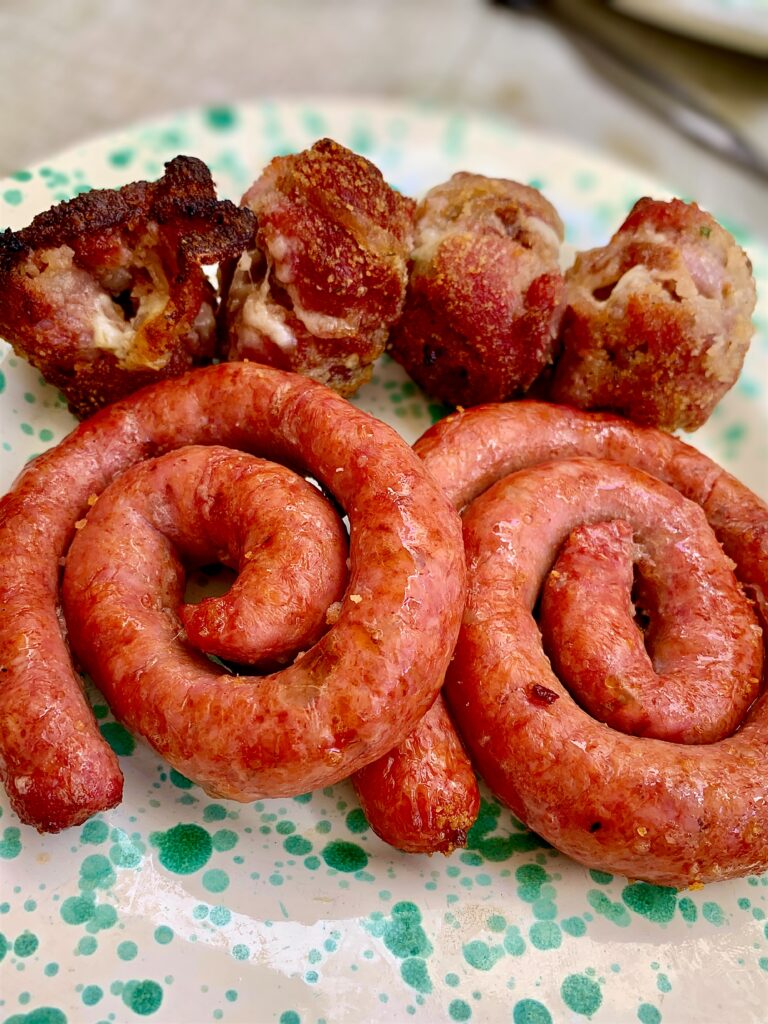
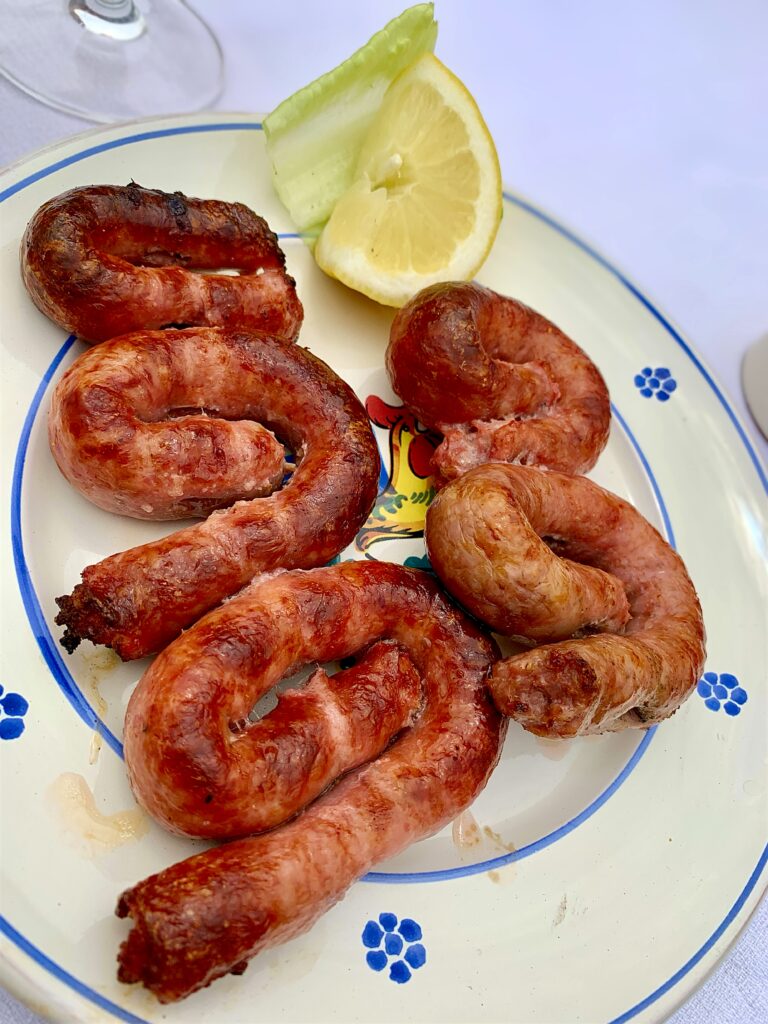

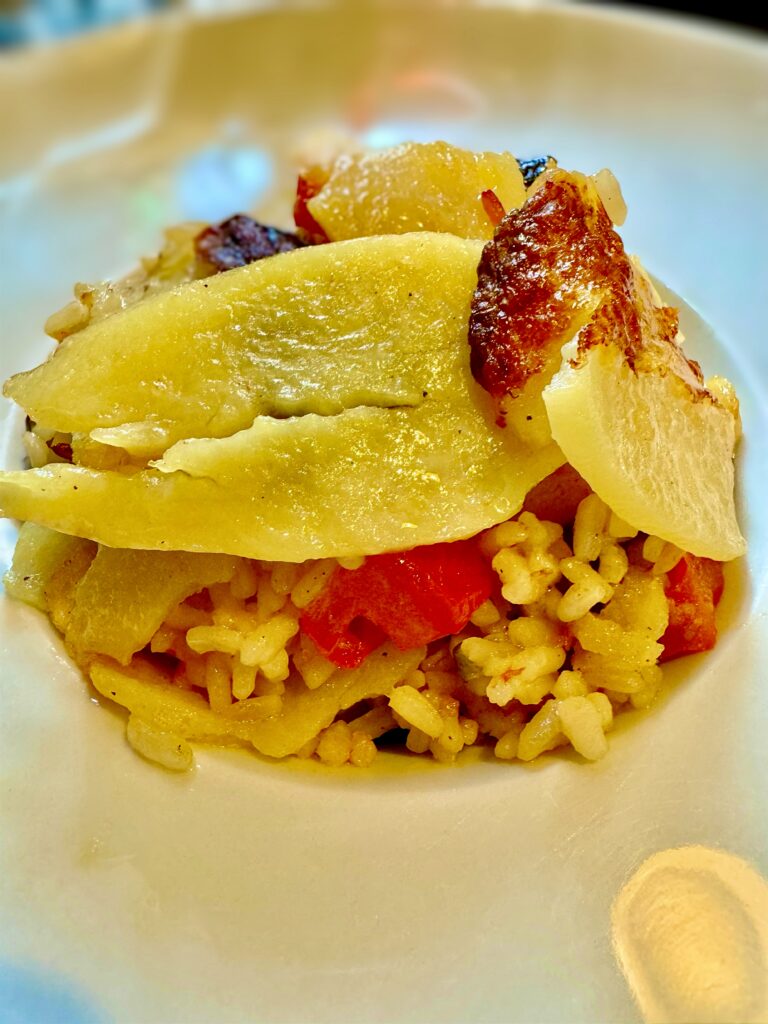
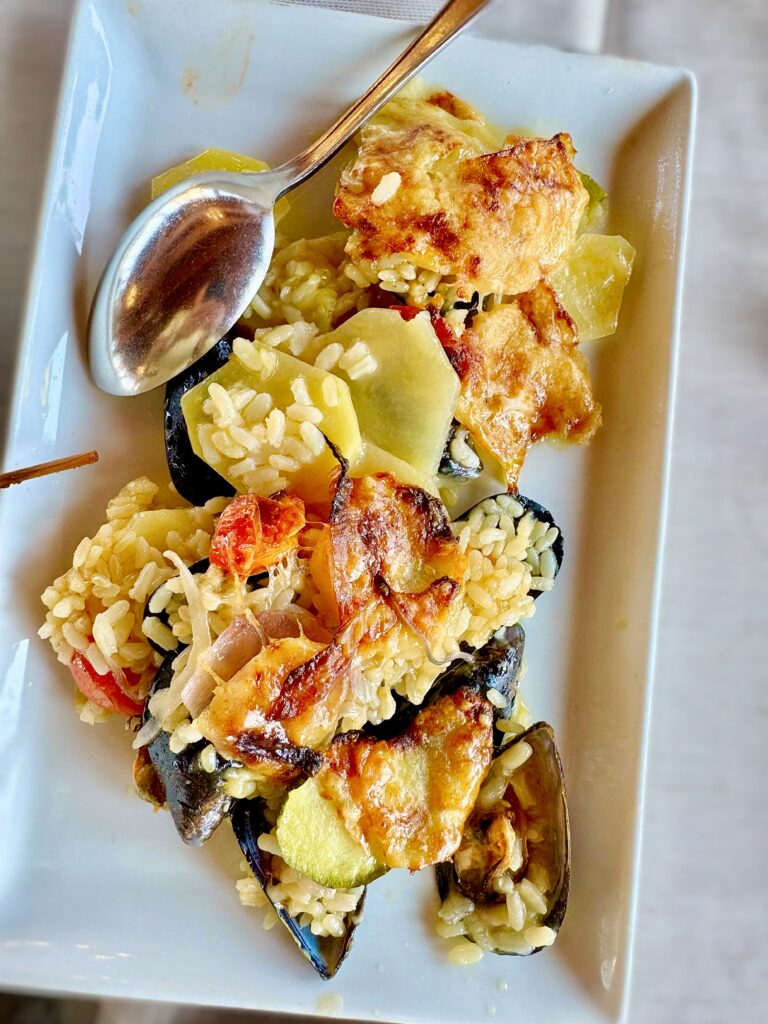

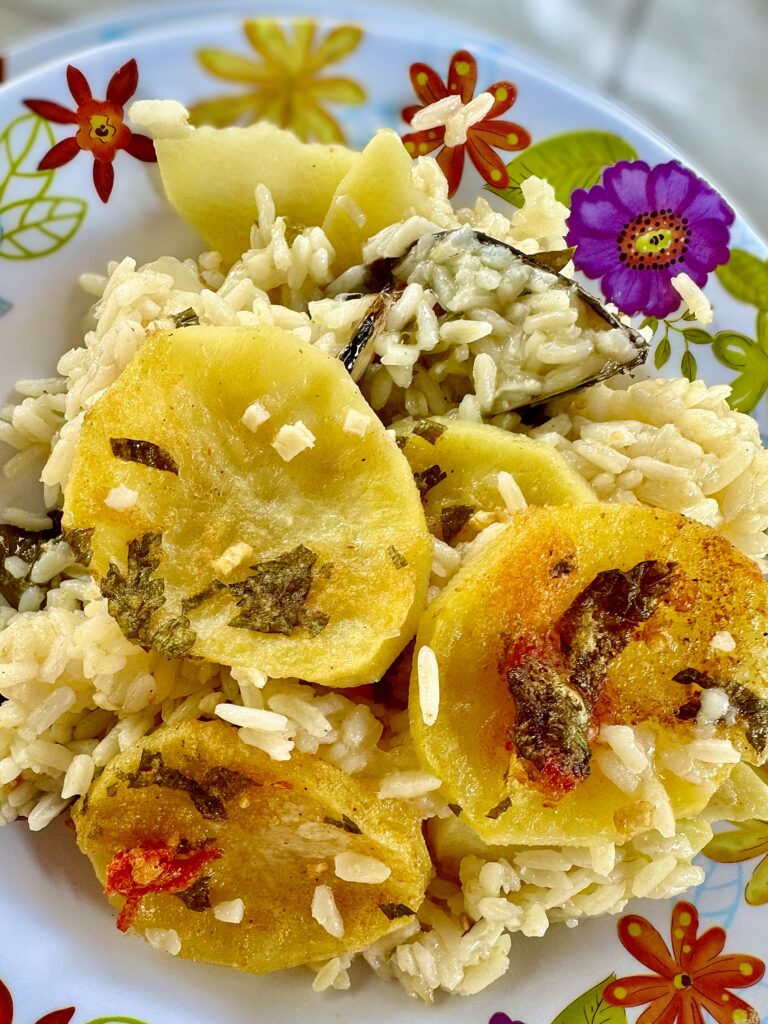
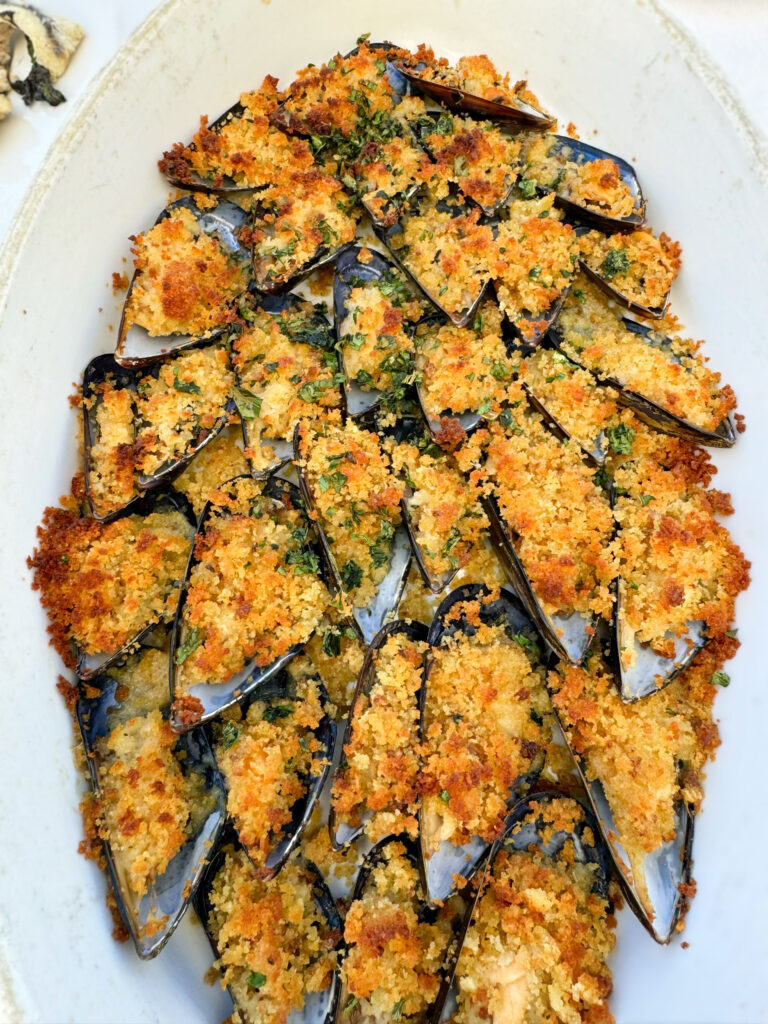
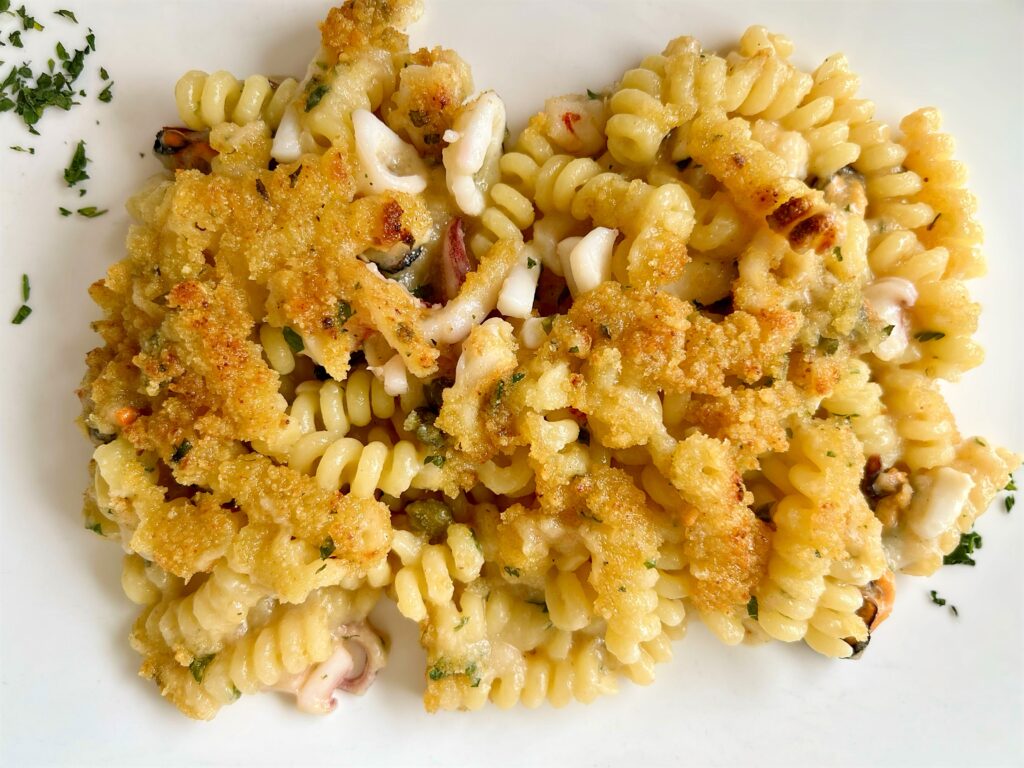
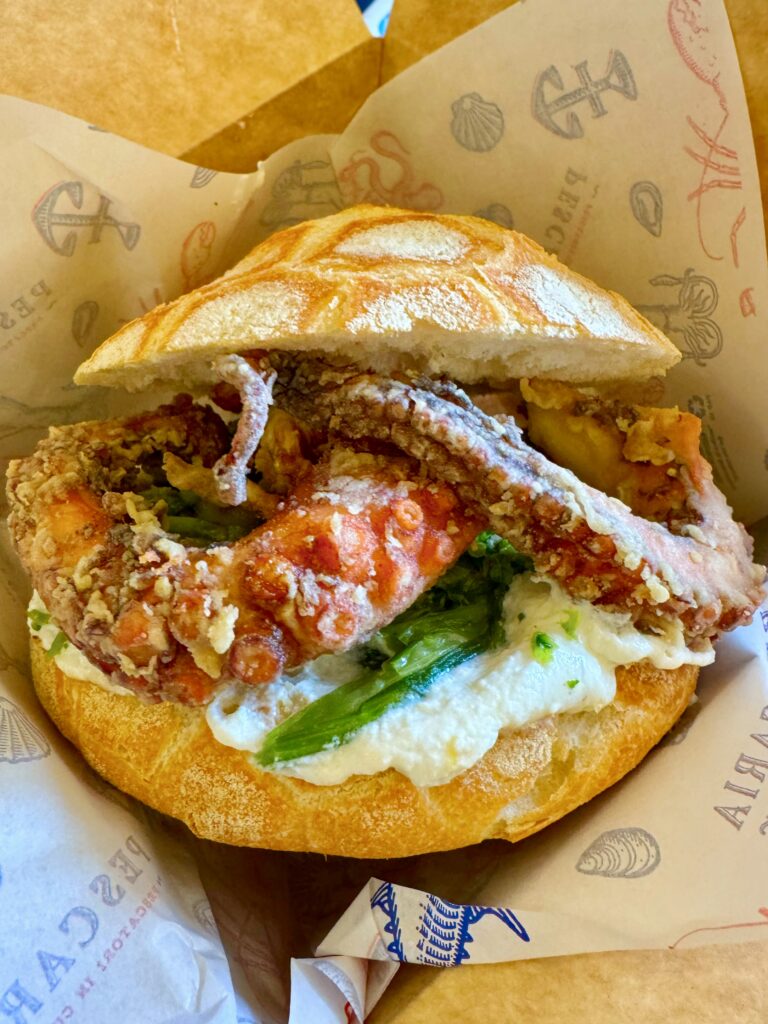
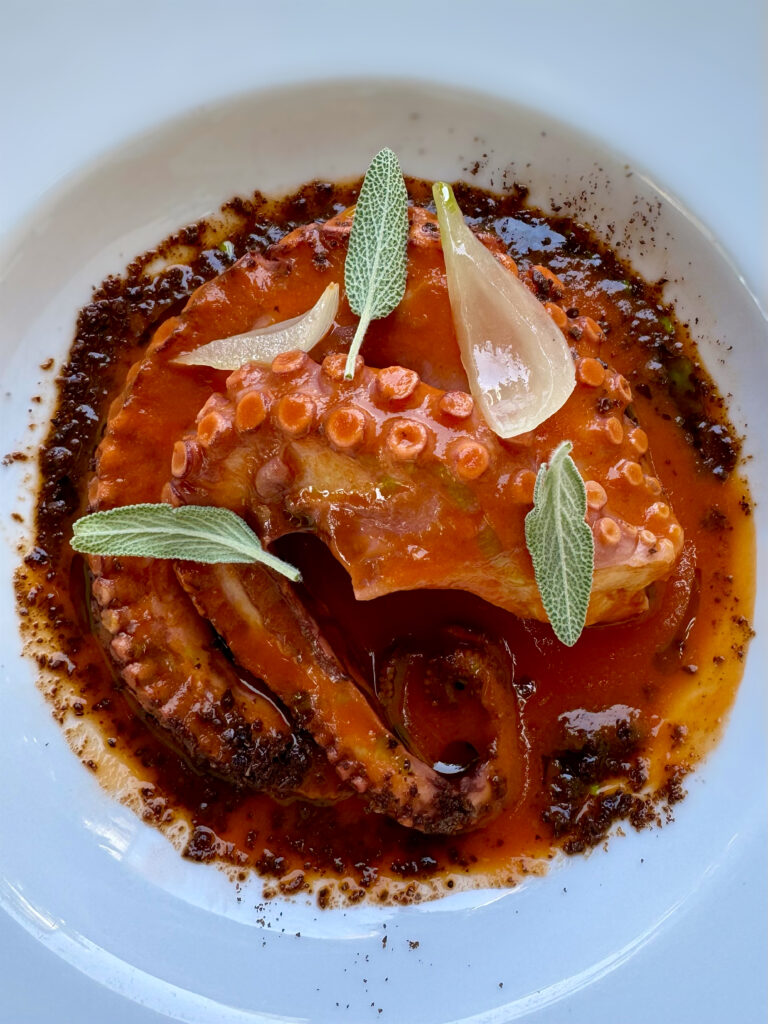
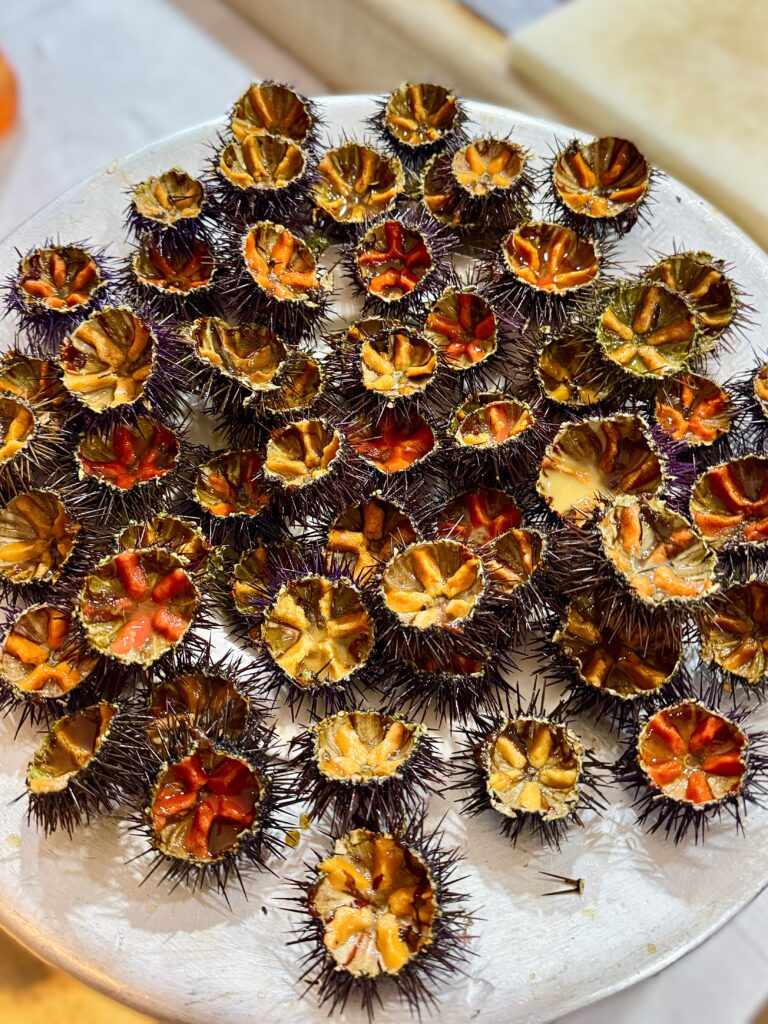
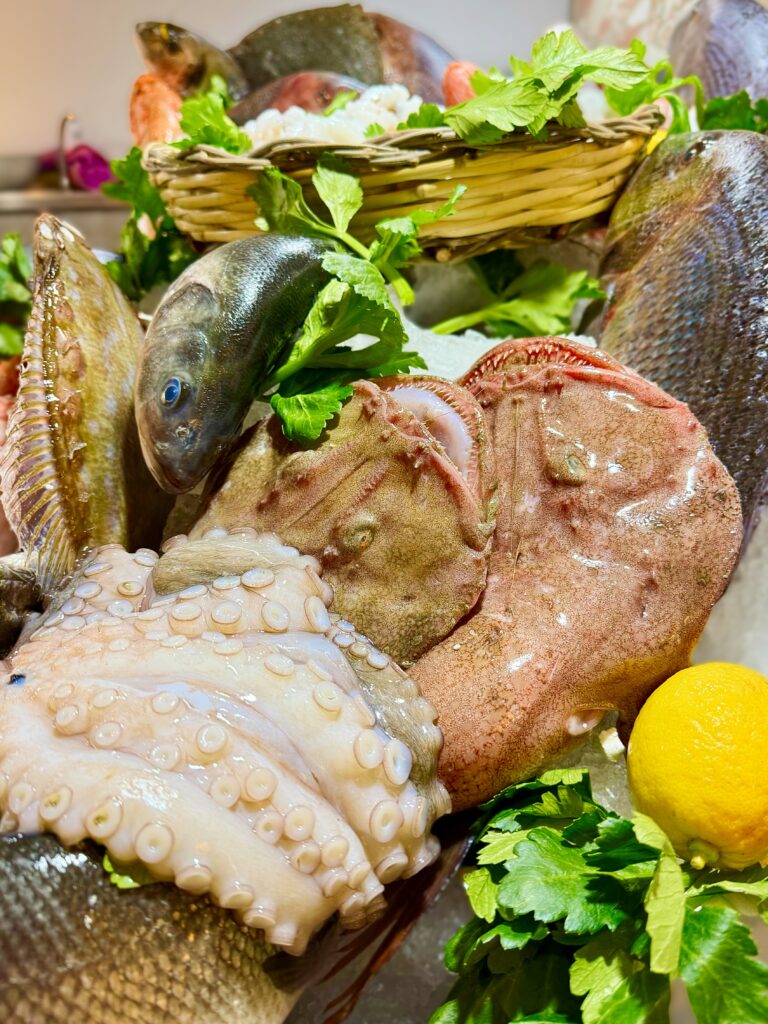

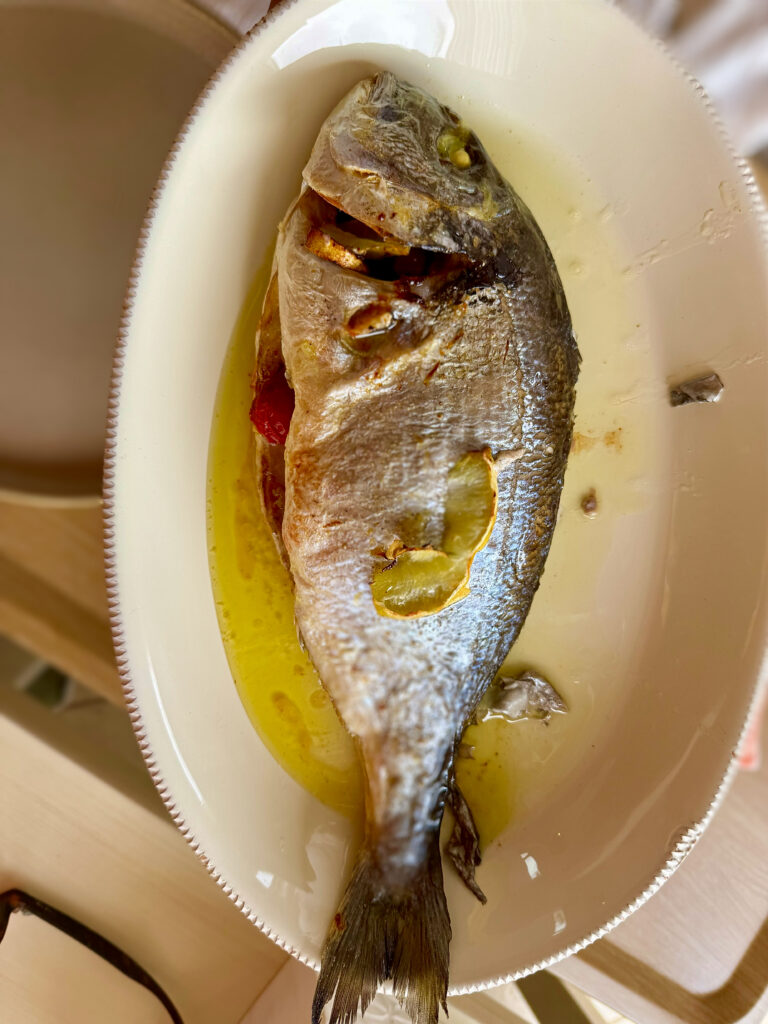

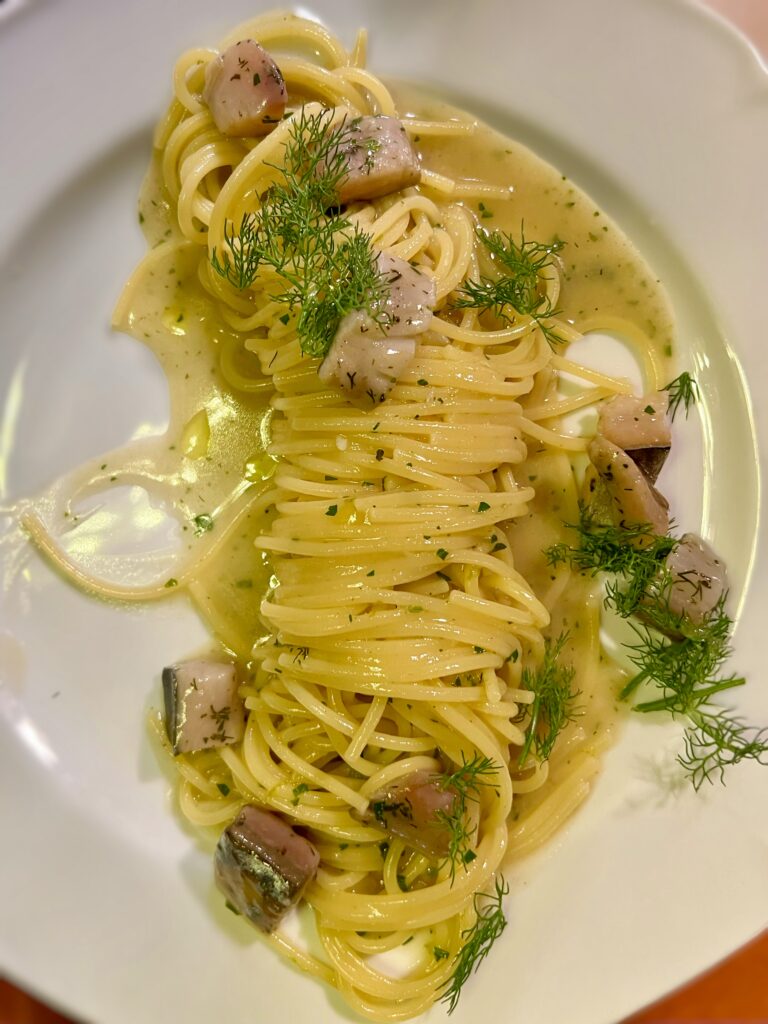
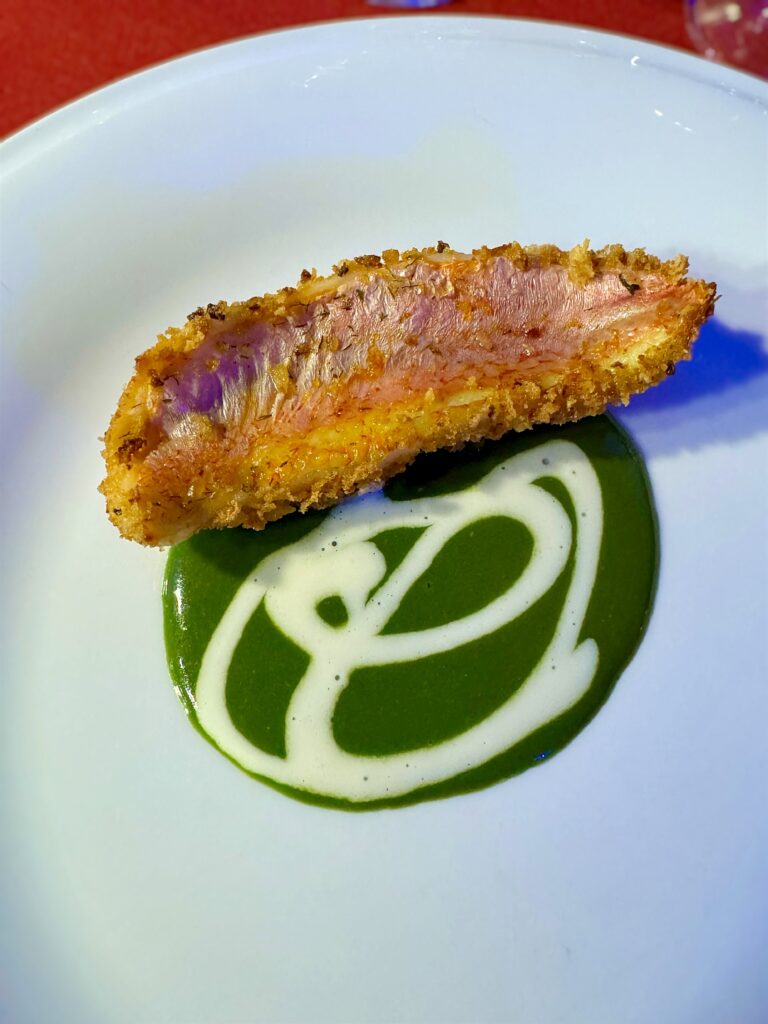
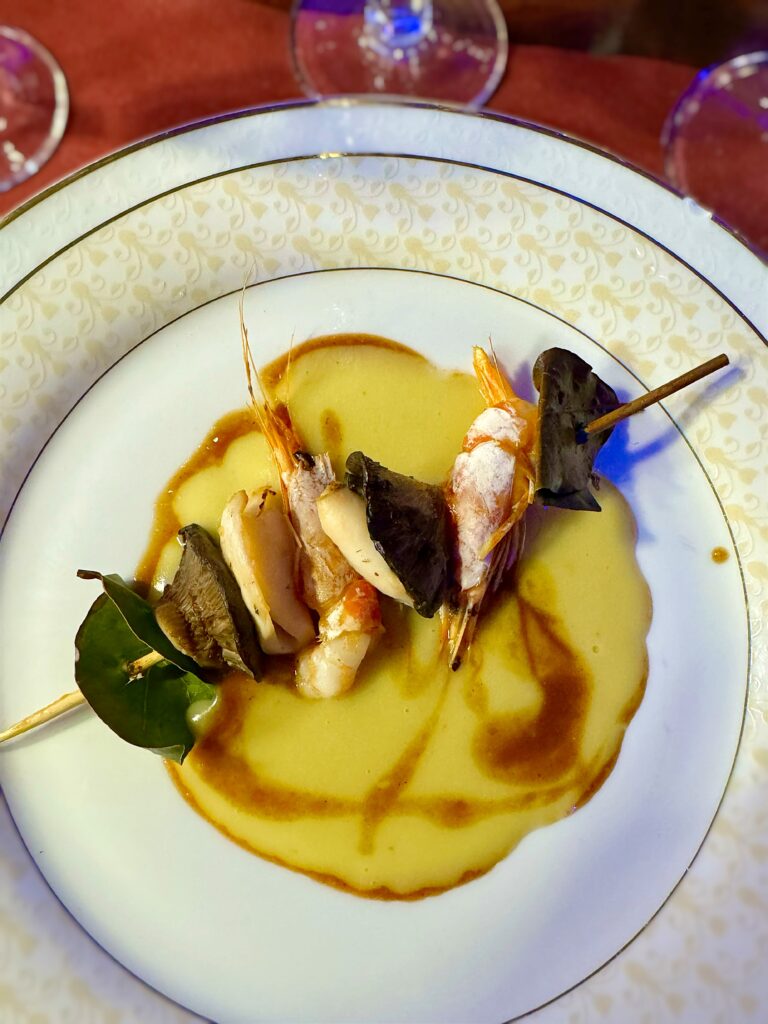

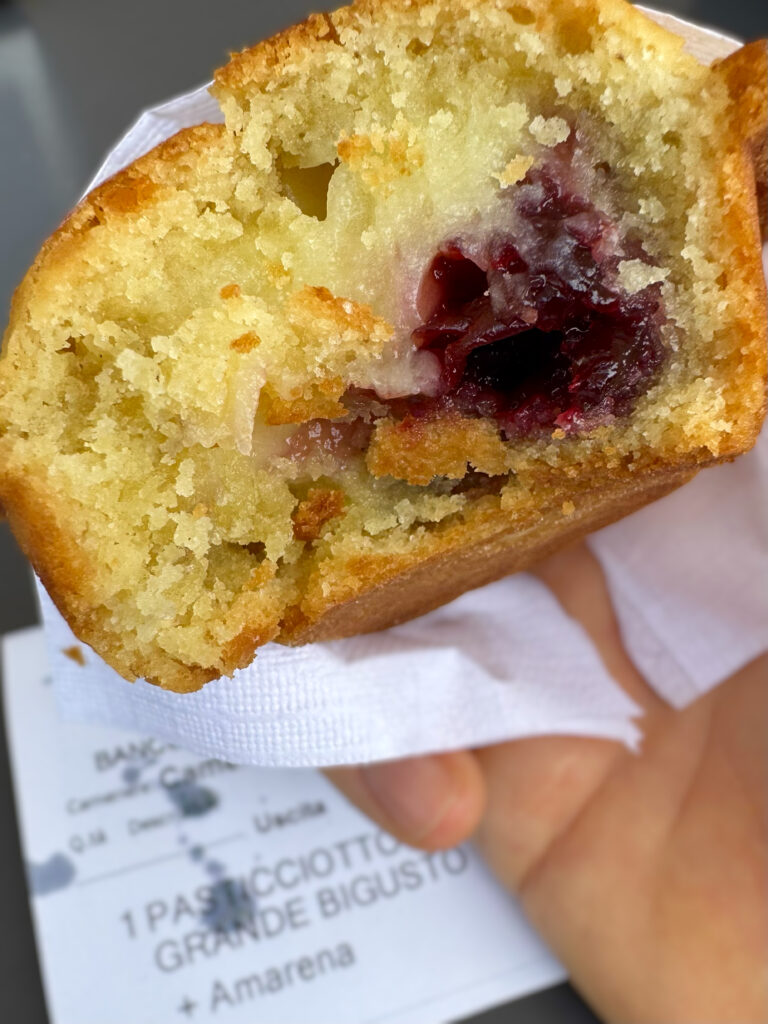
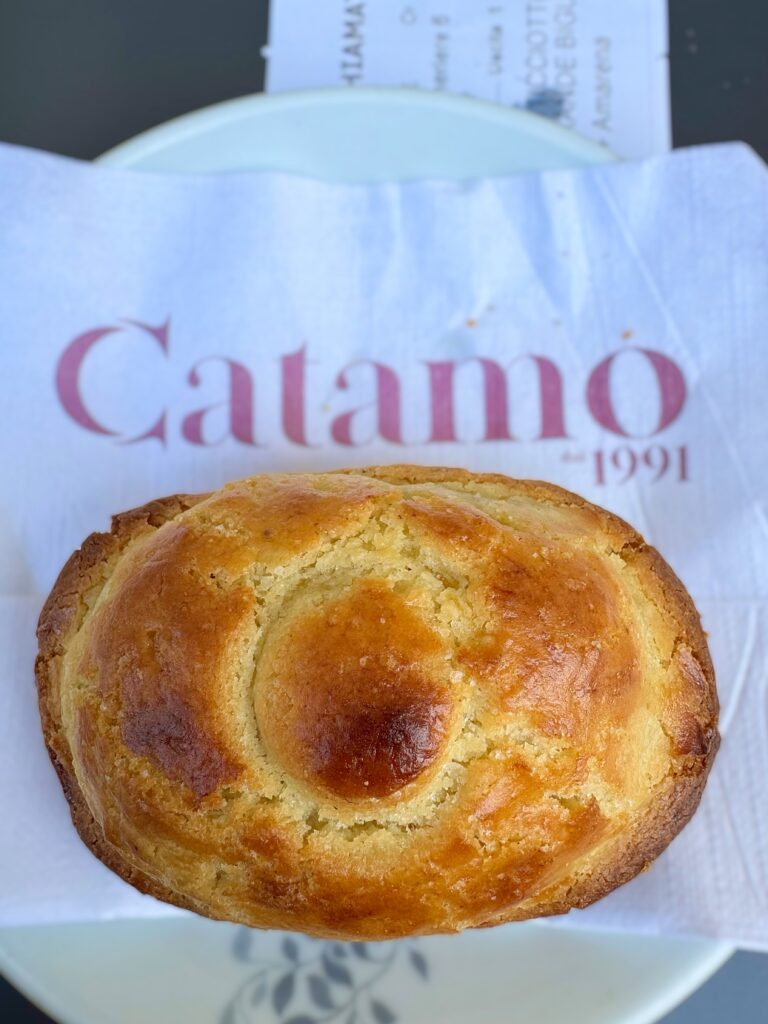


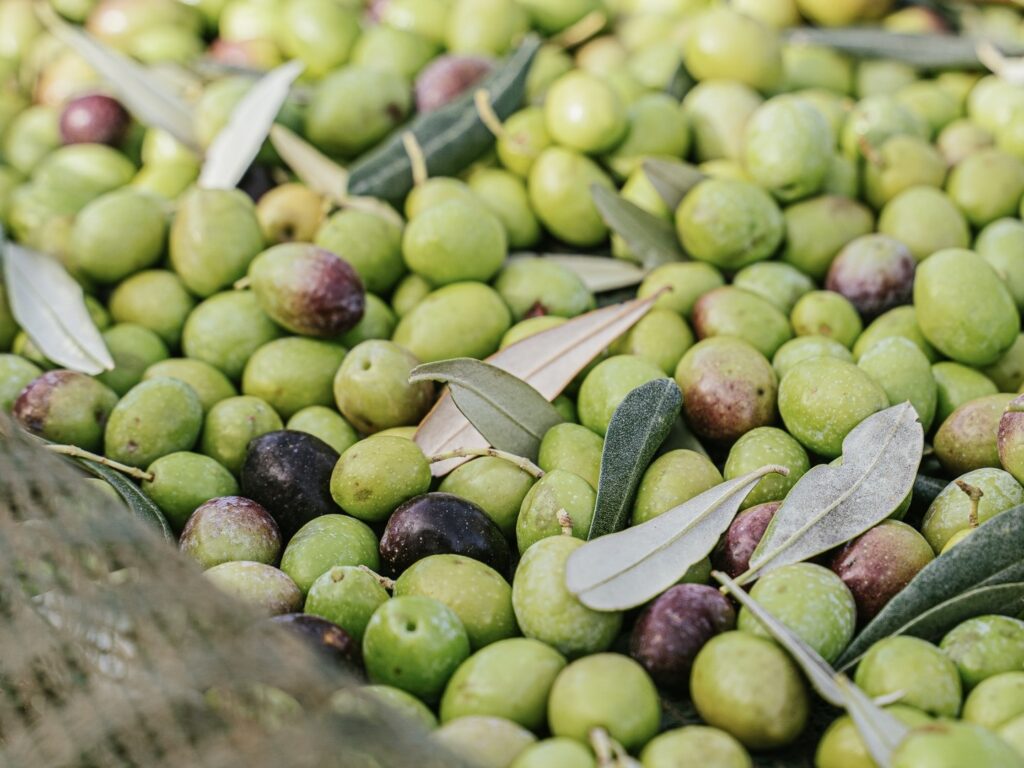
I love your web site. My Grandmother was born in santo spirito and until recently couldn’t find it. So much of your site makes me remember My Nonna. Although we’ve been to Italy many times my husband’s family is from Naples and we’ve never been to Puglia. We are going next year and can’t wait❤️
Ciao. Grazie, thanks for letting us know. Bari has grown quite considerably, but it’s a wonderful place to visit. We are sur that walking around Bari Vecchia will evoke memories of how your nonna lived when she was here. Much to look forward to – especially the food. Bari Vecchia is a favourite place of ours to eat. It’s so homely, the smell of family cooking. Much to look forward to next year.
Buone vacanze
LuigiM.